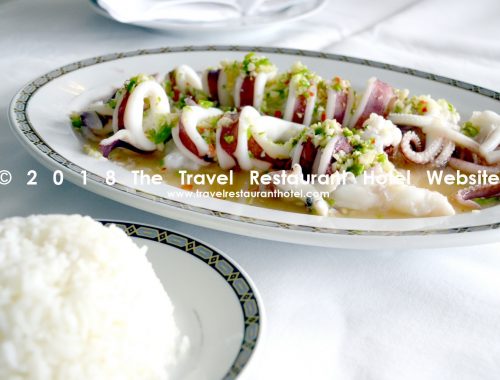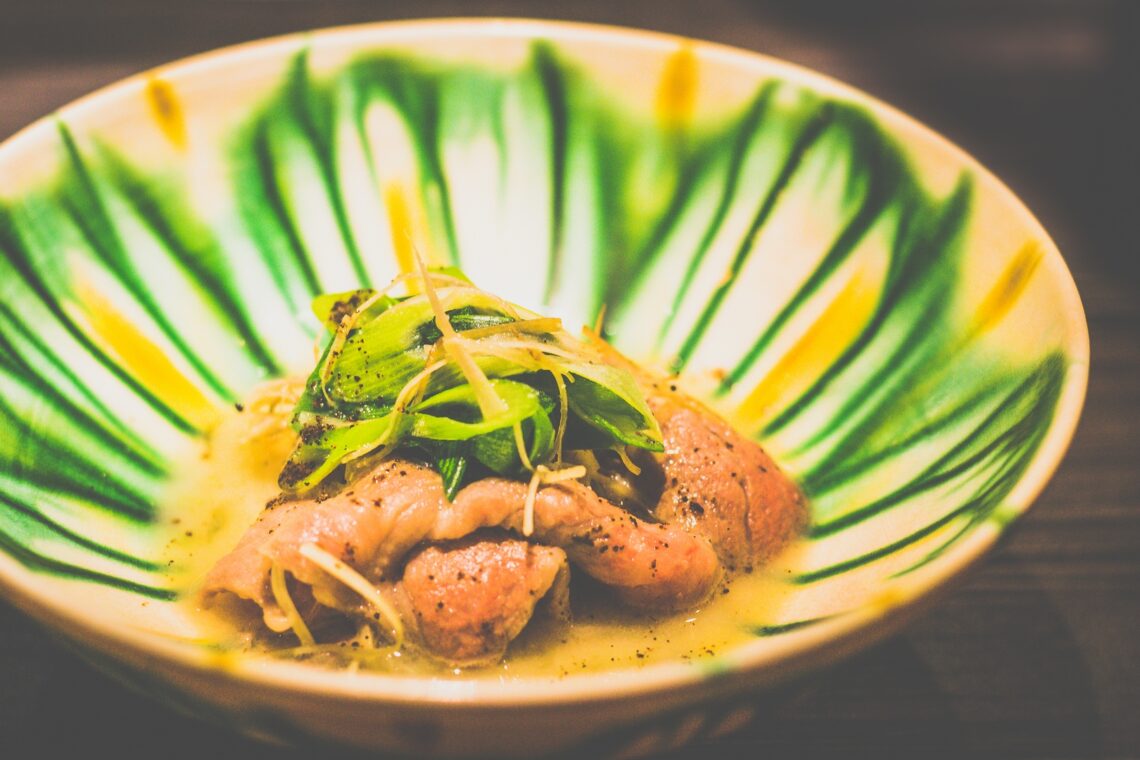
iKKAGOYO’s Winter 2024 Menu: Can a Michelin Star be Far Off?
Artisanal Perfection; Immersive Storytelling
Japanese Tradition of Honoring the Freshest Seasonal Produce; Innovative Creations
Ikkagoyo: A Masterpiece of Japandi Perfection and Kaiseki Dining in Singapore
A year after my first visit to Ikkagoyo, I found myself returning to experience its artisanal perfection once more. Located on Amoy Street, the restaurant’s entrance is quietly tucked along Gemmill Lane—an inconspicuous yet fitting introduction to the elegant dining experience within. The name Ikkagoyo is inspired by a Japanese proverb that translates to “one flower opening up to five petals,” reflecting the intricate beauty and attention to detail found within every aspect of the restaurant.
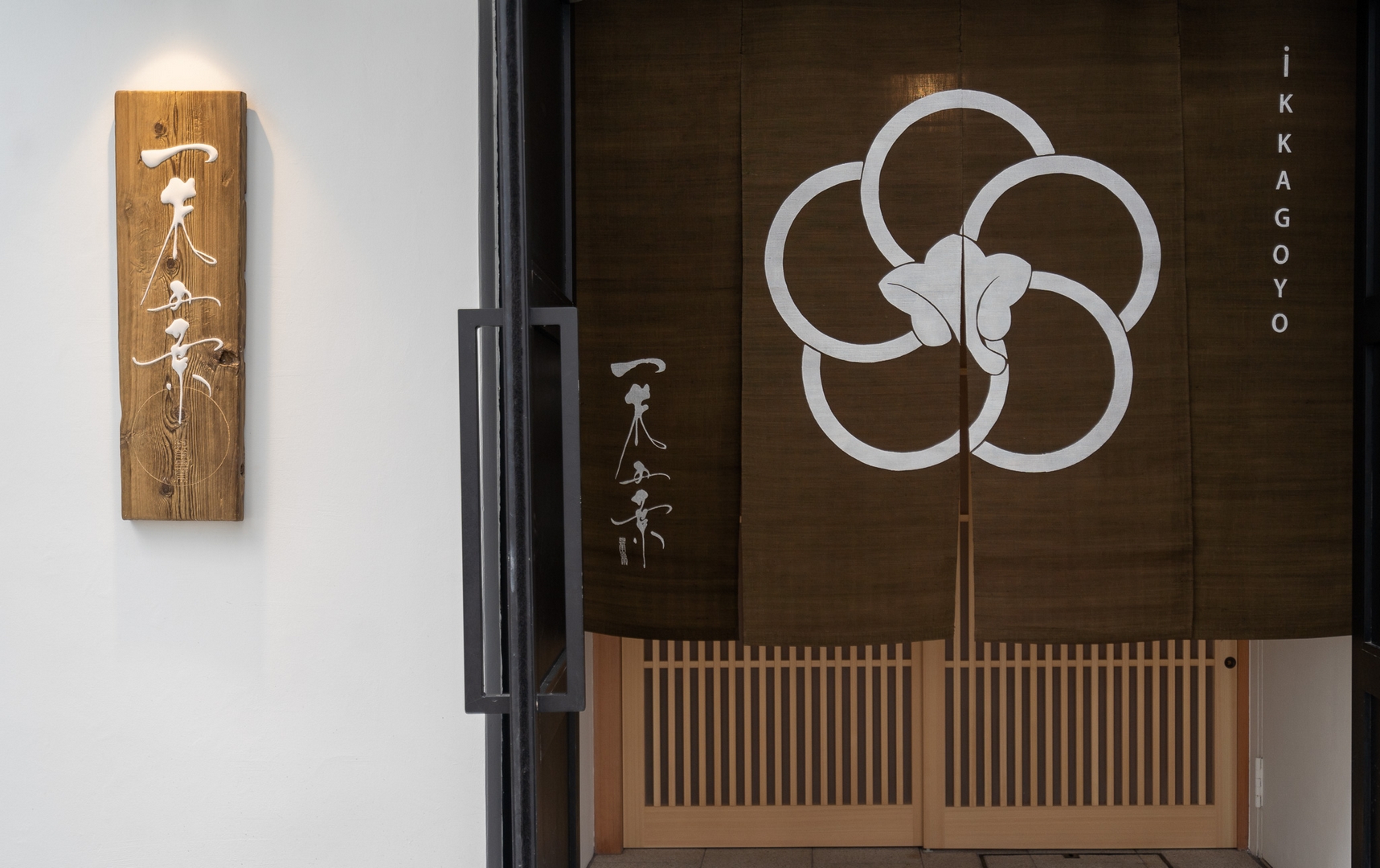
The Interior — A Masterpiece of Japandi Craftsmanship
Ikkagoyo is widely regarded as one of the most beautiful restaurants in Singapore, often grouped with other elite establishments like Noa Lounge and Caffe Italia. The interior is a stunning example of Japandi design— the interior is almost entirely clad in wood or bamboo, even the bathroom. Such is the dedication to storytelling through its design. The atmosphere is calm and serene, with every element thoughtfully crafted to enhance the dining experience.
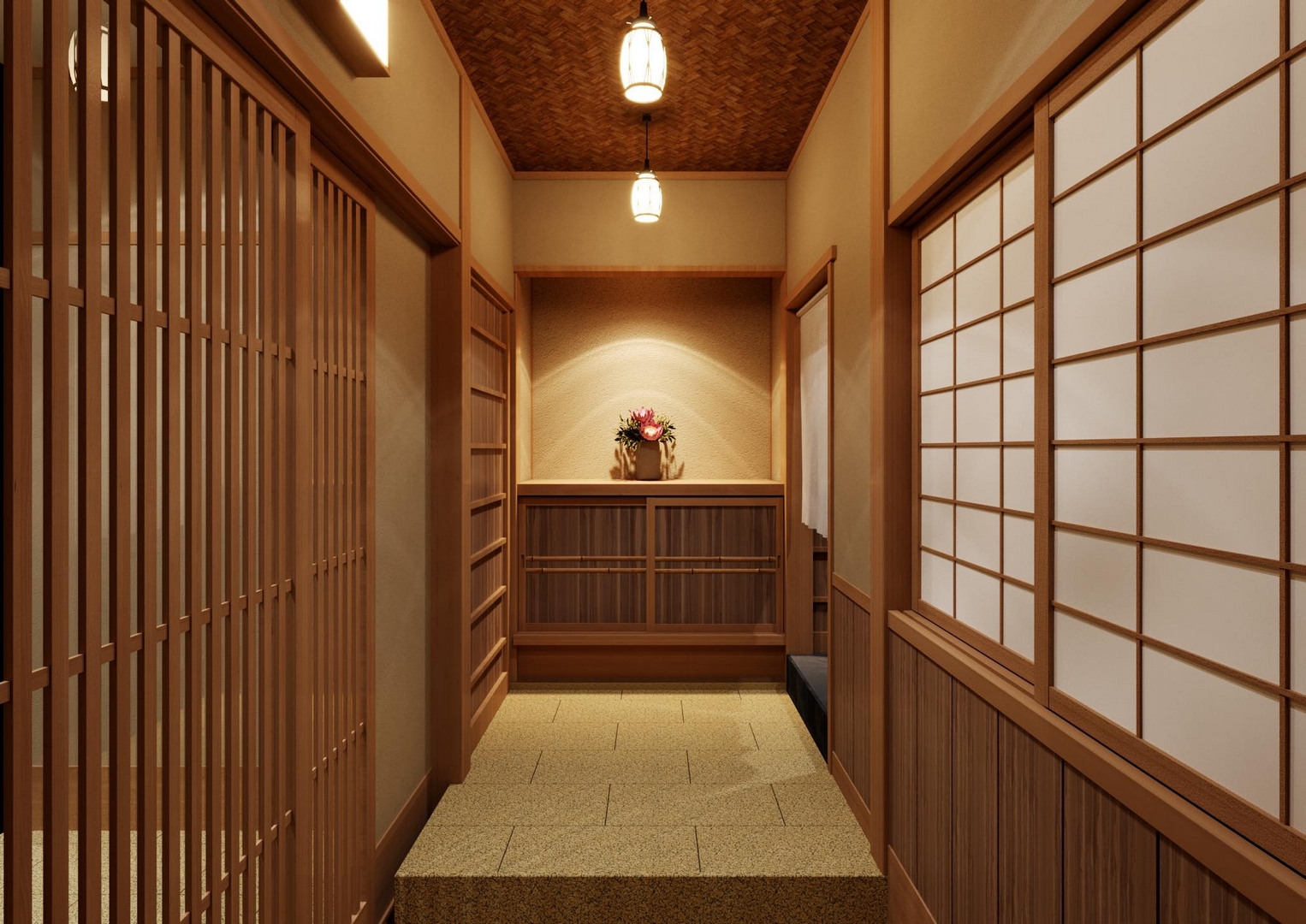
The restaurant’s centerpiece is a beautiful wooden counter, made from a century-old Yoshino cypress tree, which exudes a sense of timeless craftsmanship. Above it hangs an intricate bamboo wickerwork ceiling, a traditional Japanese technique that adds to the space’s organic beauty. The backdrop is a stunning black-and-white calligraphy artwork, designed by Ms. Reiko Kai, a renowned calligrapher from Kyoto. The artwork, which includes the restaurant’s name, adds a touch of artistry and sophistication to the ambiance.
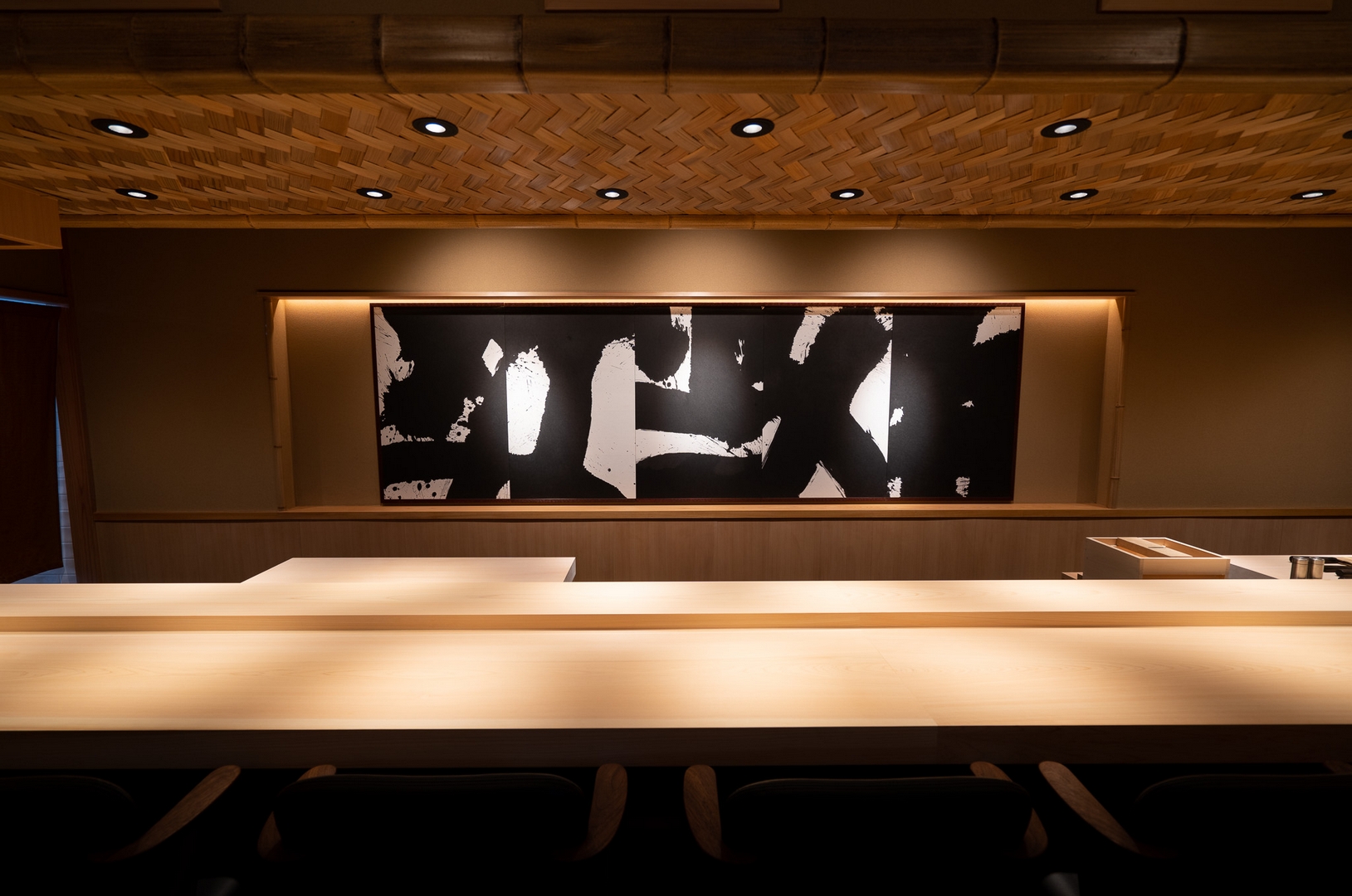
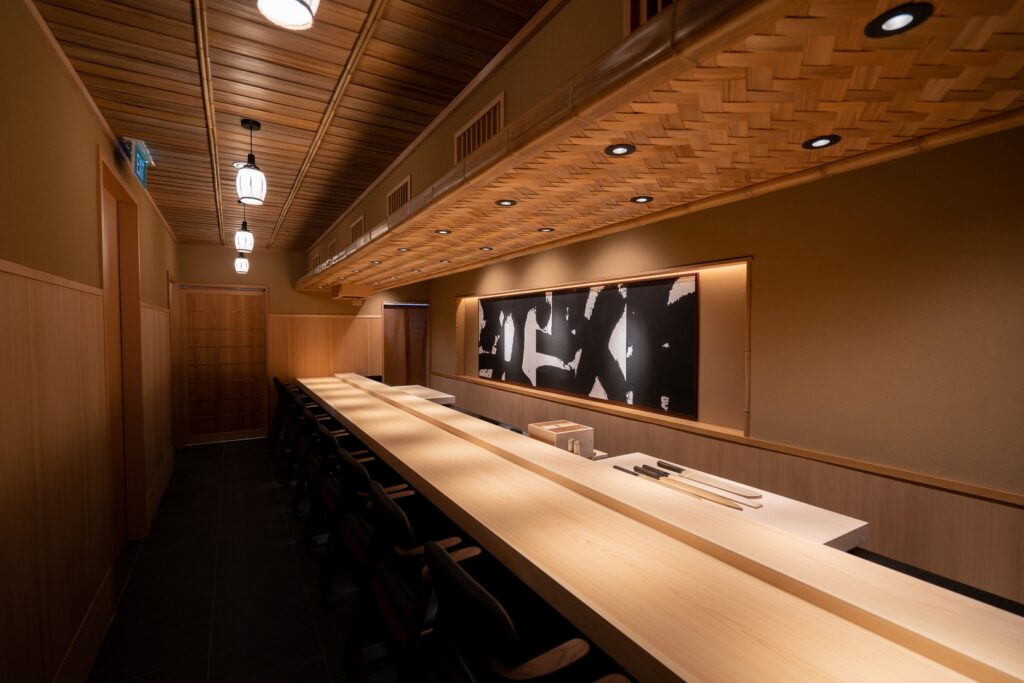
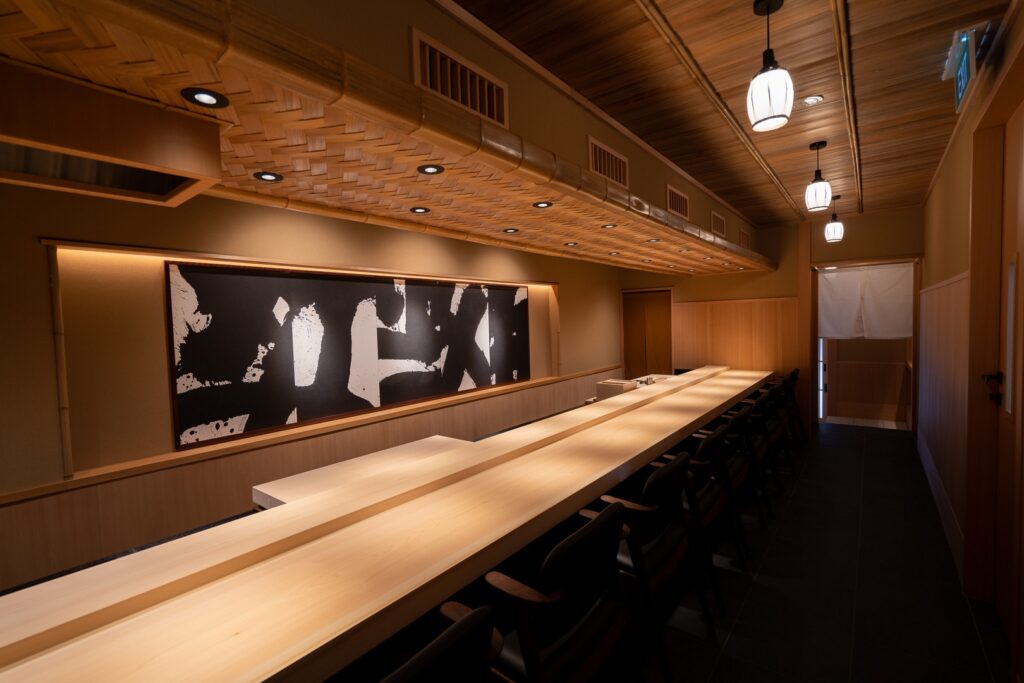
Every material used in the design of the space is imported from Japan, with particular attention to the architectural style of Sukiya-zukuri—the traditional Japanese design typically associated with tea rooms. This style emphasizes simplicity and understated beauty, encapsulating the Japanese philosophy of wabi-sabi, or finding beauty in imperfection and transience. The entire space is a tribute to this philosophy, providing a serene and authentic dining environment.

A Culinary Visionary — Chef Mitsutaka Sakamoto of Four Michelin Stars
Chef Mitsutaka Sakamoto, a culinary master with over 20 years of experience, has dedicated his life to perfecting Japanese cuisine. Renowned for his exceptional skills, he earned four Michelin stars at HYAKURAKUSO in Ishikawa Prefecture in both 2016 and 2021, where he serves as director and executive chef. His passion for showcasing the authentic charm of Japanese food and culture has driven him to share his craft with the world.
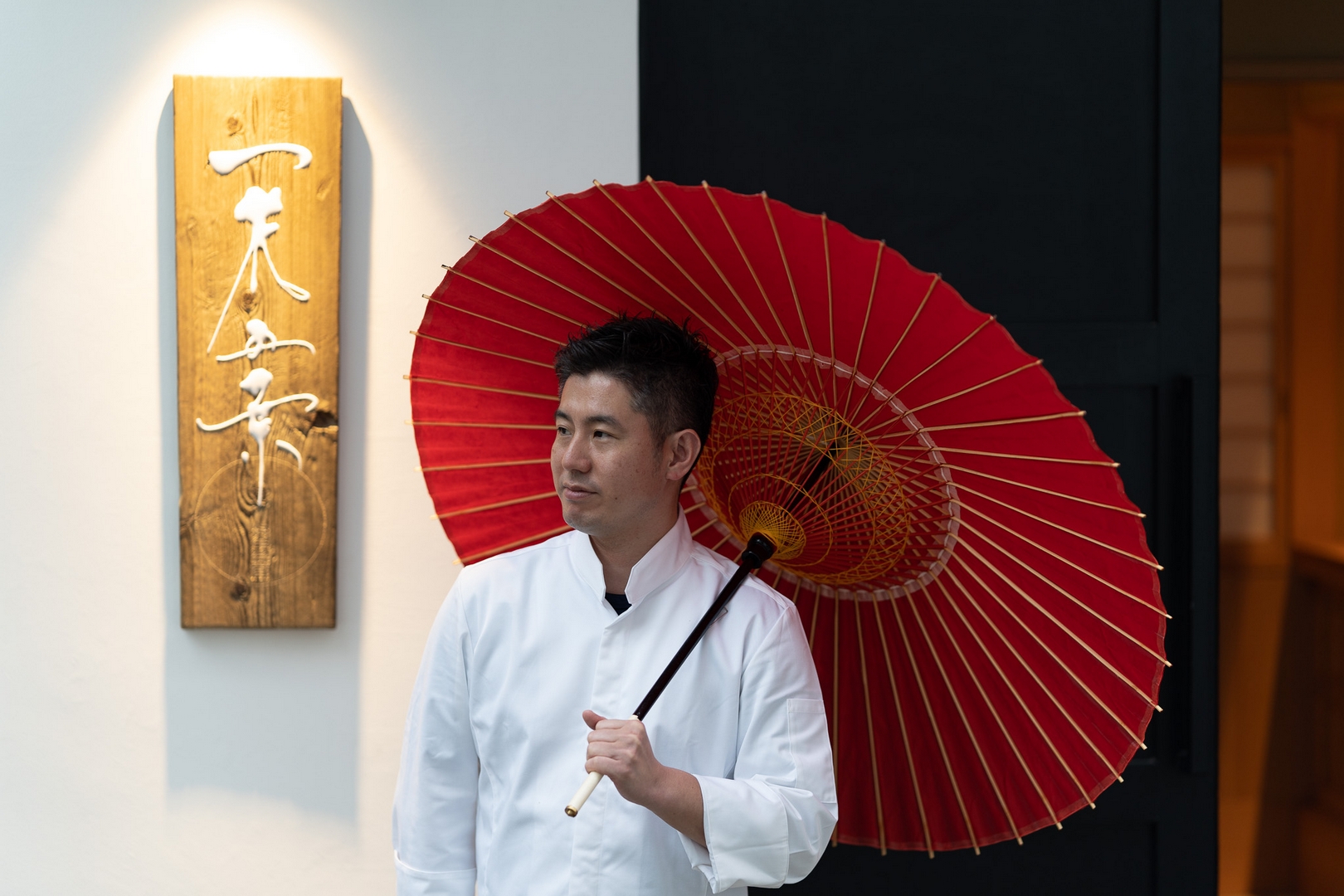
Chef Sakamoto’s culinary journey began in 1999, after graduating from high school, when he decided to pursue a career in cooking. He started his training at the prestigious KAGAYA, renowned as one of Japan’s top ryokan (traditional inns), and continued his education in various ryokan and Japanese restaurants across Aichi, Kyoto, and Tokyo. During these formative years, he honed his skills in both cooking and the art of “OMOTENASHI” (hospitality).
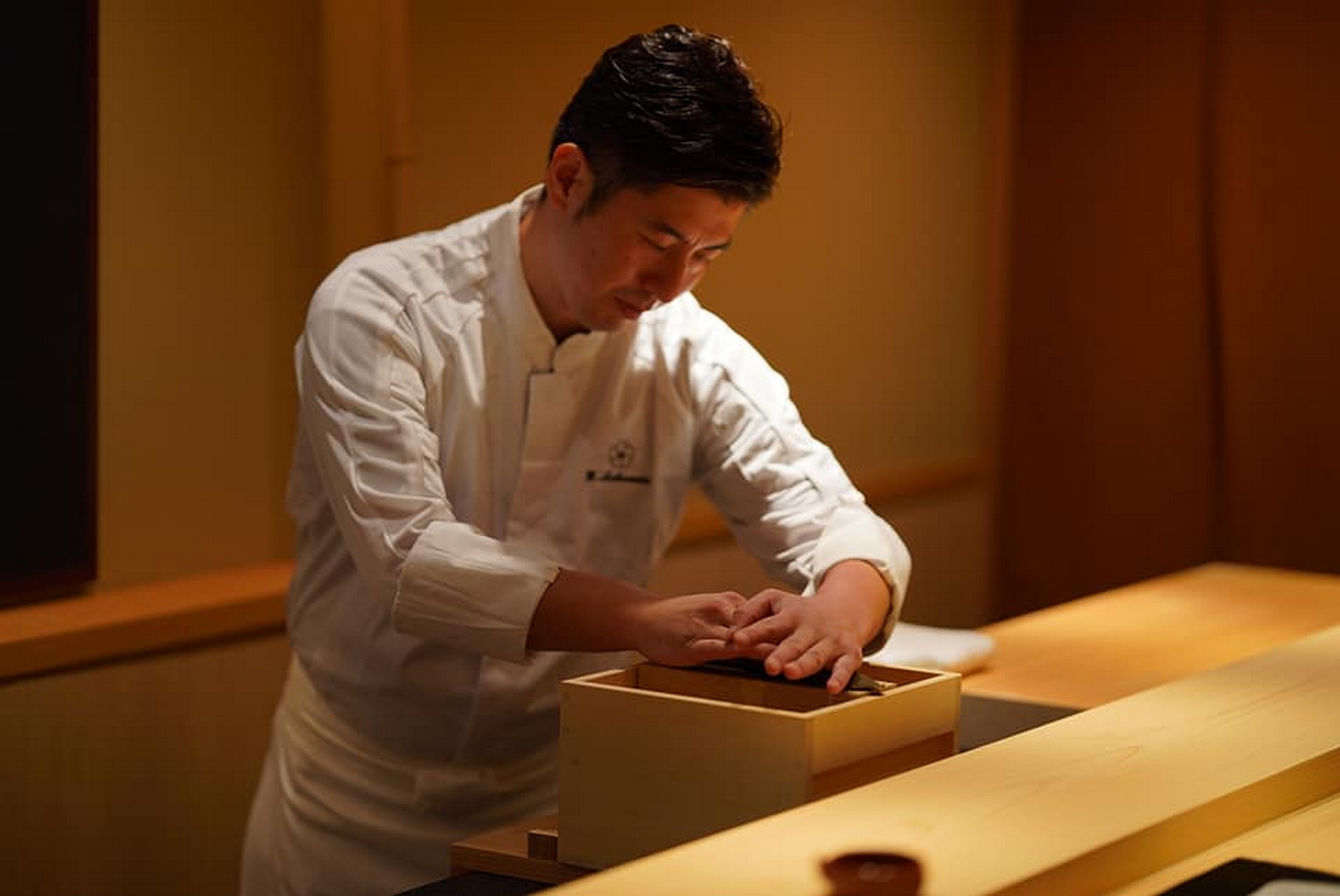
In 2011, Sakamoto took on the role of head chef at HYAKURAKUSO, a ryokan facing financial challenges. With his dedication and passion, he focused on elevating customer satisfaction by ensuring the dishes were as exceptional as the experience itself. His hard work and vision paid off when he was appointed executive chef and director in 2016, achieving the prestigious recognition of four Michelin stars.
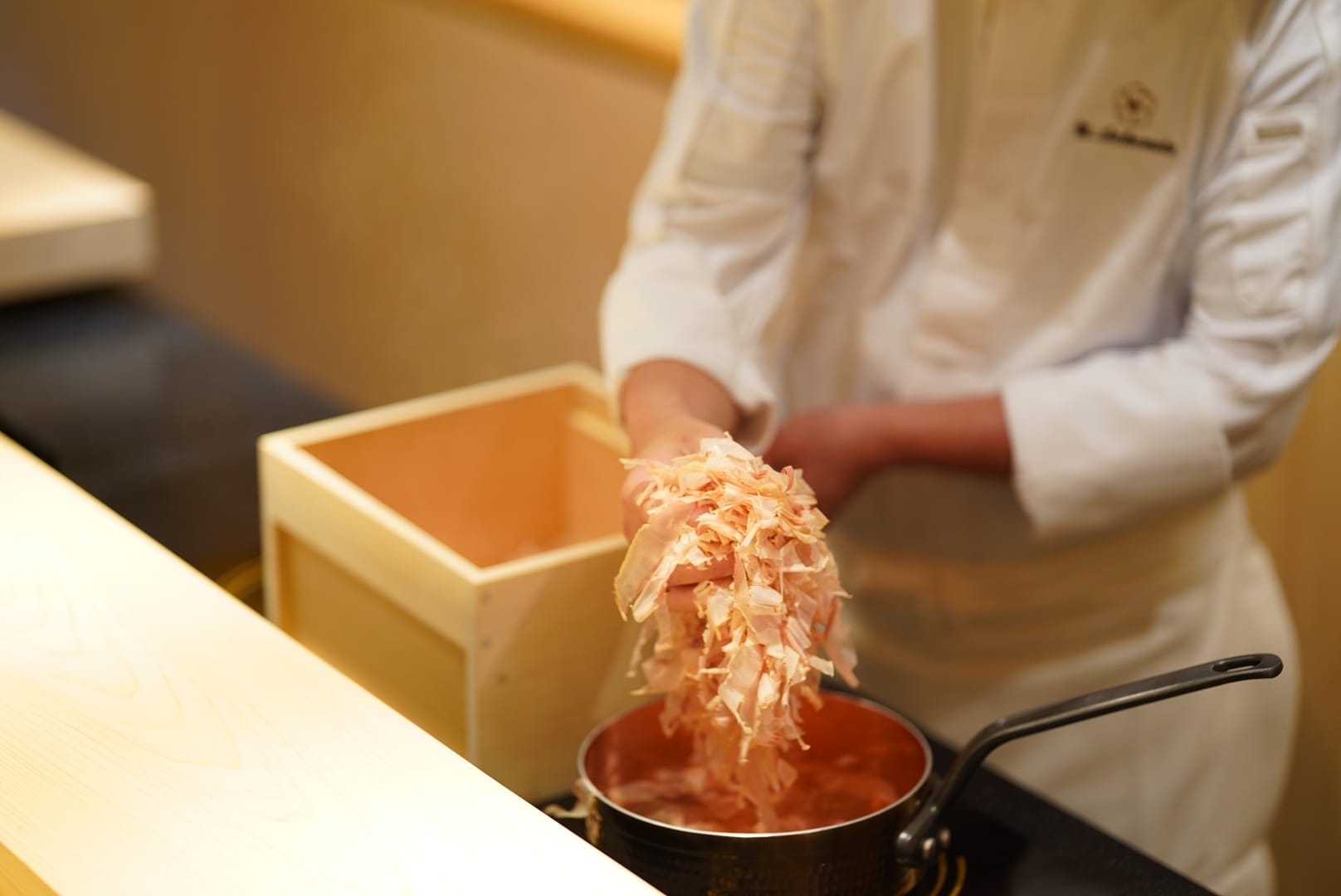
In 2022, Chef Sakamoto further expanded his expertise by studying the art of sushi at the renowned SUSHI ARAI in Ginza and deepening his understanding of tempura techniques at NARUSE, one of Japan’s most exclusive and difficult-to-book restaurants. These experiences enhanced his ability to unlock the full potential of ingredients, a philosophy that continues to define his cooking today.
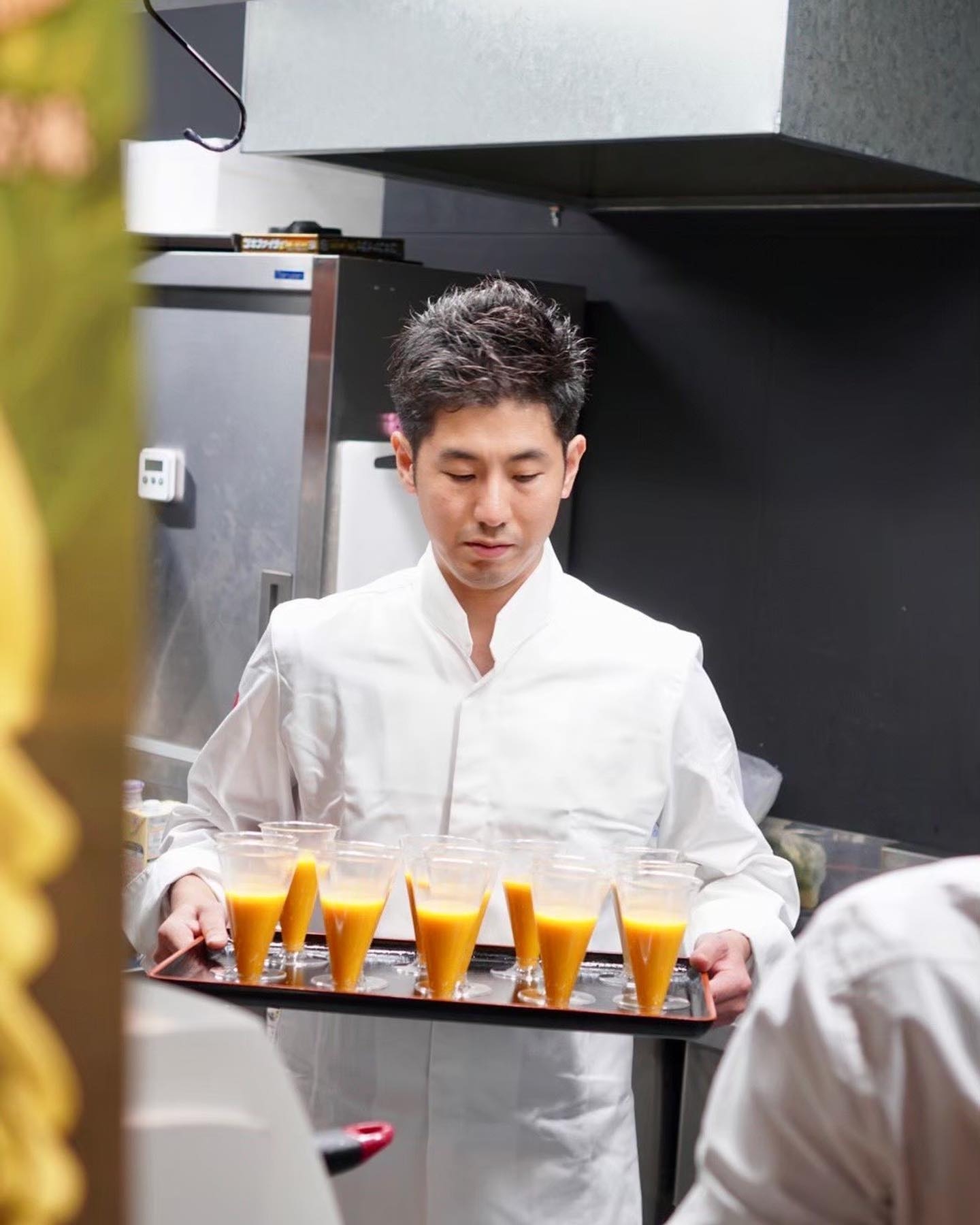
A Immersive Culinary Journey: An Exceptional Dining Experience Through Detailed Storytelling
Chef Sakamoto is highly selective about the producers and artisans he works with, ensuring that every food and décor ingredient reflects the quality and authenticity of Japanese culinary traditions. From the cypress counter to the specially crafted kaiseki trays made by a lacquerware store in Japan, Sakamoto has spared no expense in ensuring the highest level of craftsmanship at Ikkagoyo. This attention to detail extends to the dining experience itself, where every dish is carefully prepared to highlight the natural flavors of the ingredients.
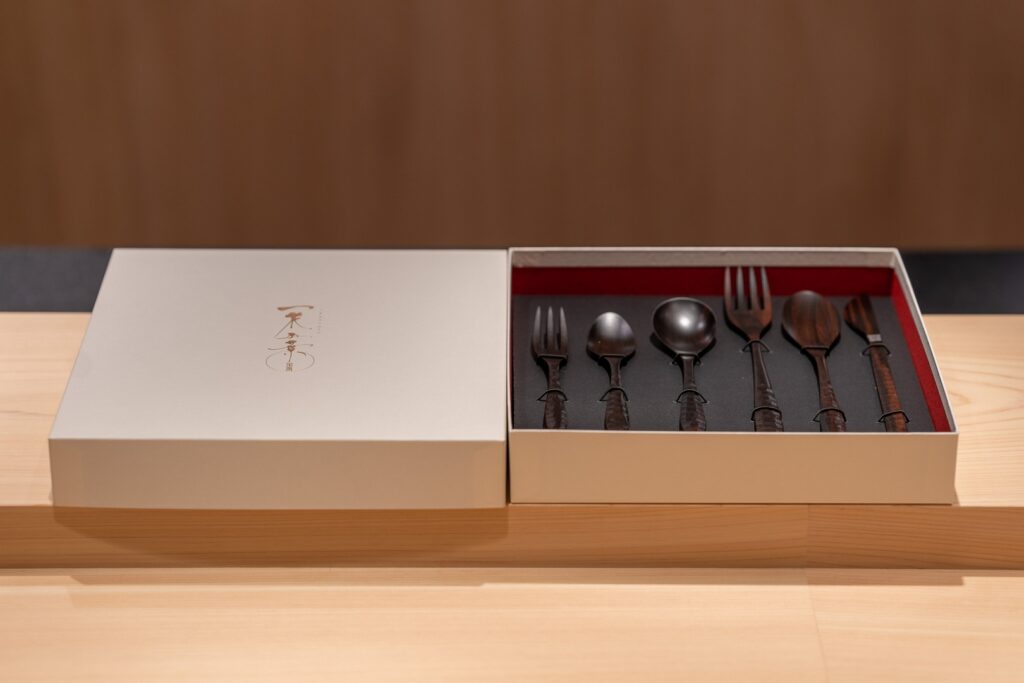
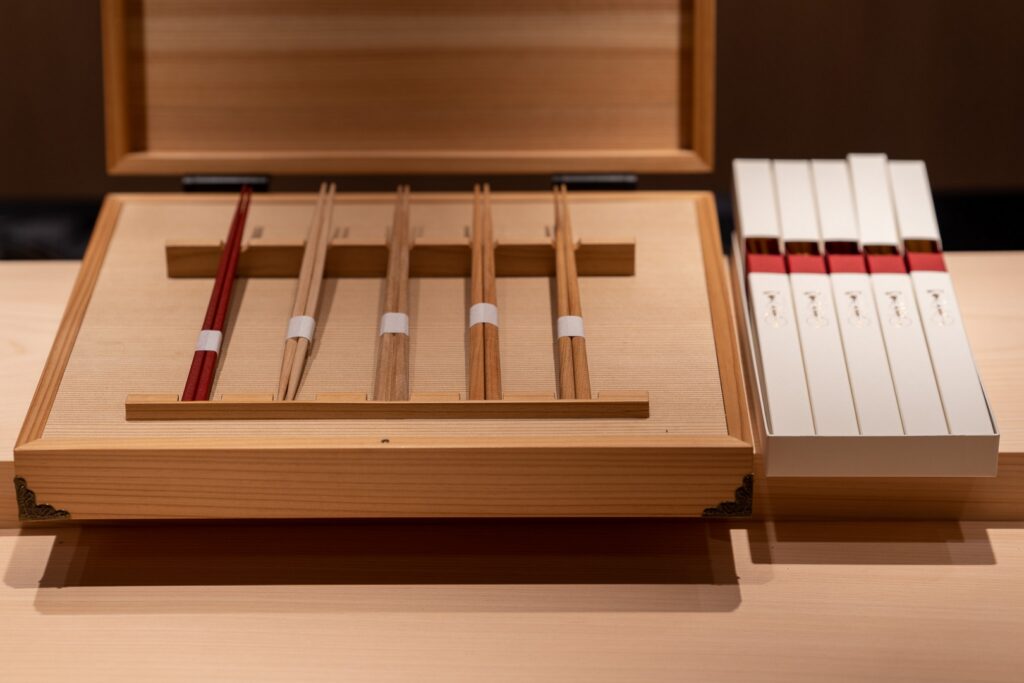
In keeping with the ethos of omotenashi—the Japanese art of hospitality—Chef Sakamoto’s menu goes beyond just food; it is a celebration of Japanese culture, craftsmanship, and artistry. His deep respect for the artisans and producers he collaborates with is evident in the sheer detail of the acknowledgments featured on the menu, providing guests with a glimpse into the origins of the ingredients that make up each dish.
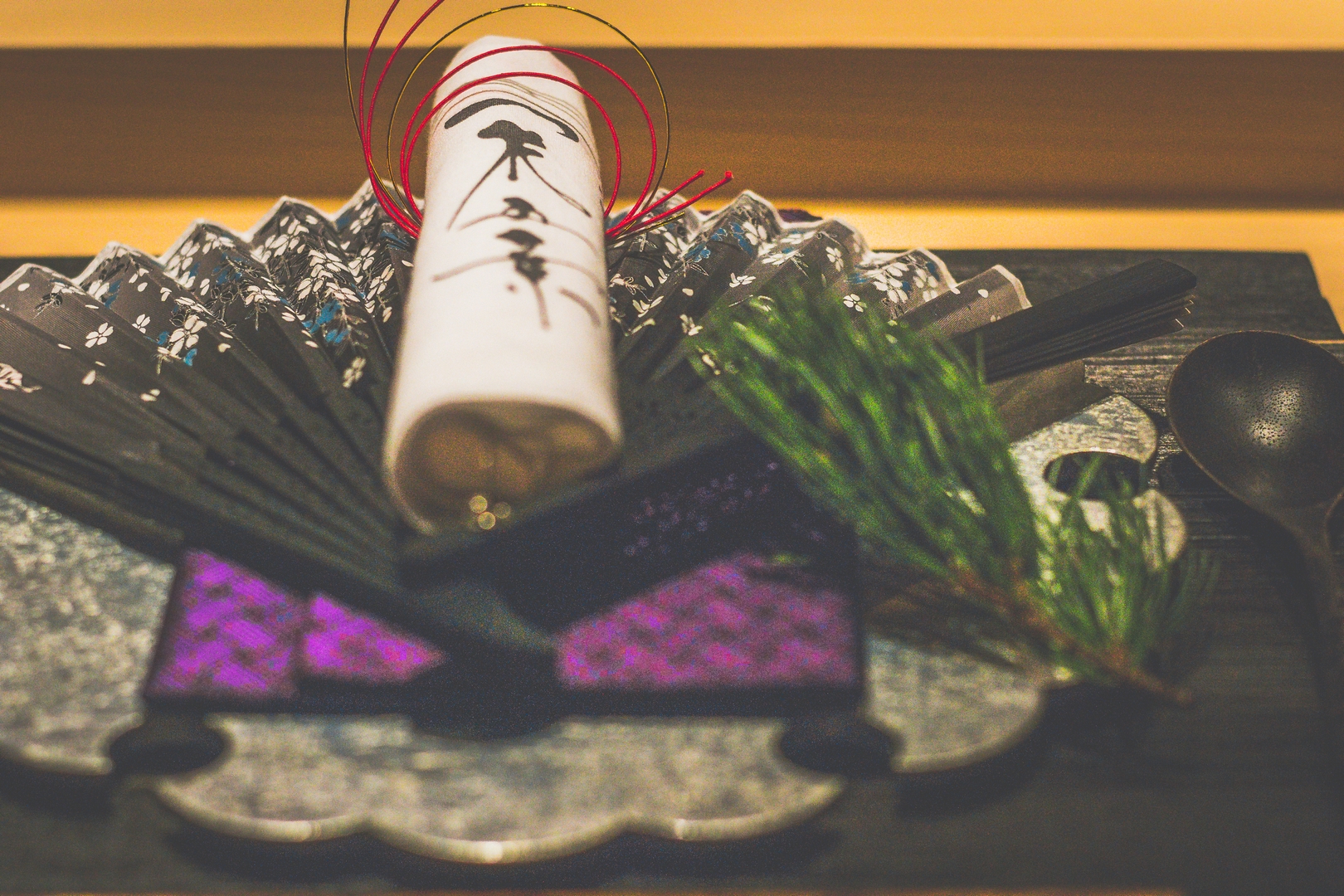
The Art of Kaiseki and Embracing Seasonal Perfection
The restaurant specializes in kaiseki, a traditional Japanese multi-course meal that emphasizes the use of the finest seasonal ingredients. Each prix fixe menu is carefully curated to highlight the peak produce of the season, reflecting the Japanese culinary philosophy that dining should honor nature’s cycles. Chef Mitsutaka Sakamoto, the visionary behind the kitchen, is dedicated to bringing the authentic flavors of Japan to Singapore, ensuring that every dish embodies the essence of seasonal quality and culinary excellence.
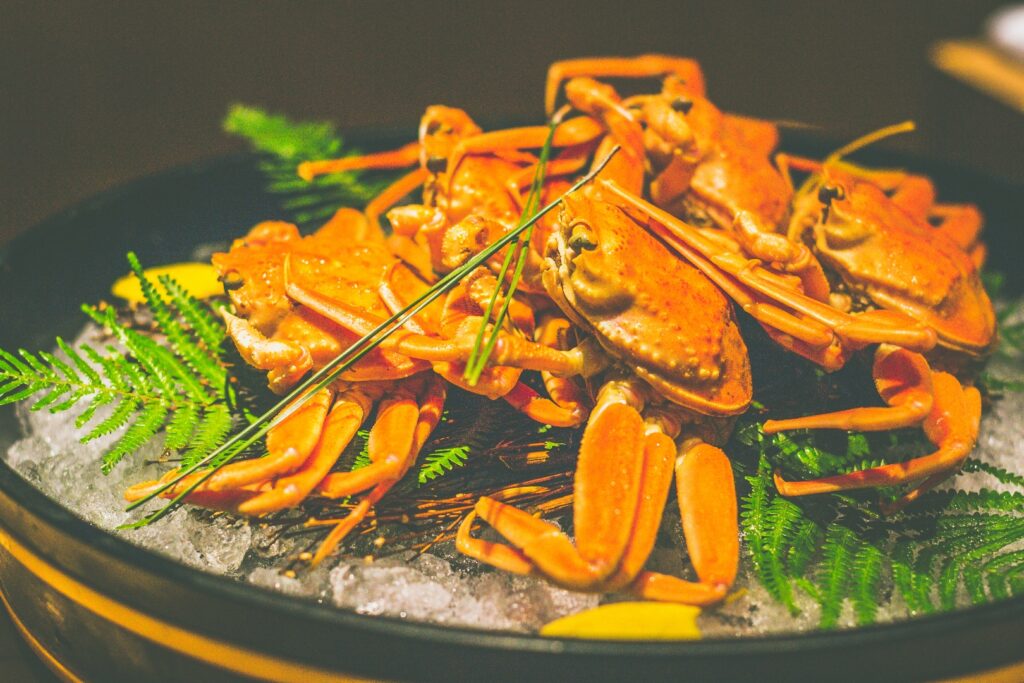
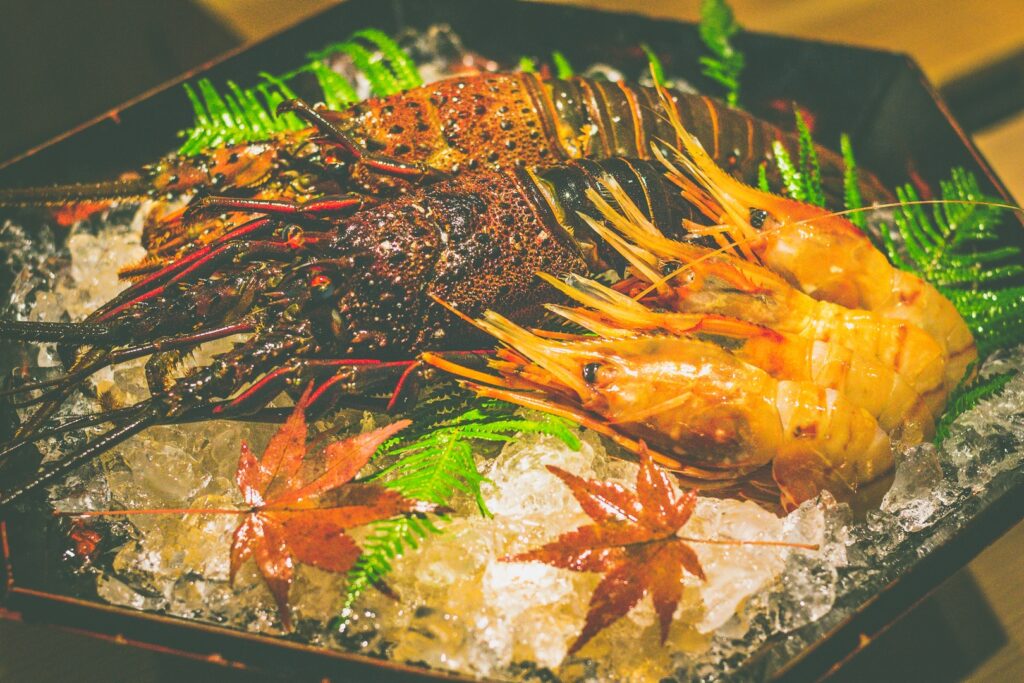
S$338++ Chef’s Omakase Course
KINMEDAI
Turnip / Yuzu
This exquisite dish of Kinmedai, or golden eye snapper, is a true testament to the delicate balance and thoughtful composition that defines Japanese haute cuisine. The fish is prepared with impeccable care, its tender, flaky flesh offering a mild sweetness that stands out with every bite. Served in a beautifully light soup, the Kinmedai is immersed in a flavorful yet subtle broth, allowing the natural essence of the fish to shine without being overwhelmed. The soup itself has a gentle depth, enhancing the fish’s flavor and providing a warm, comforting base to the dish.
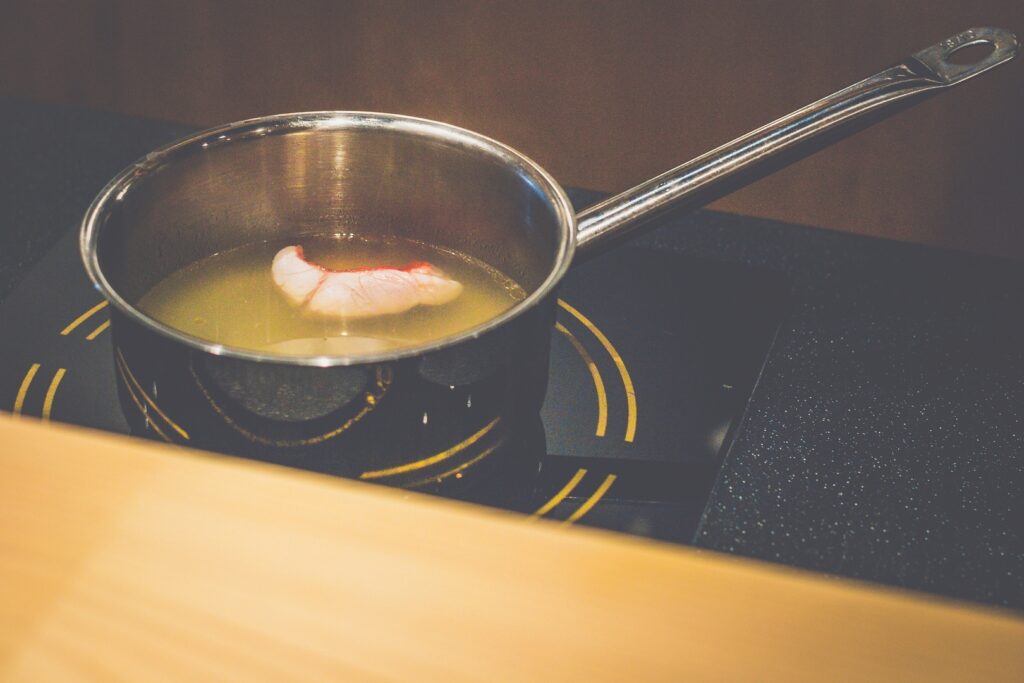
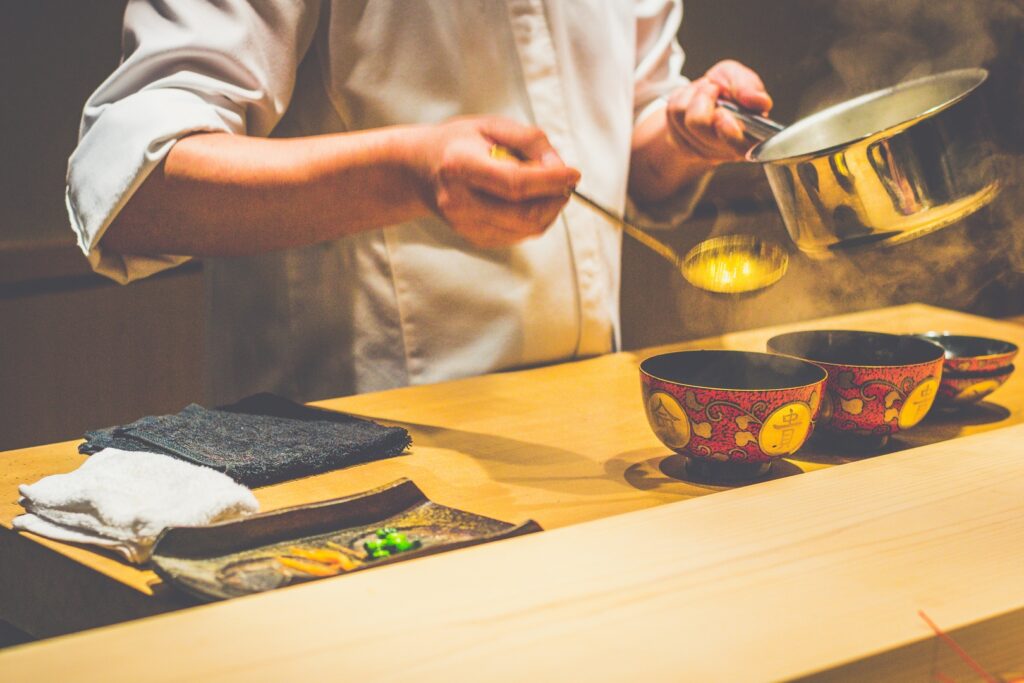
Yet, it is the infusion of yuzu that truly transforms this dish. The citrusy aroma of the yuzu fills the air with a fragrant brightness that complements the fish’s natural sweetness. Its subtle tang cuts through the richness of the soup, providing a fresh, zesty lift that redefines the entire tasting experience. The yuzu’s aromatic zest and gentle acidity add a dimension that is both refreshing and invigorating.
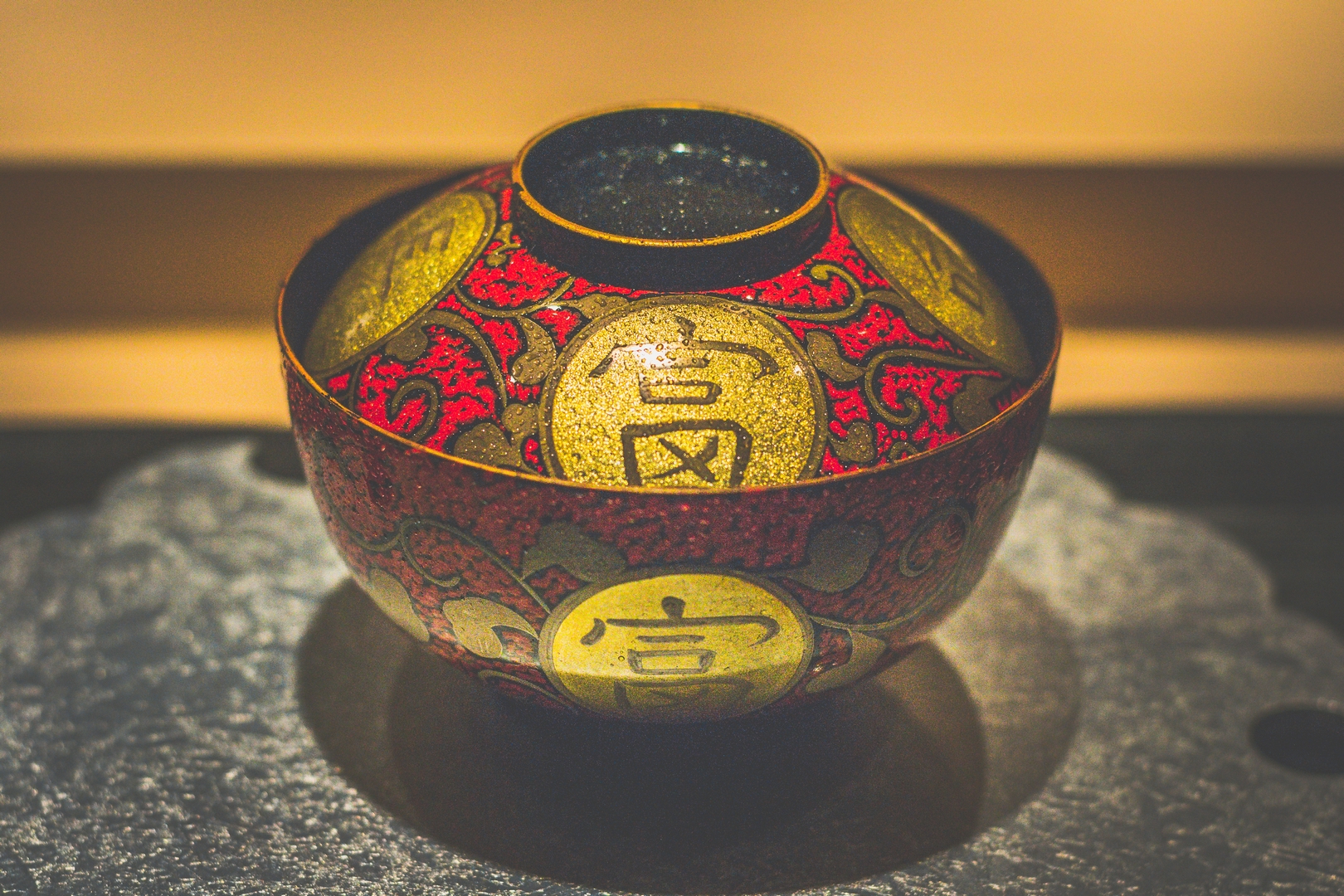
Together, the combination of Kinmedai and yuzu creates a harmonious layering of flavors—each element playing its part in a symphonic whole. The balance between the sweet, tender fish and the vibrant, citrusy punch of yuzu elevates this dish to a level of refined elegance. It is a celebration of the seasons, where every ingredient is chosen not just for its taste, but for the story it tells on the plate.
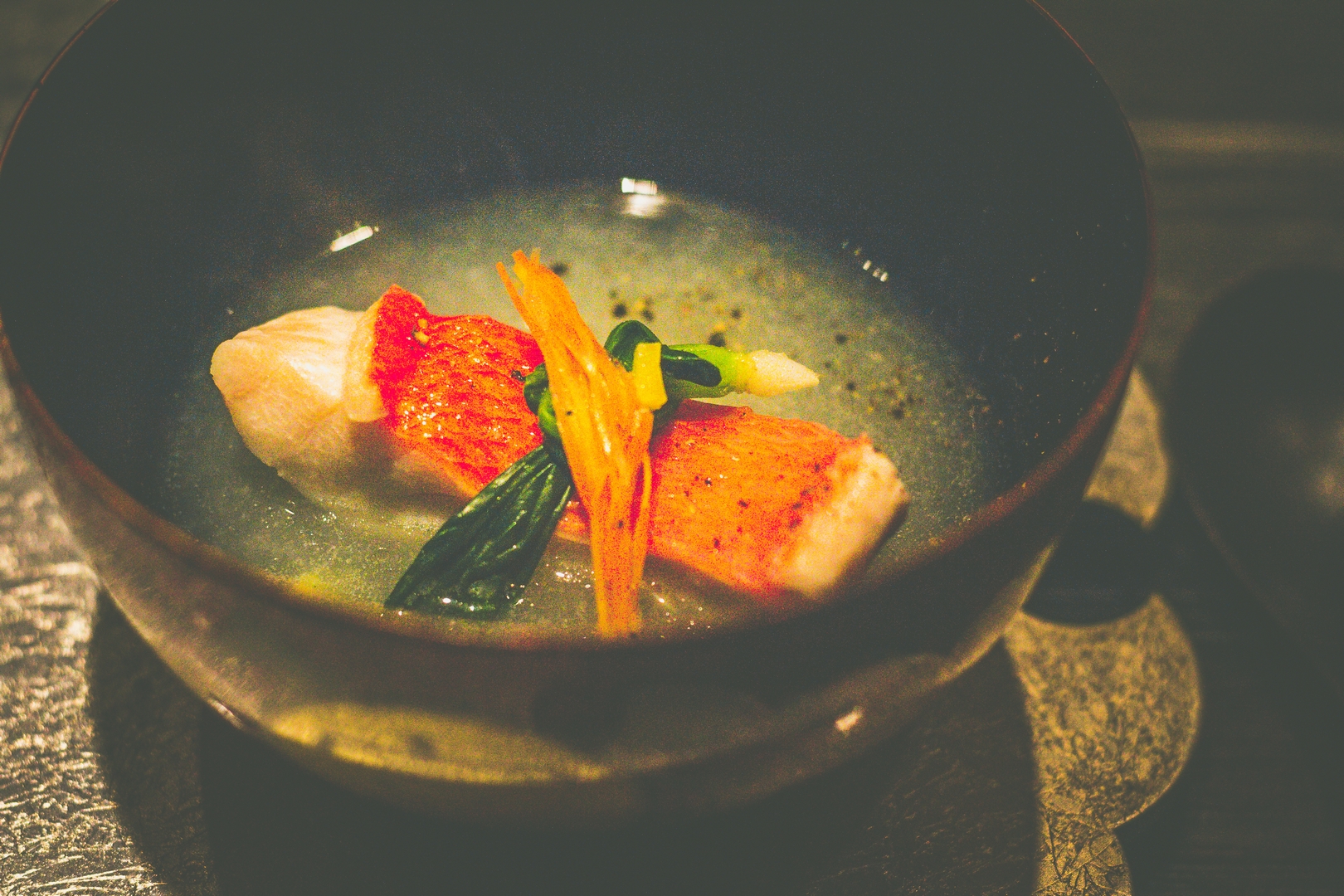
This dish is a reflection of the artistry and precision of Japanese cuisine, where seasonal ingredients are treated with the utmost respect, and each bite is a fully immersive experience. The warmth of the broth, the delicate texture of the fish, and the invigorating freshness of yuzu combine to offer a memorable, thoughtful, and utterly captivating dining experience. It is a great start to the evening’s dinner!
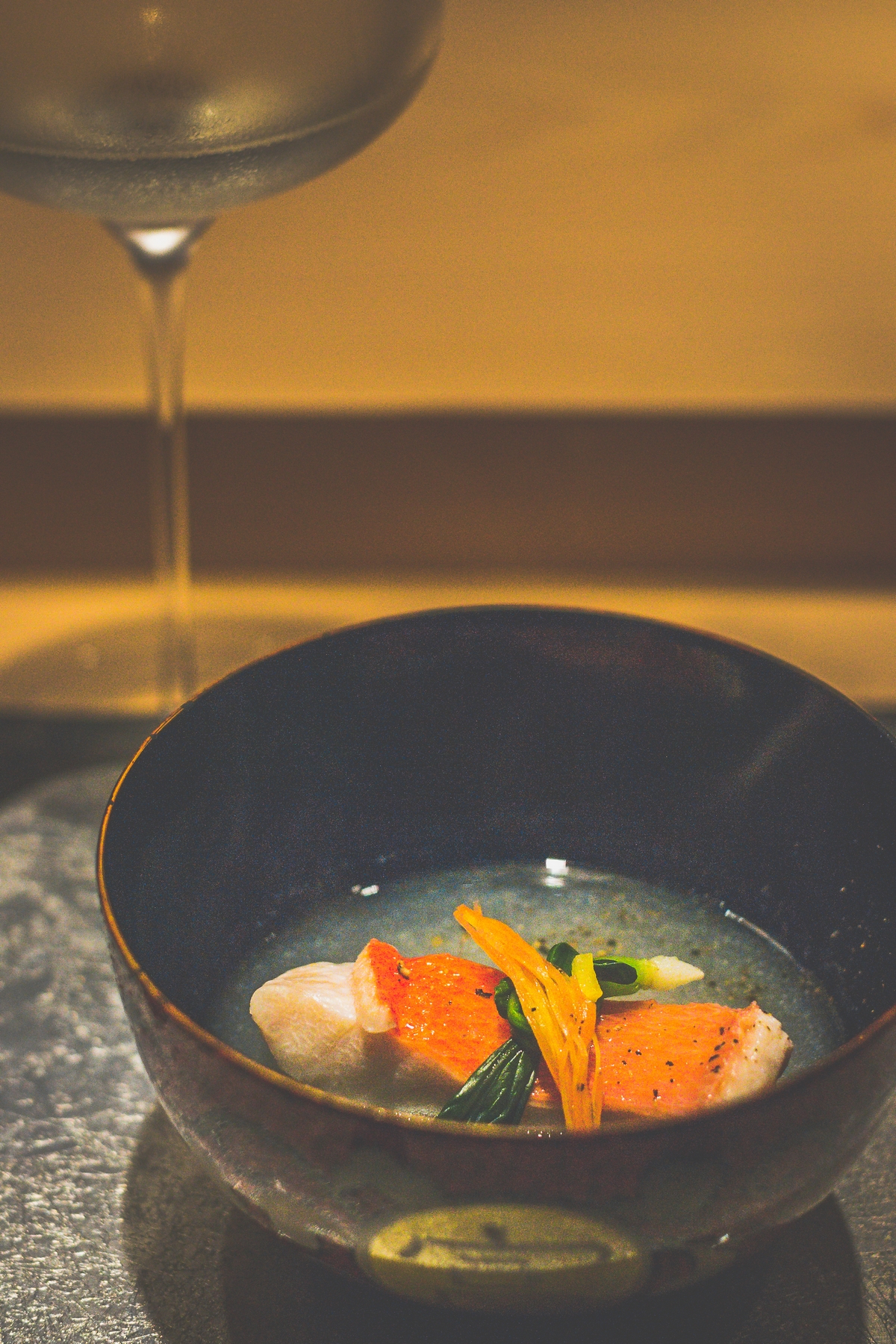
Suggested sake pairing: Hakurakusei Junmai Ginjo
Hakurakusei Junmai Ginjo embodies the essence of the perfect sake to complement food, offering a brilliant balance of freshness and refinement. Its clean, sharp character is marked by a light, fresh taste with a refreshing citrus-like acidity that pairs beautifully with a variety of dishes. The delicate aromas of pear and passion fruit fill the nose, enhancing the overall drinking experience. With its low sugar content and subtle bitterness, this sake is expertly crafted to accentuate the natural flavors of food, while its crisp finish cleanses the palate effortlessly.
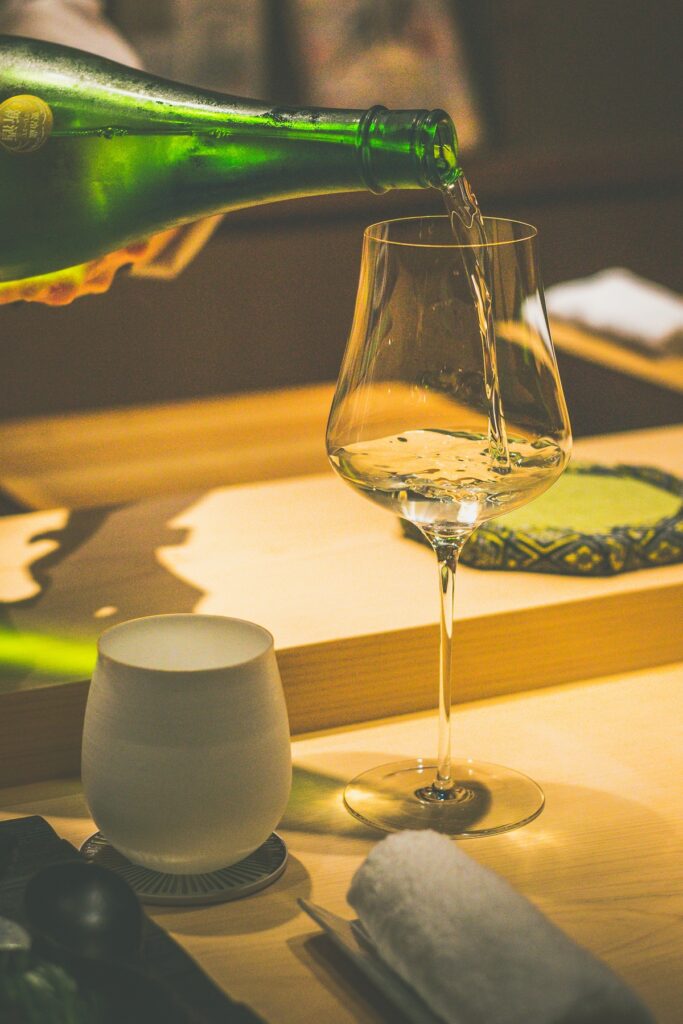
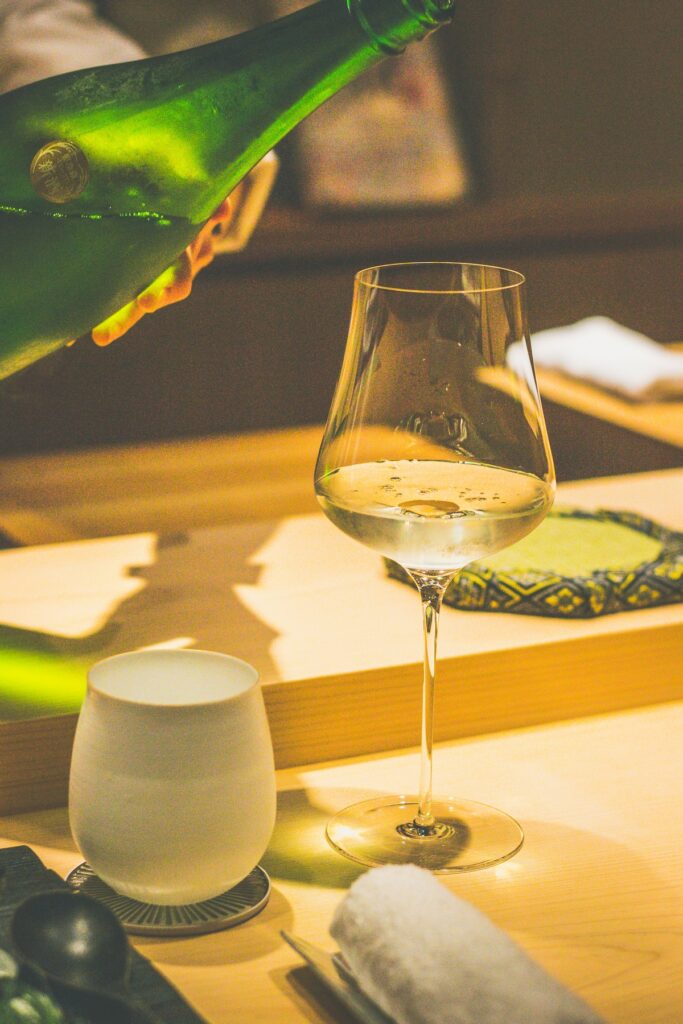
When paired with Kinmedai, Hakurakusei Junmai Ginjo truly shines. The sharpness of the sake cuts through the rich broth and tender fish, elevating the delicate sweetness of the Kinmedai. The zesty yuzu is also complemented by the sake’s refreshing citrus notes, creating a harmonious balance. Its crisp, light profile enhances the flavors of the seafood, highlighting the umami of the fish while leaving the palate clean and ready for the next bite. Served chilled, this sake is a perfect match for dishes like Kinmedai, seafood, and even carpaccio, making it a must-try pairing for those seeking a sophisticated and harmonious dining experience.
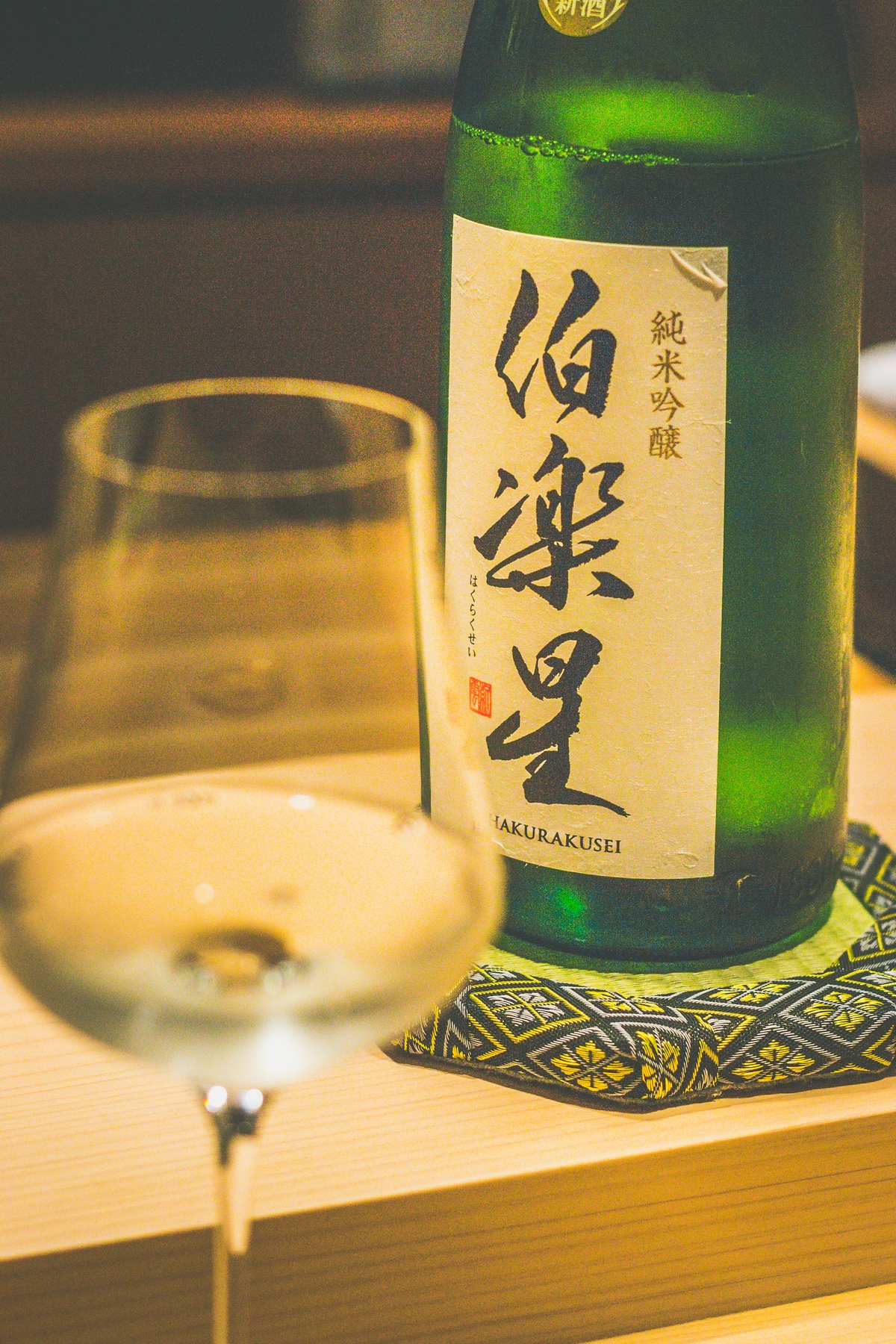
HASSUN
Fugu / Ankimo / Abalone
The presentation of this appetizer trio is nothing short of theatrical. As the rice paper cover is set ablaze, the flames spread outward in a mesmerizing circle, revealing the exquisite selection of delicacies nestled inside. The unfolding spectacle builds anticipation, offering a sensory experience that goes beyond taste.

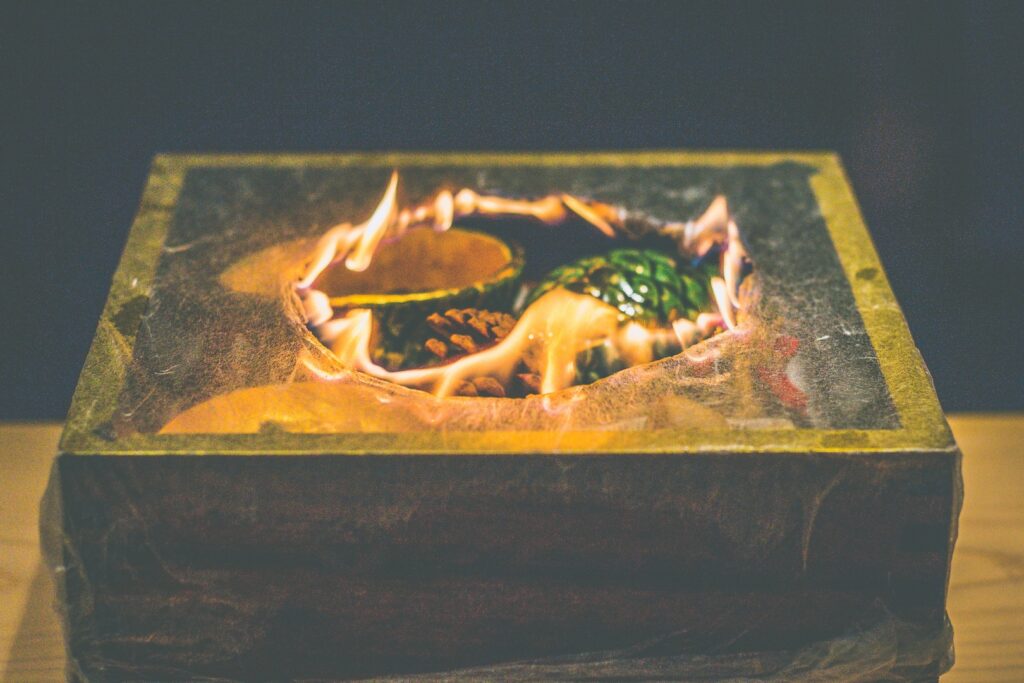
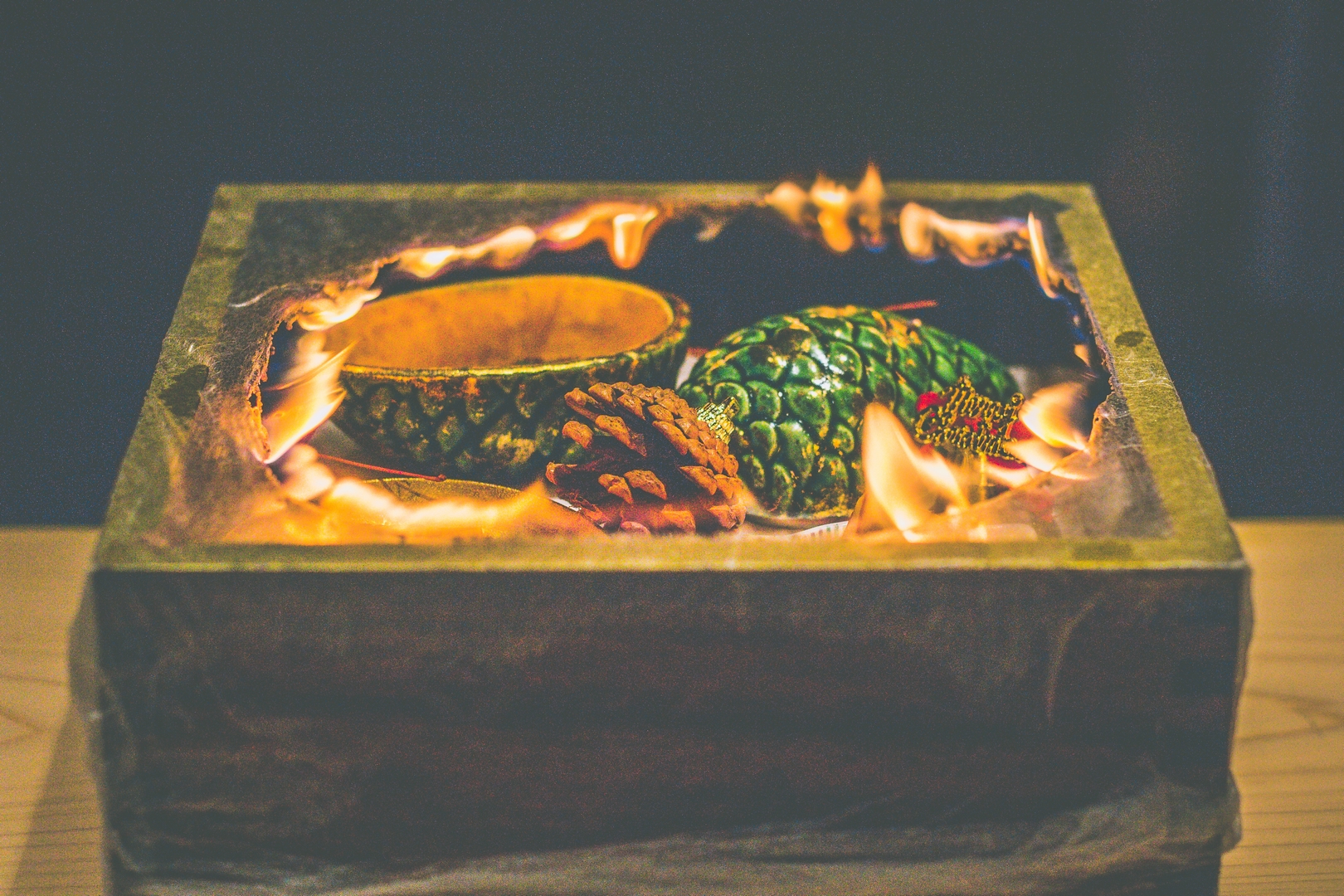
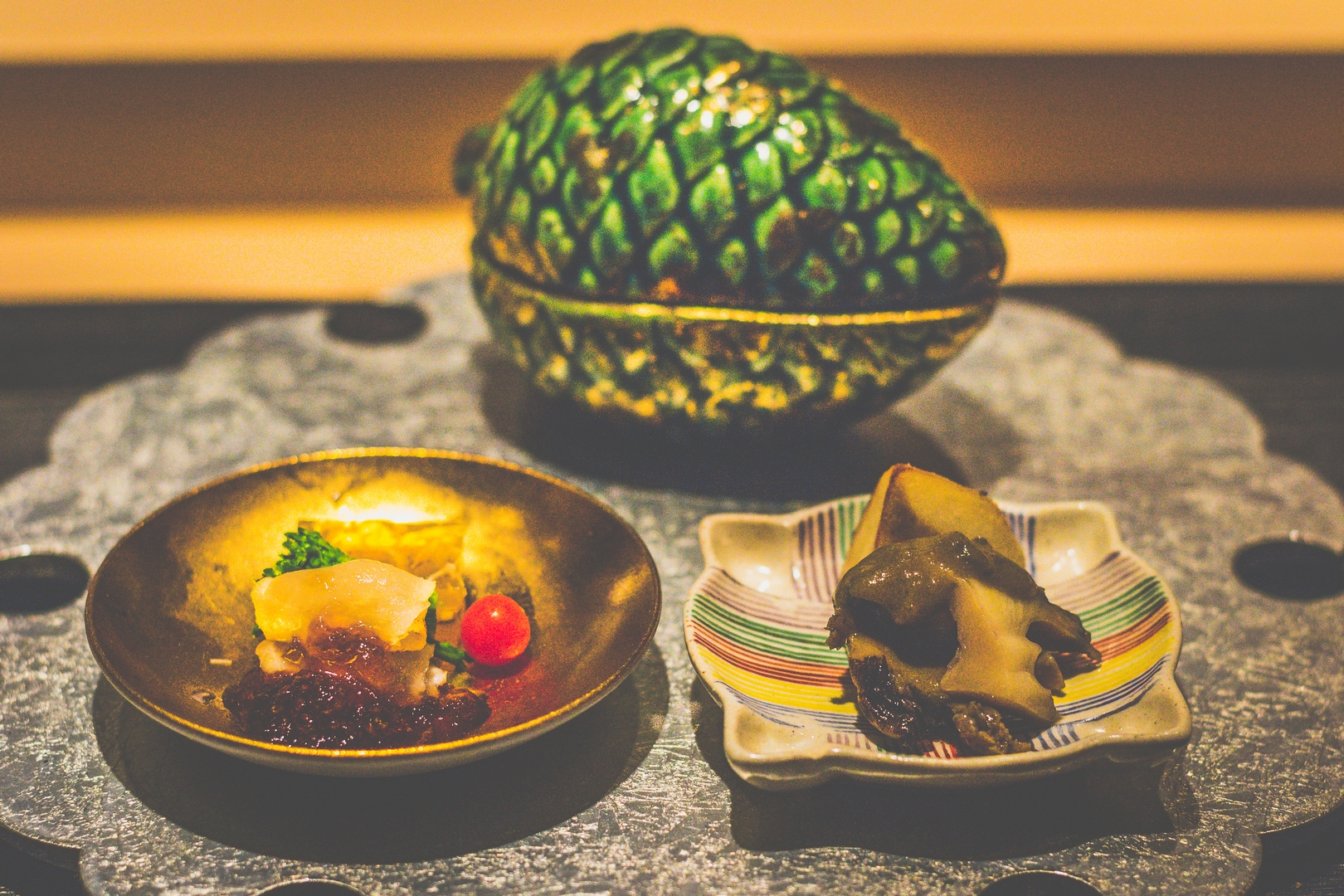
The monkfish liver (ankimo) is rich and velvety, with a smooth texture that melts on the tongue. Its luxurious, buttery flavor is complemented by a delicate seasoning that enhances its natural taste without overwhelming it.
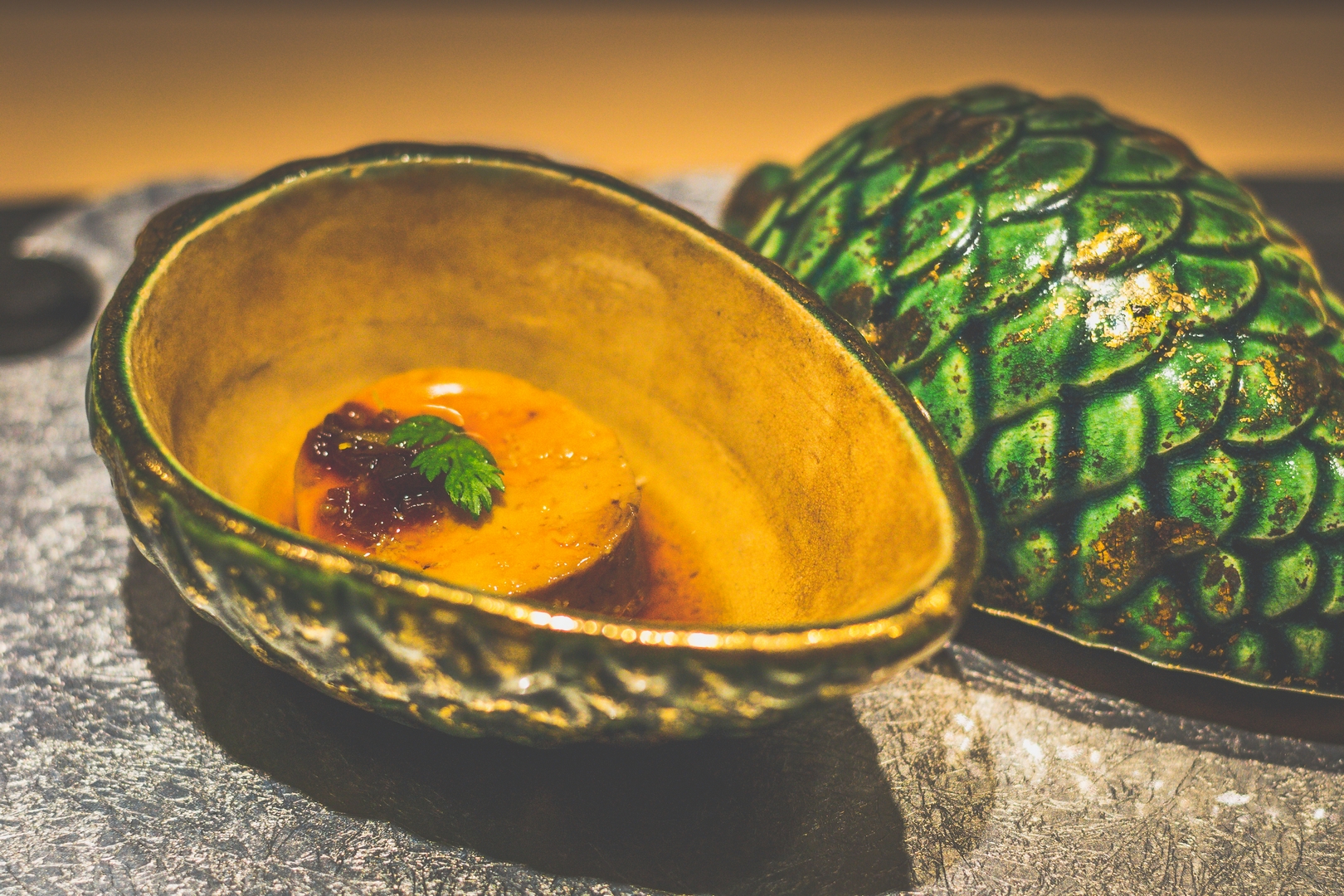
The fugu, a prized delicacy known for its delicate and subtly sweet flavor, is prepared with care and precision. The fugu is tender and clean, with a satisfying bite that highlights its natural umami. The ponzu jelly adds a touch of brightness and complexity, enhancing the fugu without overshadowing its delicate flavor.
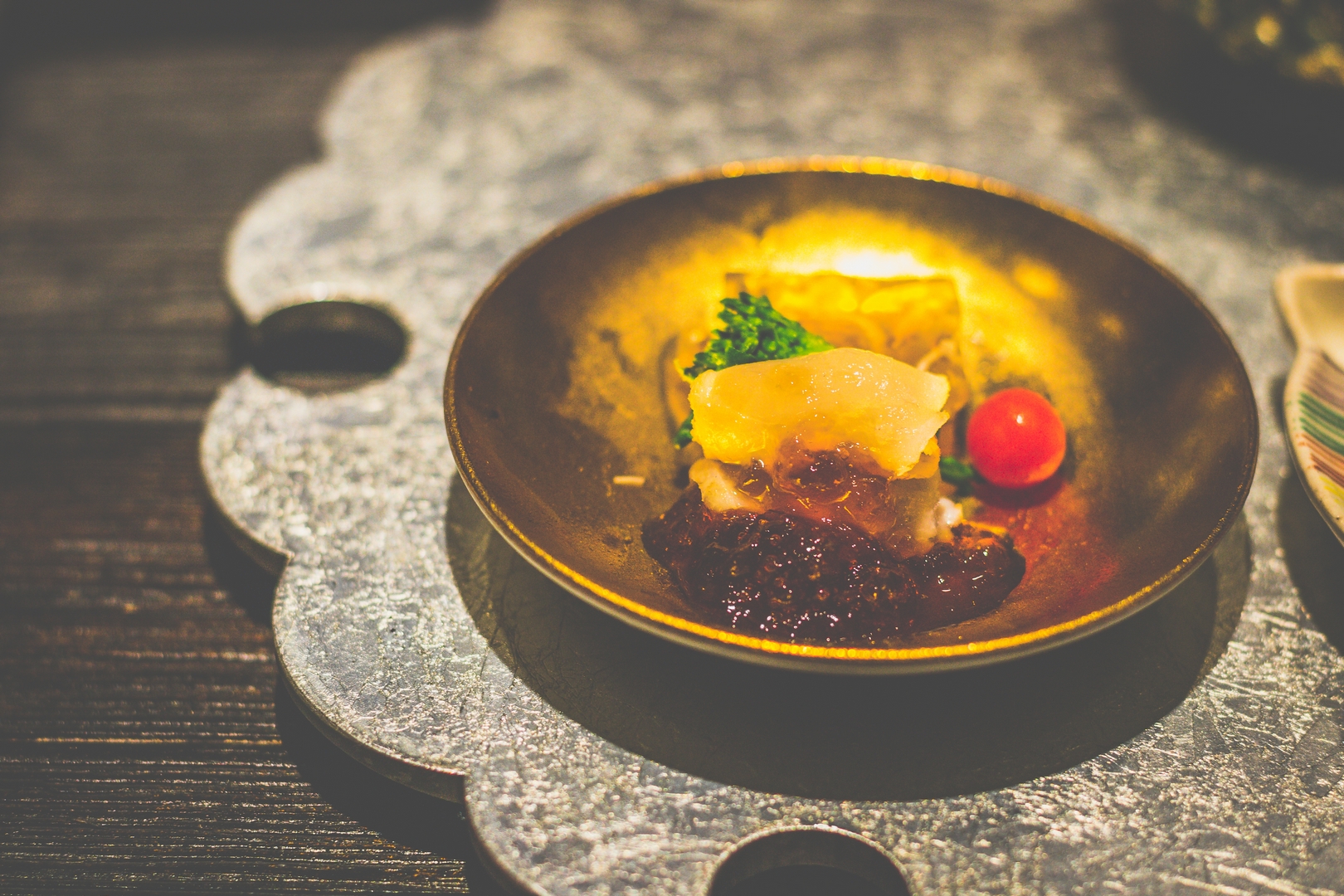
The abalone, tender and succulent, is paired with a rich sauce that deepens the natural flavor of the shellfish. The sauce, balanced with a touch of sweetness and umami, enhances the abalone’s slightly briny and mineral taste. Accompanying the abalone is a delicate yam, which offers a subtle creaminess, sweetness and earthiness, rounding out the dish beautifully.
Each element of this dramatic appetizer is a celebration of texture, flavor, and visual artistry. The interplay of rich and refreshing flavors—velvety ankimo, delicate fugu, and tender abalone—along with the stunning presentation, creates a truly unforgettable start to the meal. It’s a perfect introduction to the depth and sophistication of Japanese cuisine, where each ingredient is given the utmost respect and care.
OTSUKURI
Noto Buri / Japanese Ginger
The Otsukuri dish is a brilliant showcase of exceptional ingredients, offering a culinary journey that blends tradition with innovation. At the heart of this platter is the Noto Winter Buri, a prized yellowtail caught in the cold waters of Noto Bay during the winter months. Yellowtail (also known as Amberjack) is a migratory fish that begins moving northward from June to July, spending the summer and fall in the waters off Hokkaido. As it prepares to spawn around late October, it begins its southern descent, entering Toyama Bay and the waters off Noto Town.
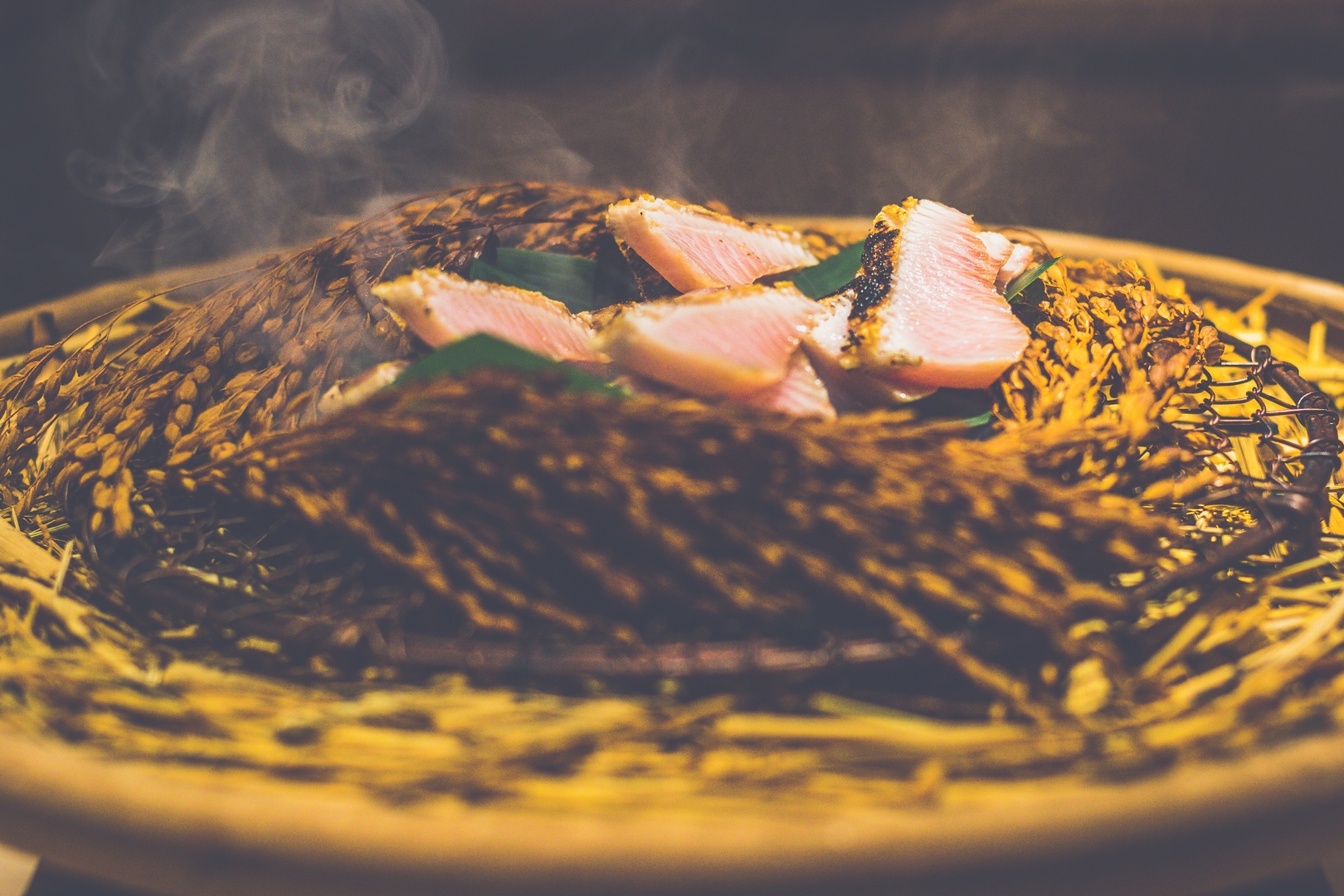
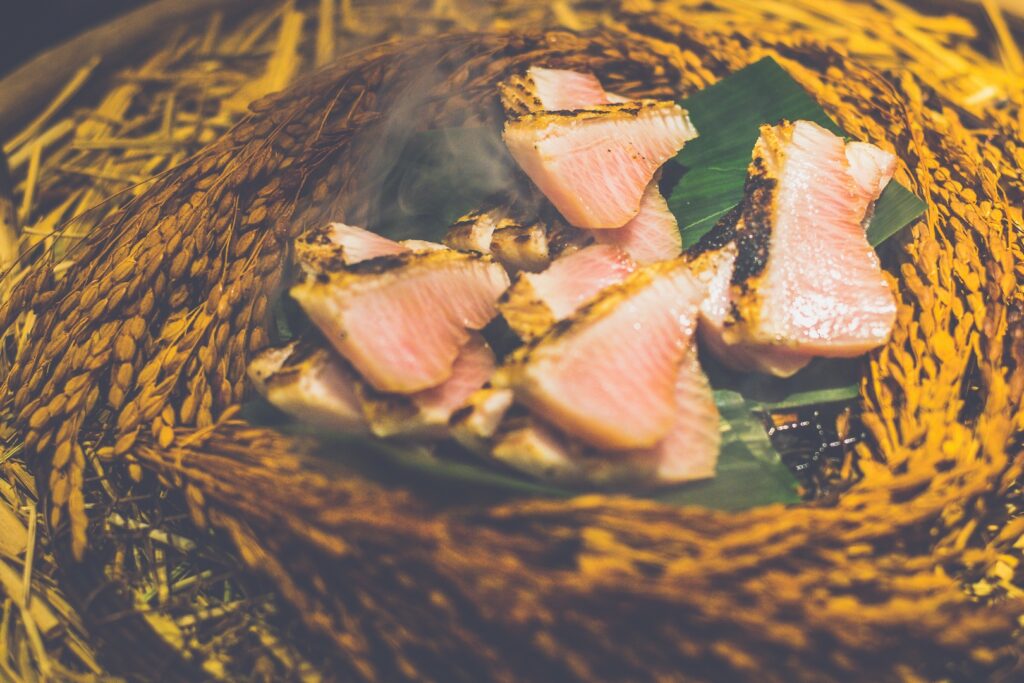
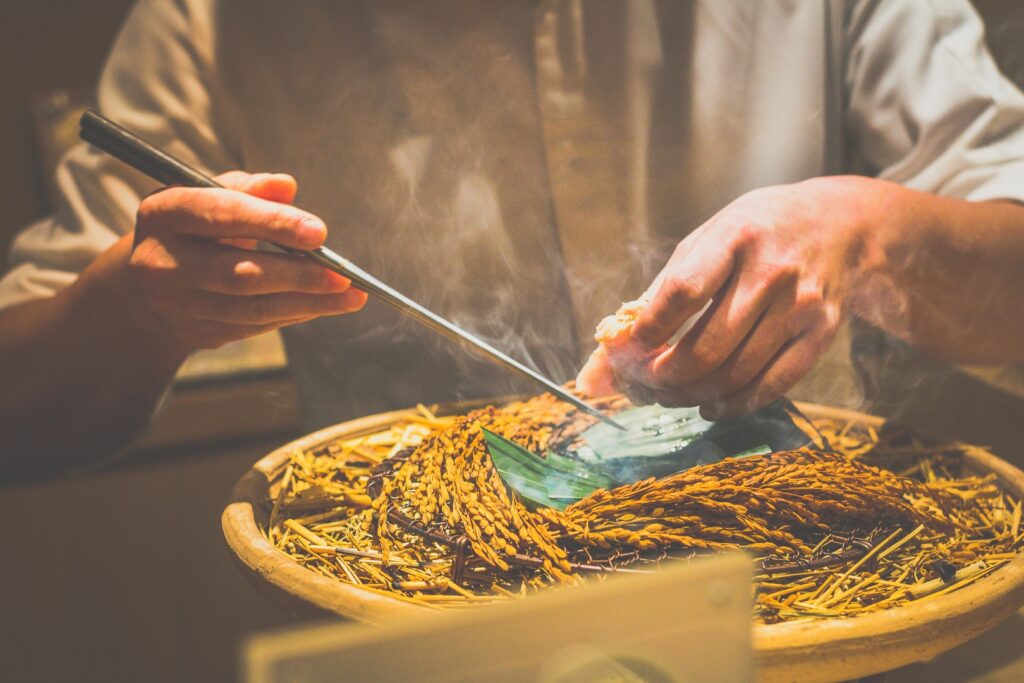
What makes Noto Winter Buri so exceptional is the timing of its catch. The fish rides the flow of warm to cold currents, and as it does so, it becomes firm and fat, its flesh marbled with rich, luscious fat. This unique seasonal catch makes it an ideal choice for sashimi, with the freshness, color, and richness of the fish standing out at this time of year. The peak season for Noto Winter Buri runs from December to February, when the fat content is at its highest, offering an unparalleled depth of flavor. In Ishikawa Prefecture, Noto Winter Buri is so revered that it’s often given as a luxury year-end gift, underscoring its cultural and culinary importance.
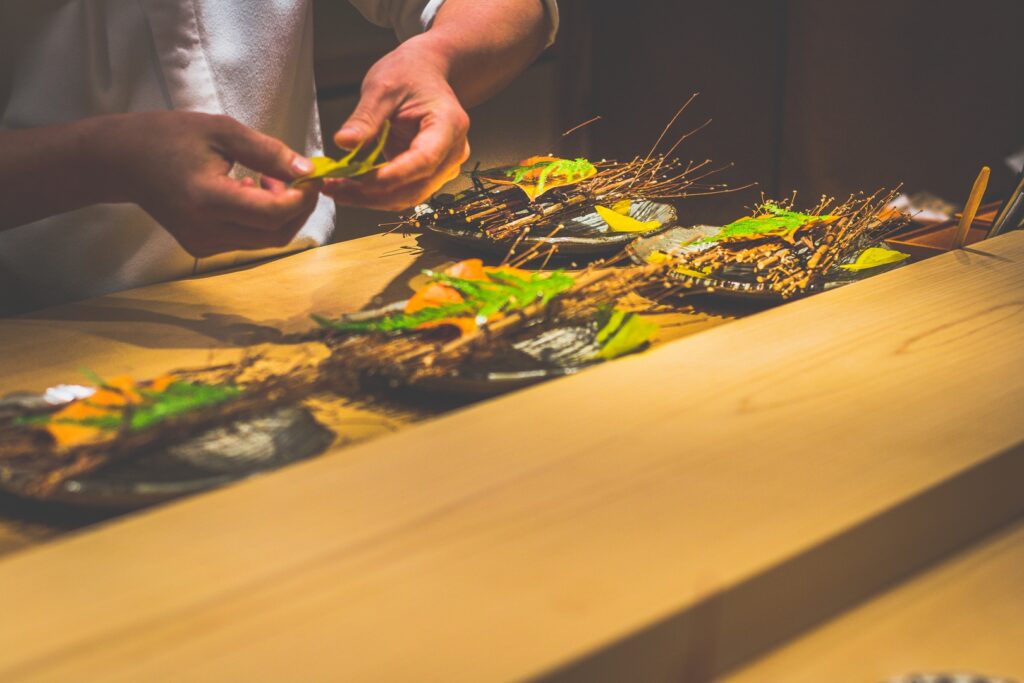
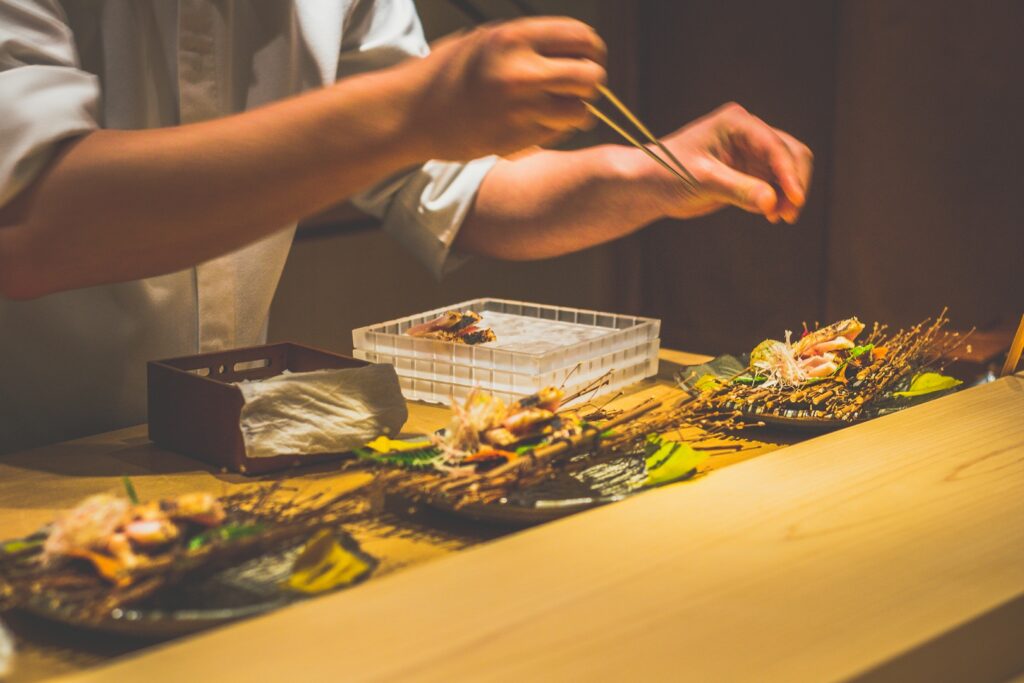
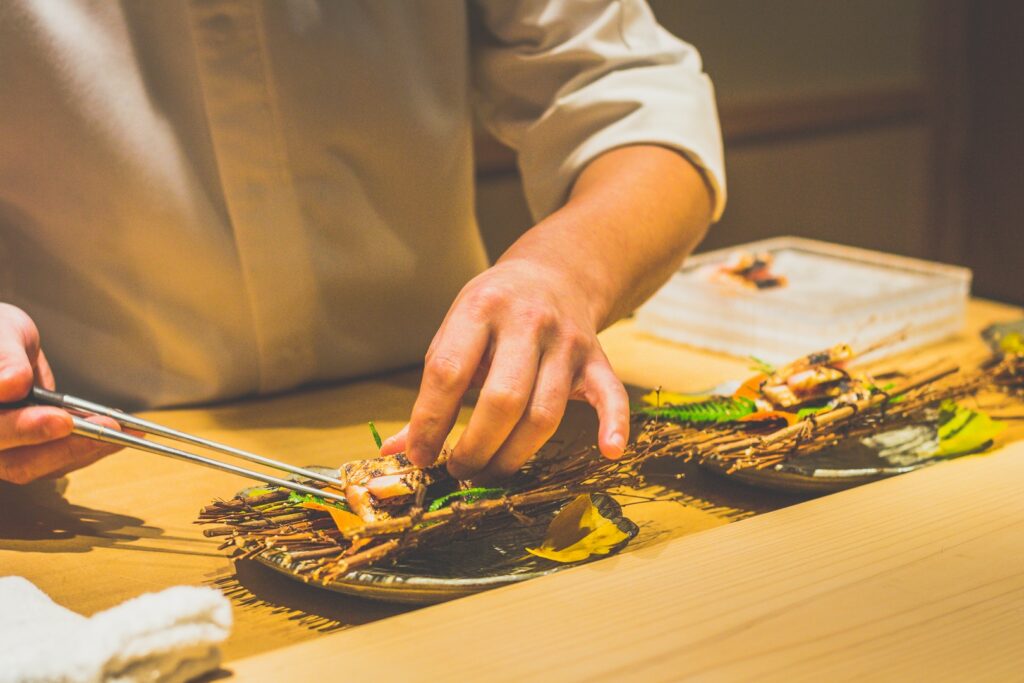
The yellowtail for this dish is expertly smoked in Japanese rice straw, lending a smoky, earthy flavor to the already rich fish, while maintaining its tender, melt-in-your-mouth texture. The crispy, slightly charred skin enhances the deep, smoky undertones, creating a remarkable contrast with the delicate, fatty flesh inside.
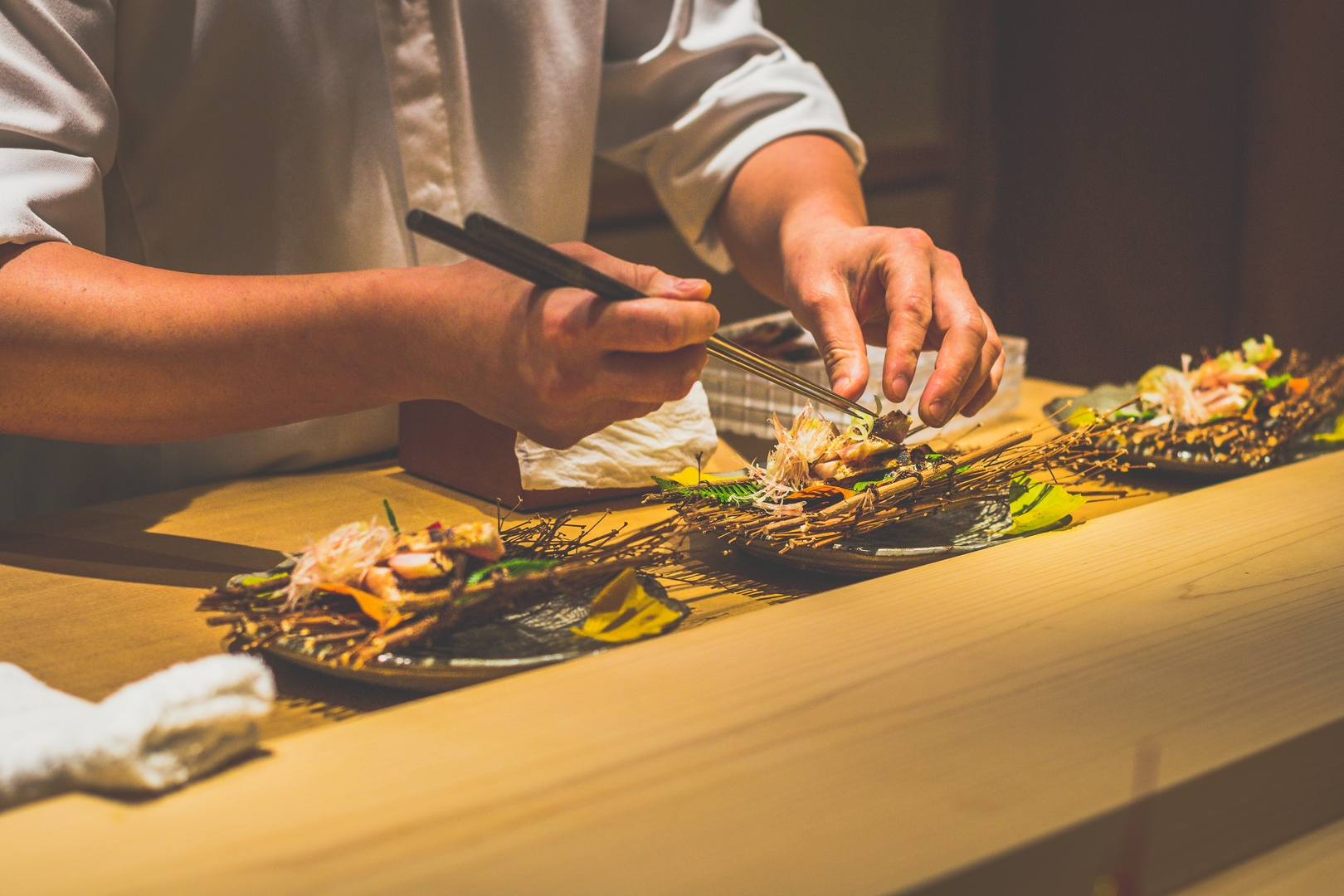
Adding further complexity to the dish are perfectly tender squid, which bring a subtle sweetness and satisfying chew, and Okinawa prawn, with its fresh, briny snap. The radish provides a light, crisp texture, cutting through the richness of the fish and balancing the overall flavors.
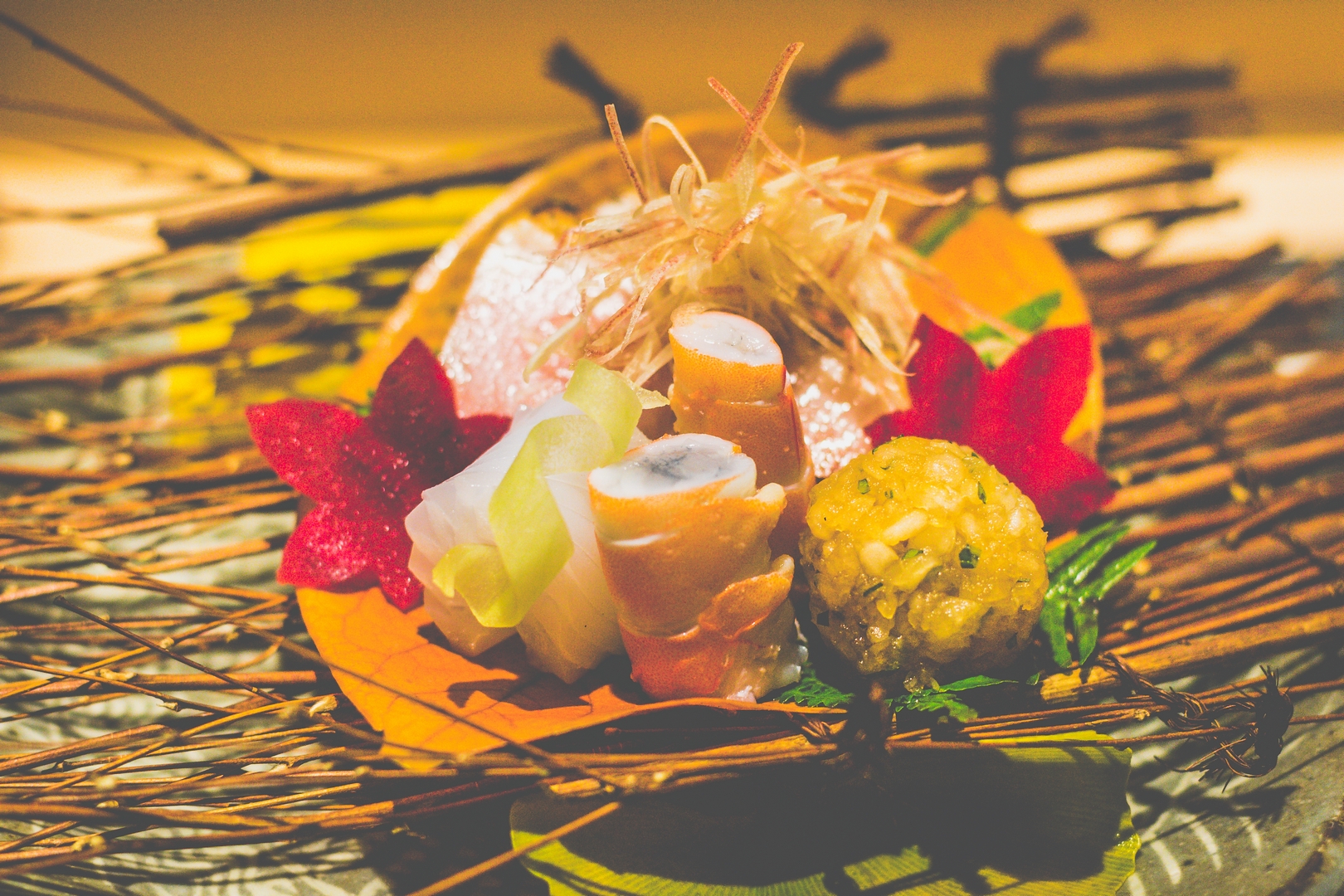
Accompanying the yellowtail is Japanese ginger, which provides a refreshing, aromatic bite. The sharpness of the ginger cuts through the richness of the yellowtail, offering a zesty cleanse between bites.
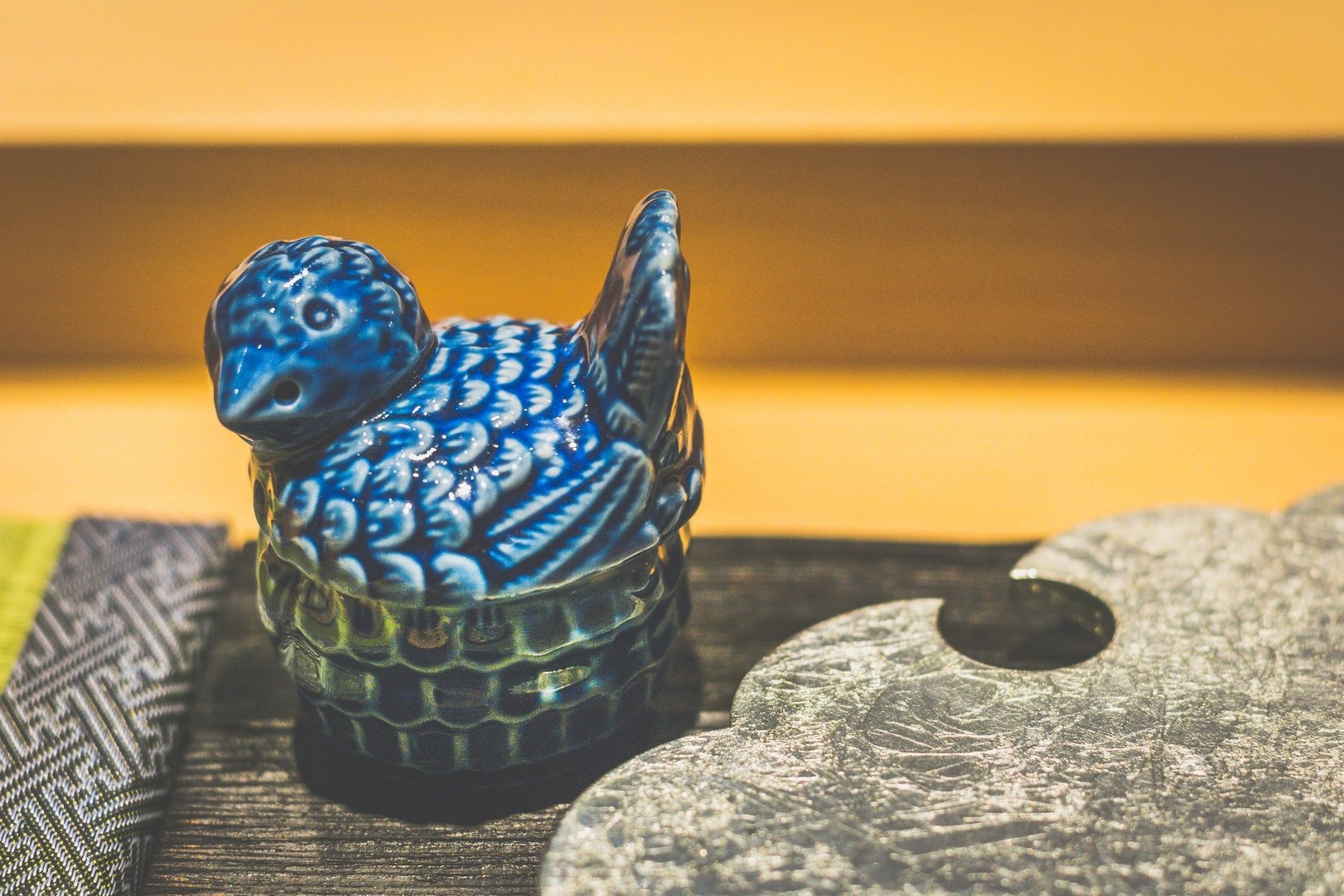
The Noto Winter Buri is the star of the Otsukuri dish, its firm texture and exceptional fattiness making it the most delicious item of the evening. Paired with fresh seafood, and refreshing garnishes, this dish exemplifies the artistry, seasonality, and depth of Japanese cuisine, leaving a lasting impression that truly elevates the entire dining experience.
UNI
Botann shrimp/ Roasted shrimp head jelly
Uni, or sea urchin, is a true delicacy that transports you straight to the ocean with every bite. The texture is rich and creamy, almost buttery, as it melts effortlessly in your mouth. The natural sweetness of the uni is the highlight, offering a briny, oceanic flavor that is both delicate and bold. The flavor profile is often compared to that of the sea itself—salty, fresh, and deeply satisfying—making it an essential experience for anyone seeking the true taste of the ocean.
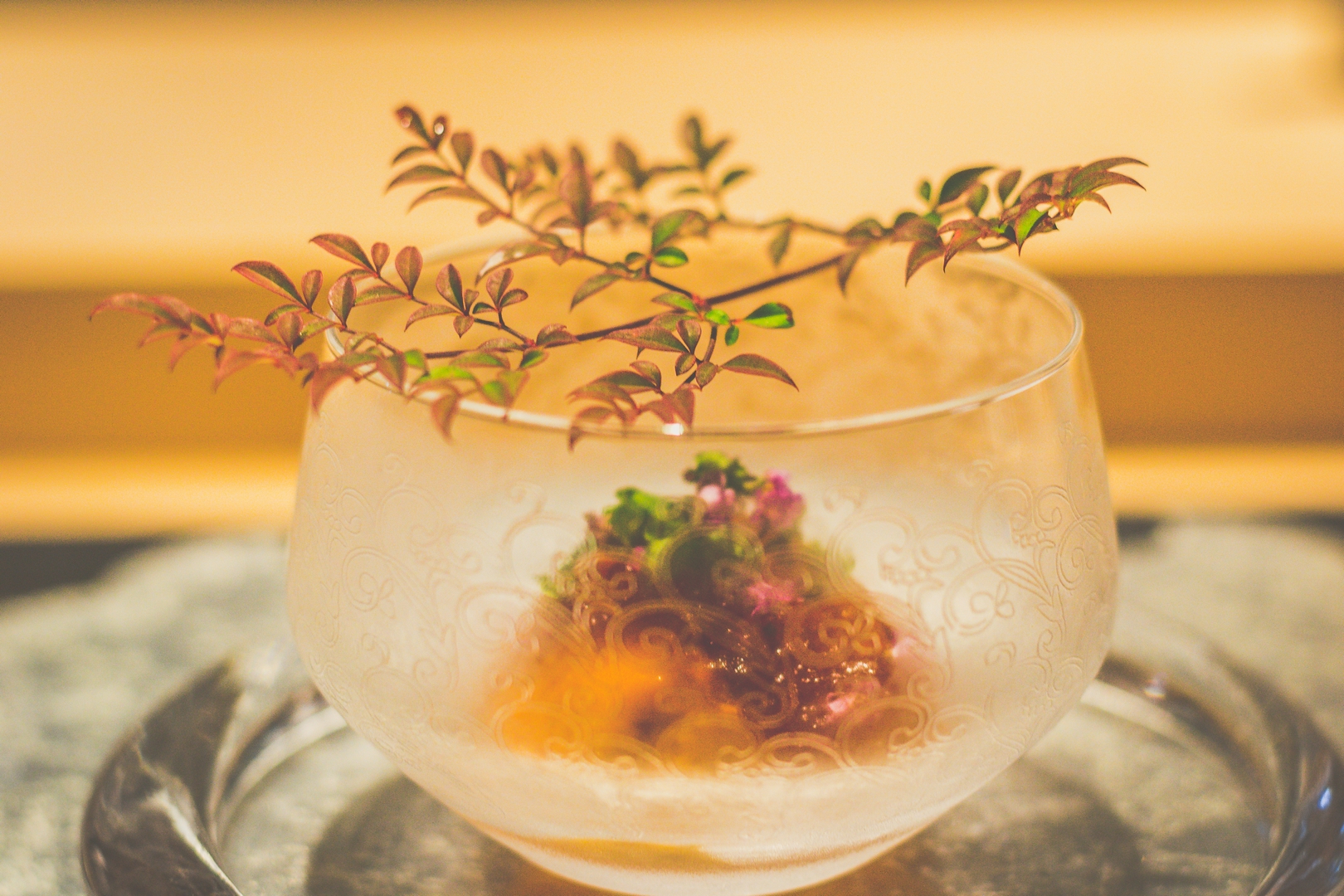
The golden-orange hue of the uni adds a vibrant visual appeal, with each piece showcasing the natural beauty of this prized ingredient. Its smooth, custard-like consistency is a perfect balance to the crispness of the other dishes on the plate, allowing the uni to shine as a creamy contrast.
This dish is a masterful blend of textures and flavors, showcasing the finest of Japan’s coastal ingredients. The Botann shrimp, known for its delicate sweetness and plump texture, is the star of the dish. Its natural brininess and firm bite create a perfect foundation, elevated by the addition of uni (sea urchin), which brings a rich, creamy depth to the dish. The uni melts delicately on the tongue, offering a luxurious contrast to the firm bite of the shrimp.
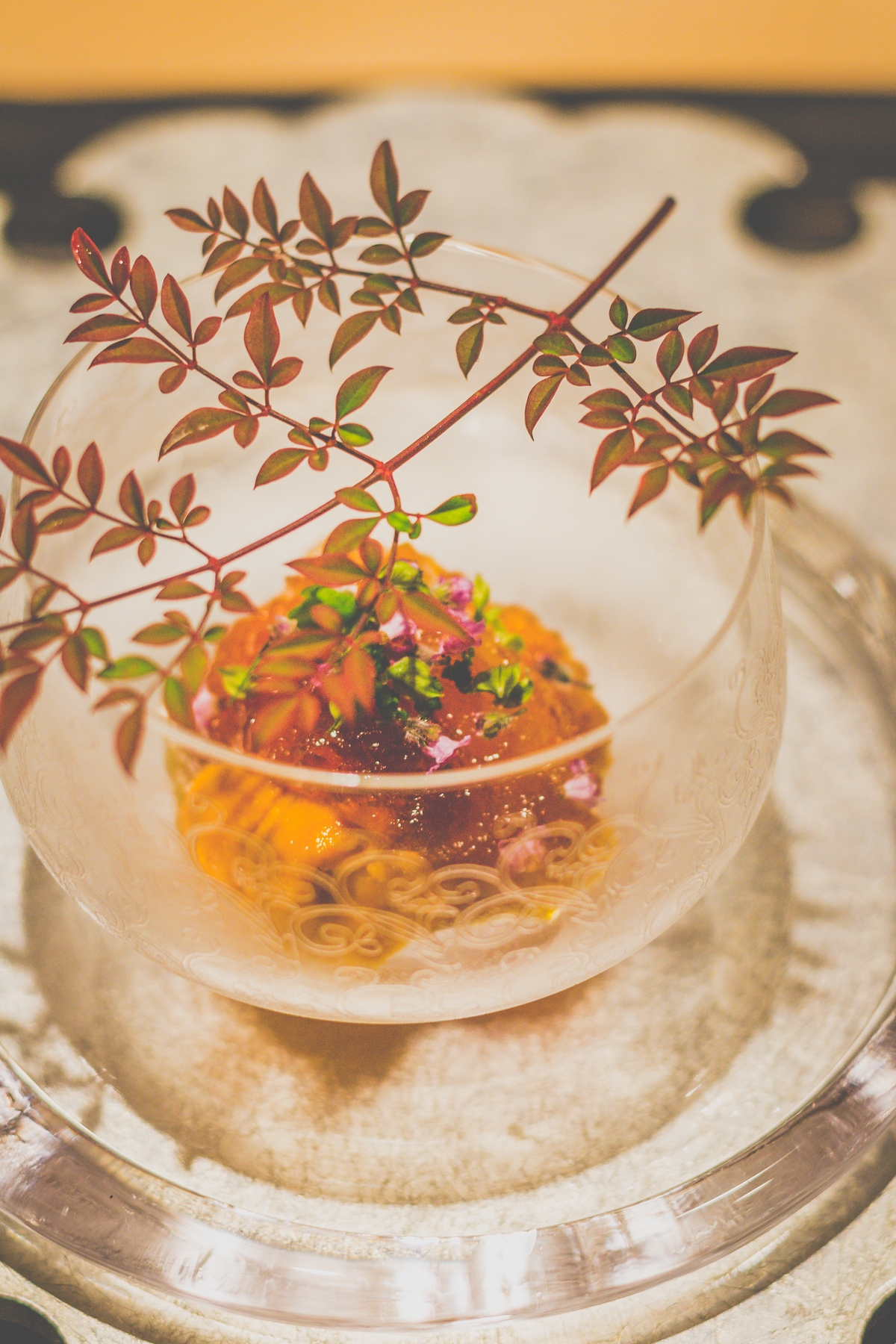
What truly sets this dish apart is the jelly made from roasted shrimp heads, which infuses the dish with a profound umami richness. The jelly’s smoky, roasted flavor intensifies the natural sweetness of the shrimp and the sea urchin, creating a harmonious balance between the delicate and the savory. The jelly also adds a unique textural element—smooth and velvety, it complements the firm shrimp and soft uni, enhancing the overall mouthfeel of the dish.
The interplay of flavors—sweetness from the shrimp, richness from the uni, and the smoky umami from the shrimp head jelly—creates a multifaceted taste experience. It’s a dish that is at once luxurious and complex, inviting the diner to savor the depths of the sea in each bite.
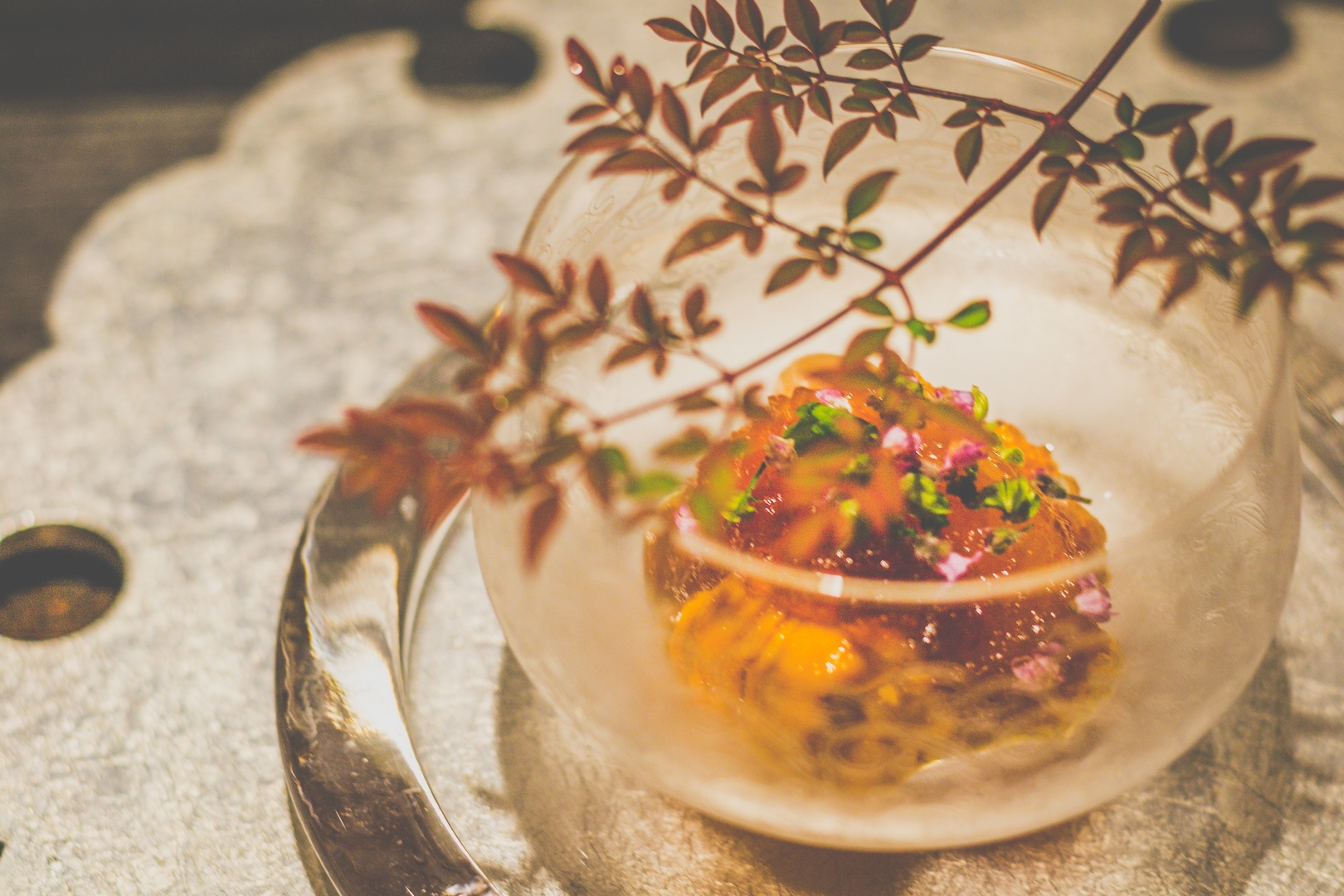
HYOGO SEKOGANI
Ginger / Leek
The Hyogo Sekogani, or Japanese snow crab, is a true embodiment of seasonal luxury. This delicately sweet and tender crab, sourced from the icy waters off Hyogo Prefecture, is known for its fine texture and exquisite flavor. Each bite reveals a soft, succulent meat that is perfectly balanced with a gentle brininess, offering a pure taste of the sea.
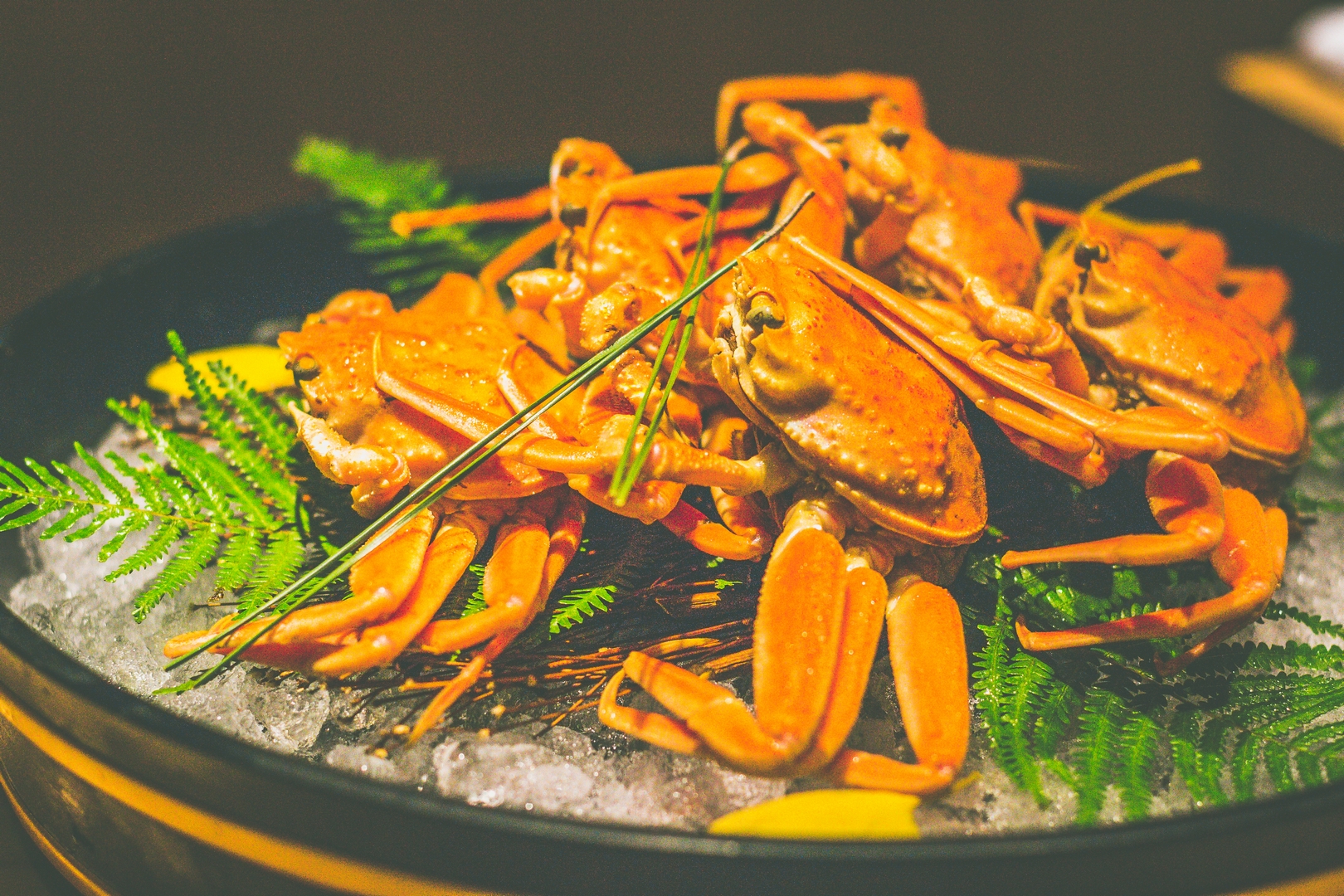
Accompanying the crab is a vibrant crab egg sauce, rich and creamy, with a depth of flavor that enhances the natural sweetness of the meat. The sauce’s delicate consistency coats the crab, infusing each bite with an extra layer of savory indulgence. The addition of ginger and leek provides a refreshing contrast—spicy ginger adds a subtle warmth while the leek’s mild sweetness brings a touch of freshness to the dish, cutting through the richness of the crab and sauce.
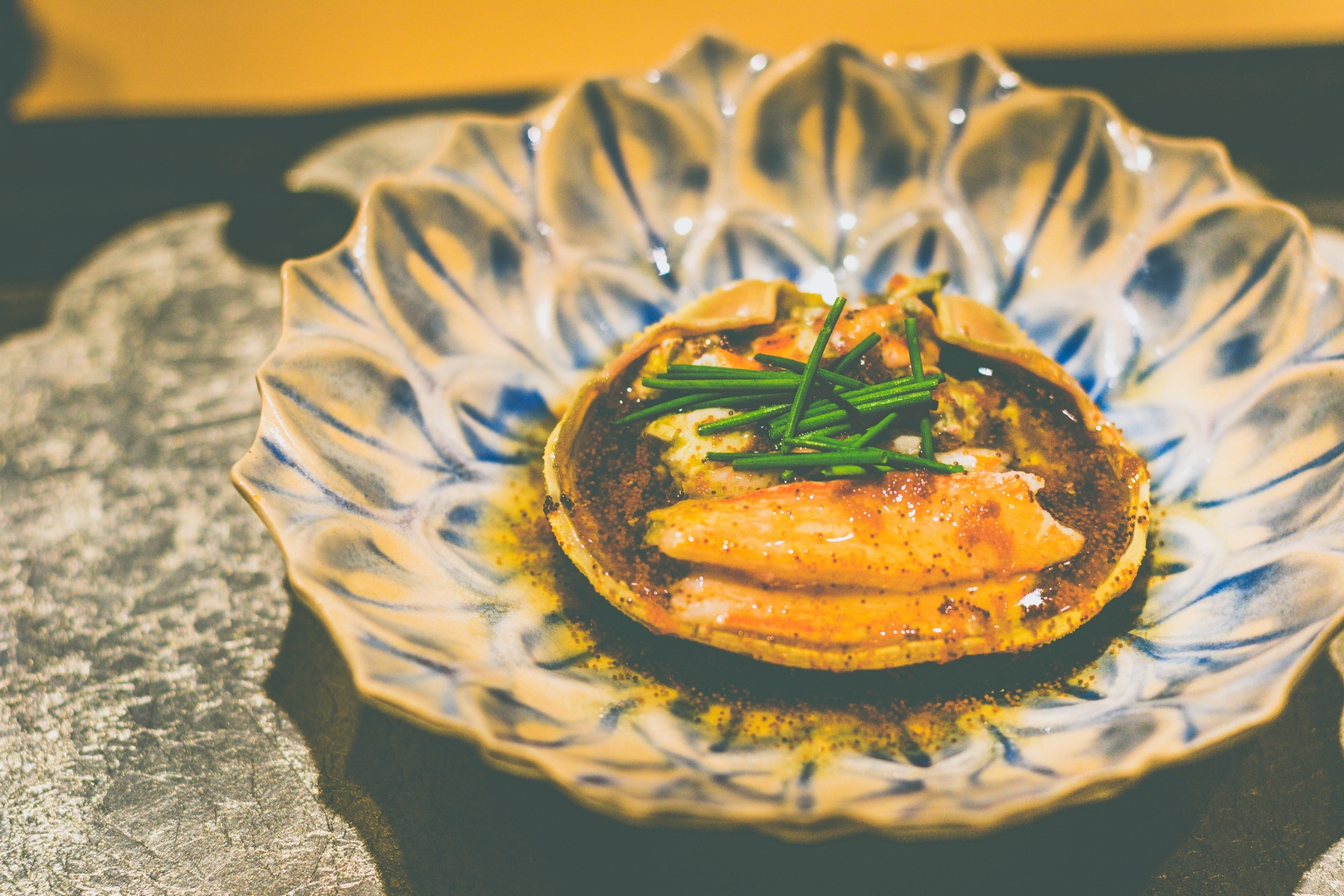
The combination of the Hyogo Sekogani’s tender, flavorful meat, the luxurious crab egg sauce, and the zesty ginger and leek creates a harmonious balance, showcasing the finesse of Japanese culinary artistry. This dish is an unforgettable celebration of winter’s best offerings—fresh, indulgent, and full of flavor.
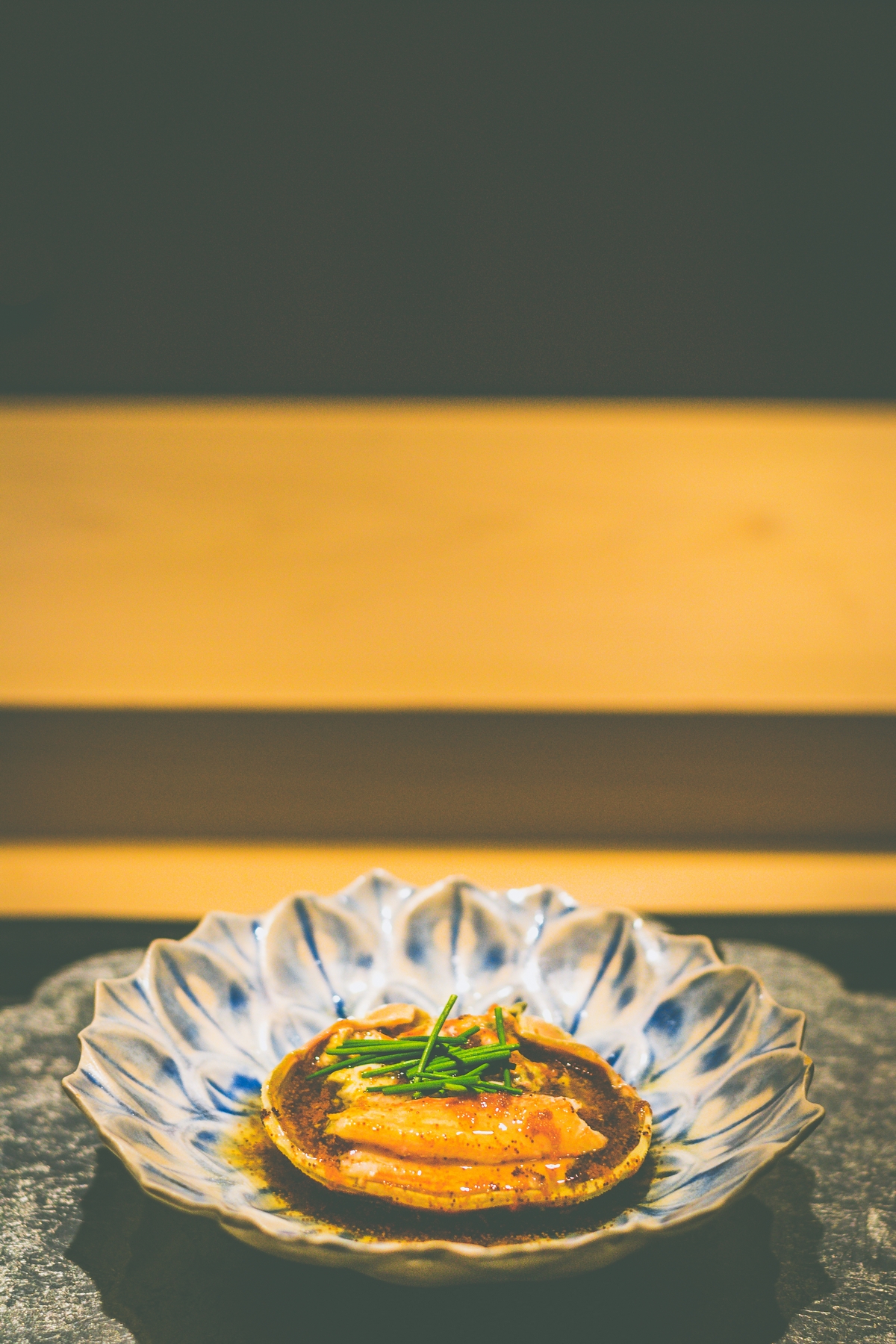
Suggested Sake Pairing: ZAKU Junmai Daiginjo Nakadori “Miyabi no Tomo”
ZAKU Junmai Daiginjo Nakadori “Miyabi no Tomo” offers a refined and exquisite sake experience, with only the clearest, middle section of the sake pressed and bottled to capture its purest essence. This sake greets the nose with a gorgeous, full bouquet of fruity aromas, including notes of ginger, melon, and green pepper, along with a hint of candied pineapple and the delicate fragrance of lily flowers. Its profile is incredibly inviting, drawing you in with its elegant sweetness and subtle complexity.
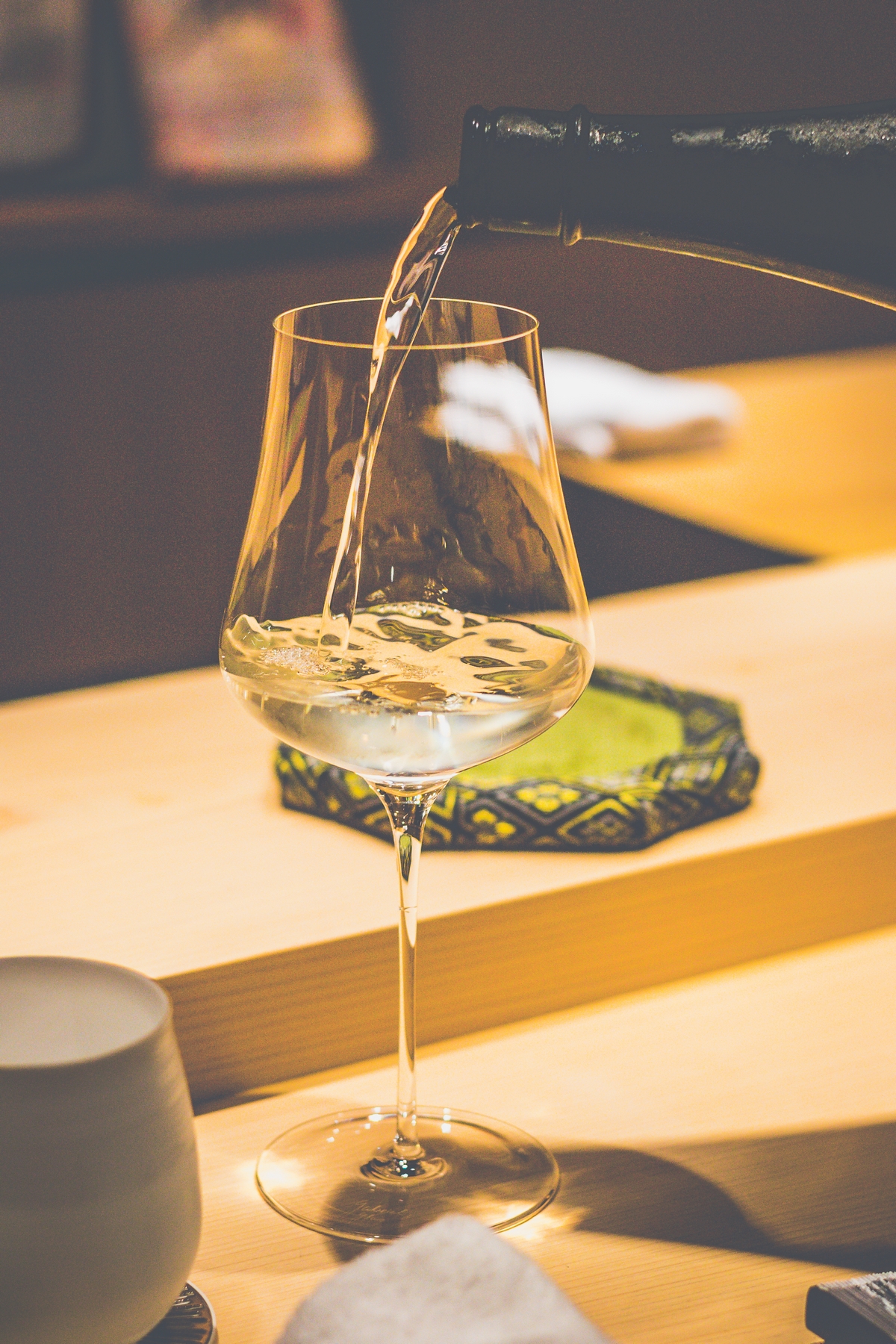
On the palate, the sake maintains a delicate, clear character, blending beautifully with the rich aromas to create a smooth, satisfying experience. Its clean, crisp acidity finishes with a refreshing clean edge, making it a perfect companion for a variety of dishes, especially delicate seafood.
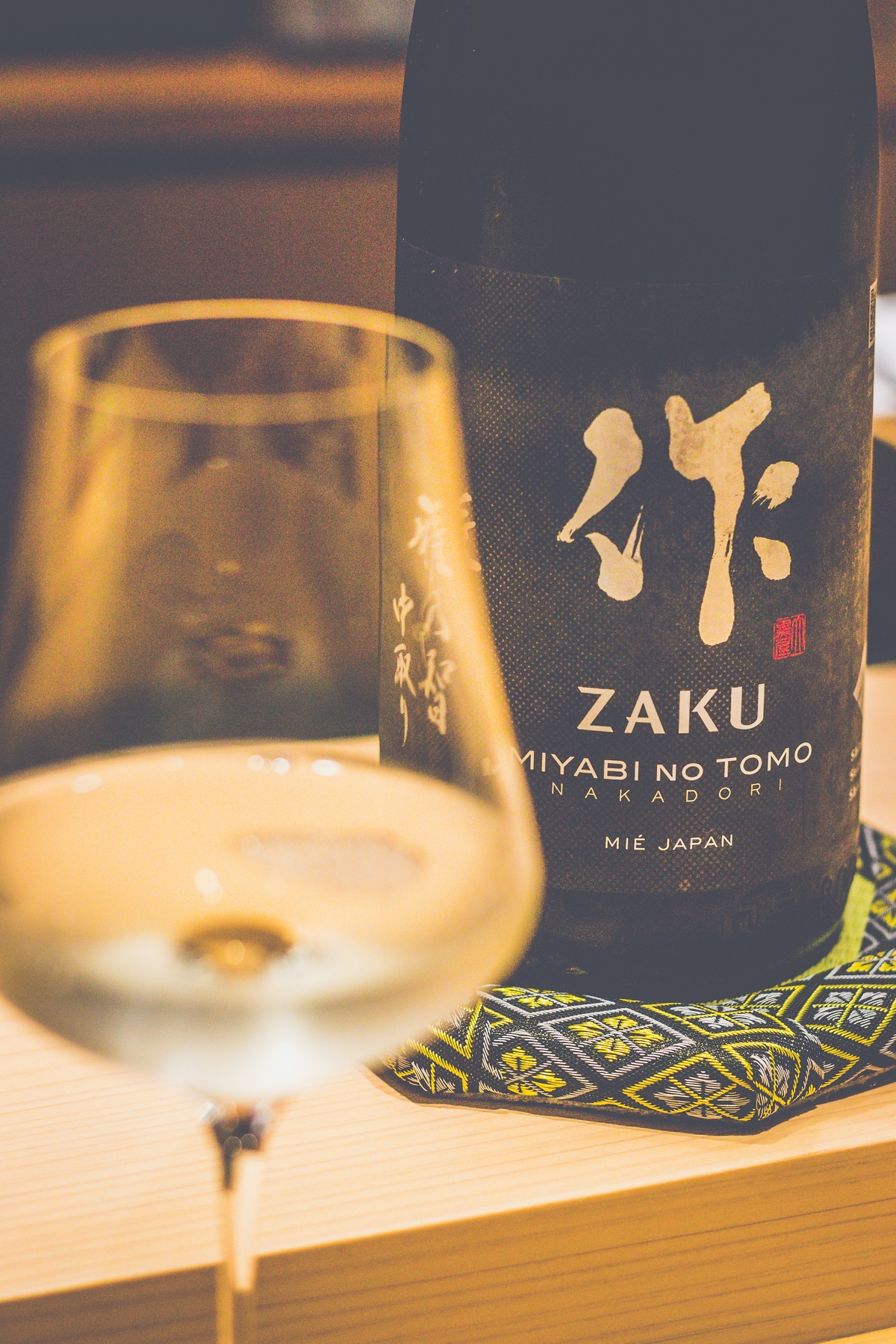
When paired with Hyogo Sekogani (Japanese snow crab), the sake’s elegant and rounded sweetness enhances the natural sweetness of the crab, while its fruity and floral notes complement the briny, tender meat. The slight acidity in the finish cuts through the richness of the crab and its luxurious crab egg sauce, offering a refreshing contrast and cleansing the palate between each bite. The balance of flavors between the sake and the snow crab creates a harmonious, multi-layered tasting experience, where both elements elevate each other for a truly sophisticated dining moment. Best enjoyed chilled, this sake pairing highlights the delicate balance and refinement of both the sake and the seafood.
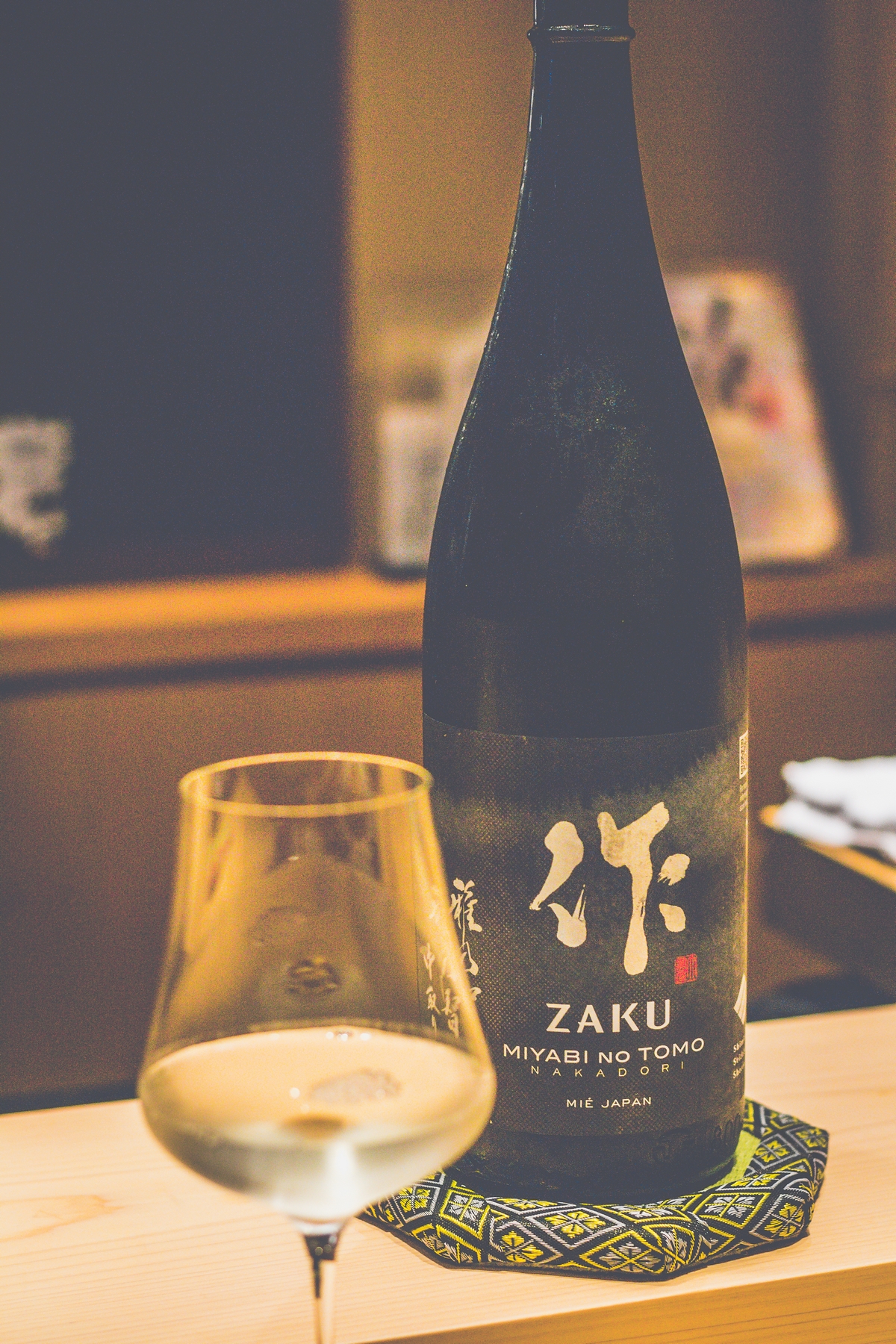
ISE EBI
Chawanmushi / Siso
The Ise Ebi, or Japanese spiny lobster, takes center stage in this beautifully crafted dish, offering an exceptional balance of sweetness and brininess that is the hallmark of top-tier seafood. The lobster’s tender, succulent meat is perfectly complemented by the delicate flavors of the other components, showcasing the elegance of Japanese cuisine.
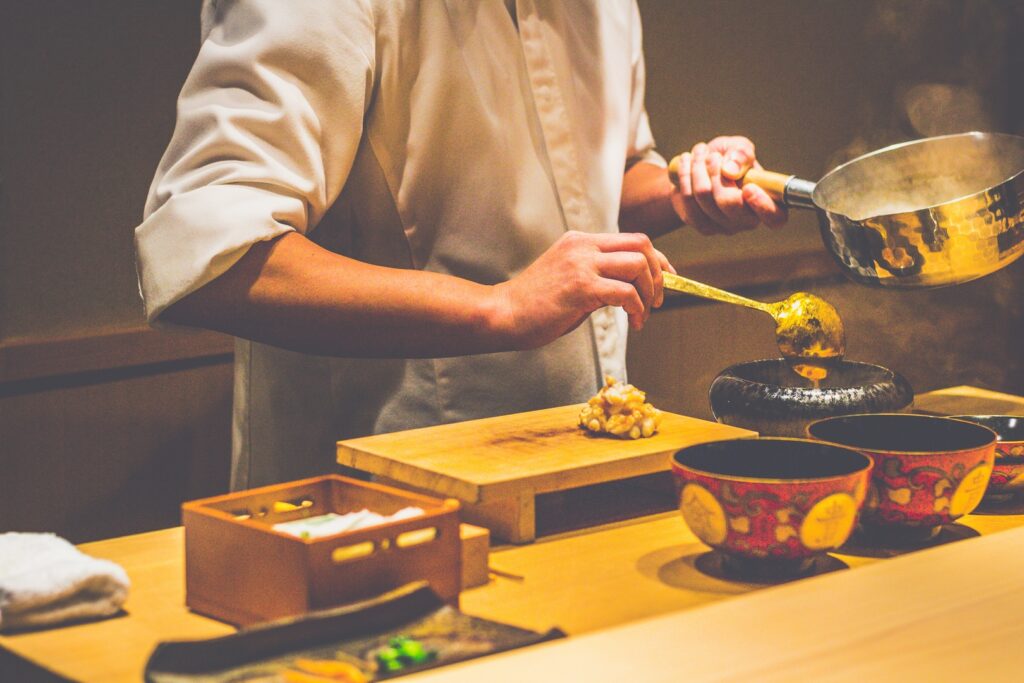
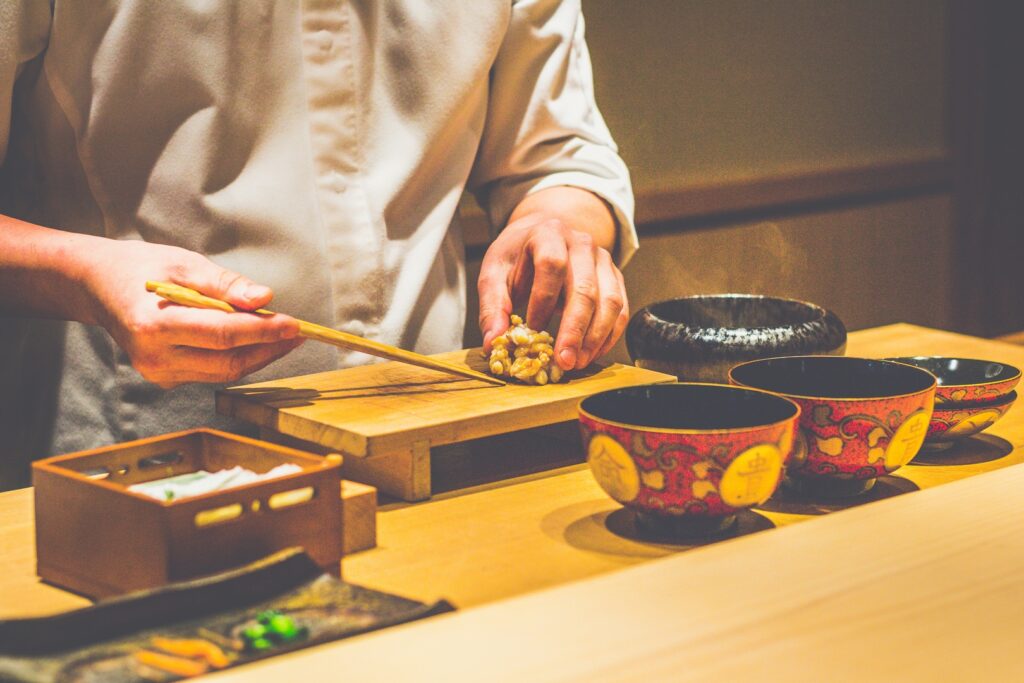
Accompanying the lobster is a silky chawanmushi, a savory steamed egg custard that serves as the perfect base for the rich lobster meat. The chawanmushi’s smooth texture contrasts beautifully with the slight crunch and sweetness of the Ise Ebi, elevating its natural flavor while adding an extra layer of depth.
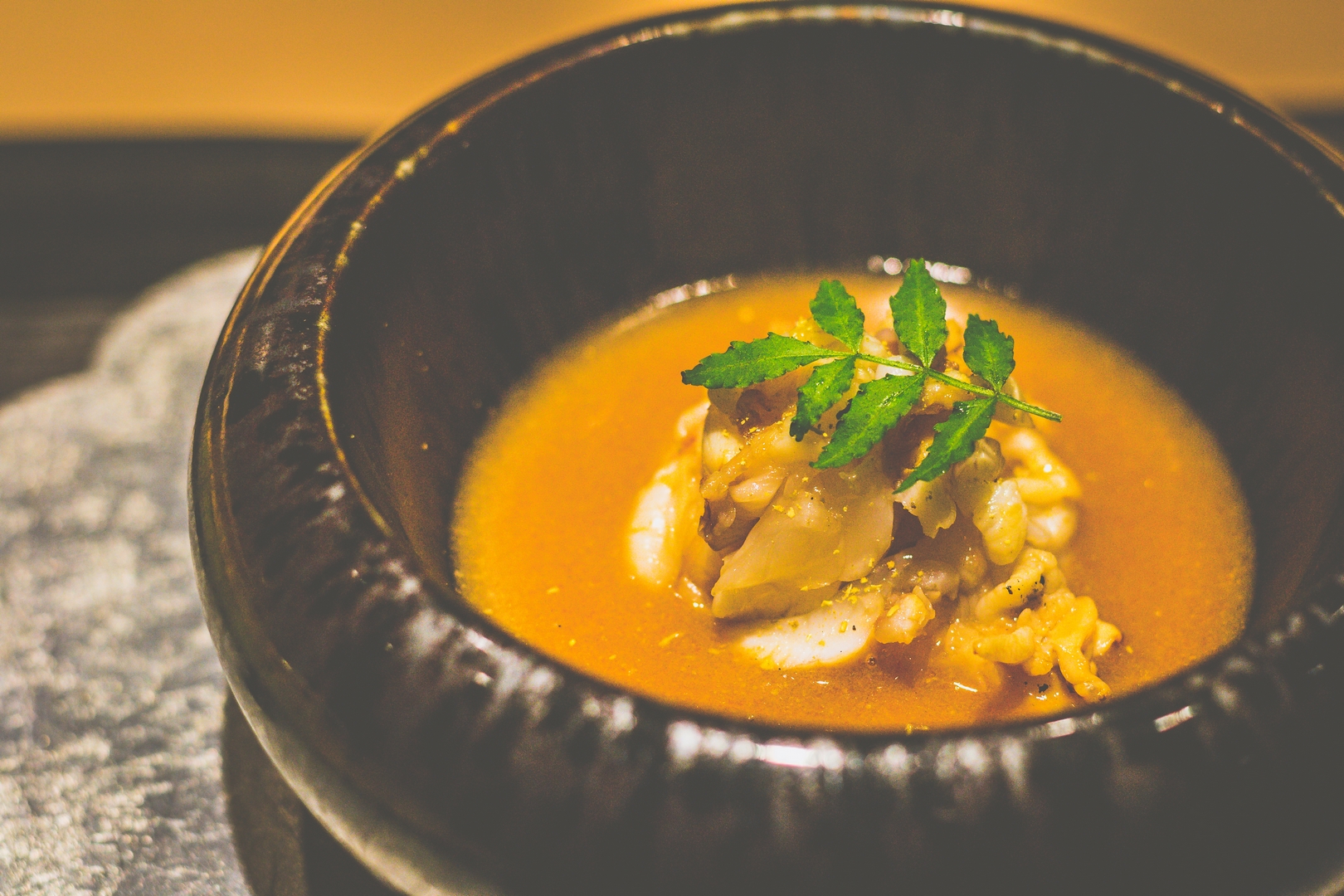
Adding to the complexity is a touch of siso (perilla), whose subtle peppery notes and refreshing aroma cut through the richness of the lobster and egg custard, providing a pleasant balance.
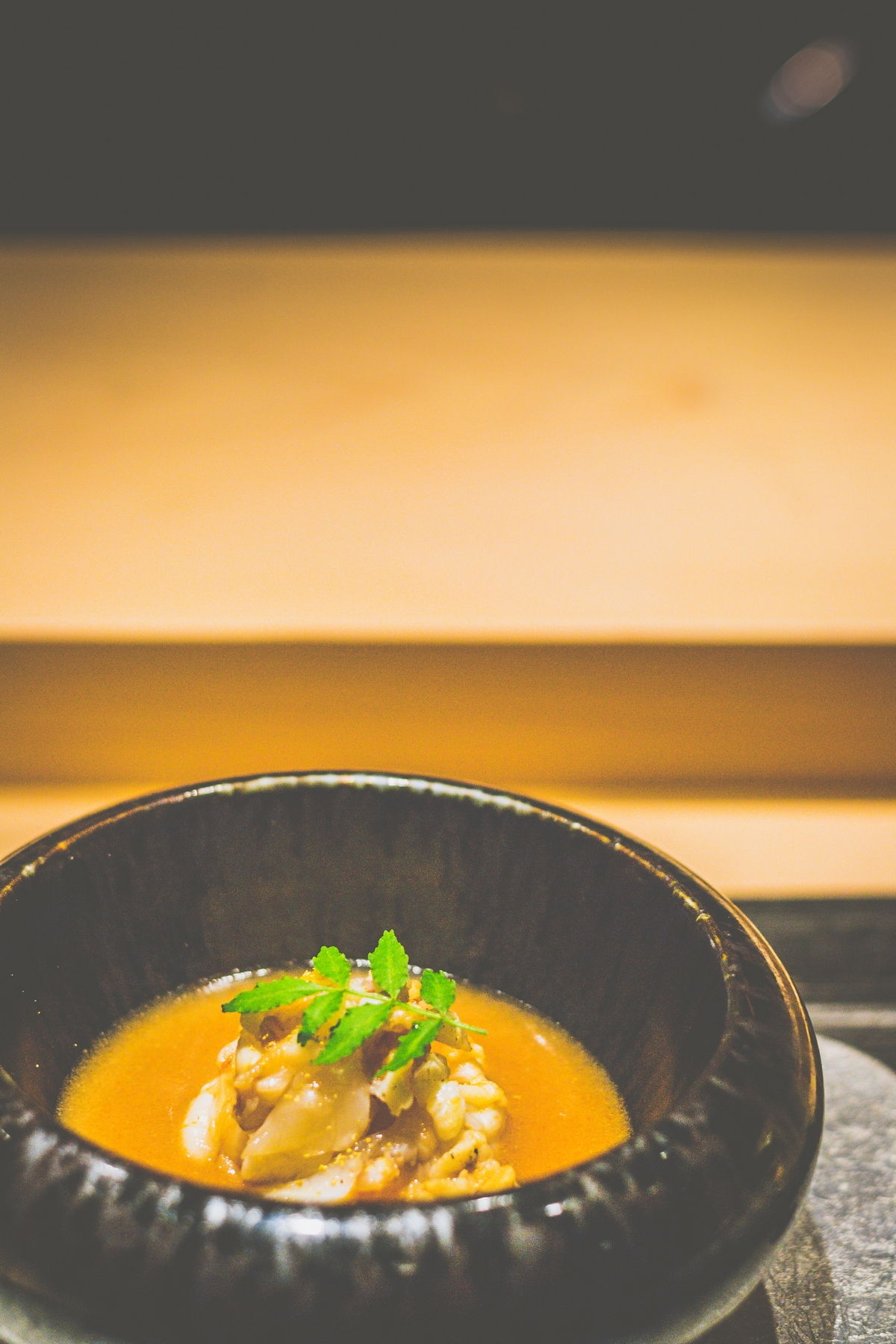
This dish is a brilliant interplay of textures and flavors, from the tender lobster to the creamy egg custard and the refreshing siso.
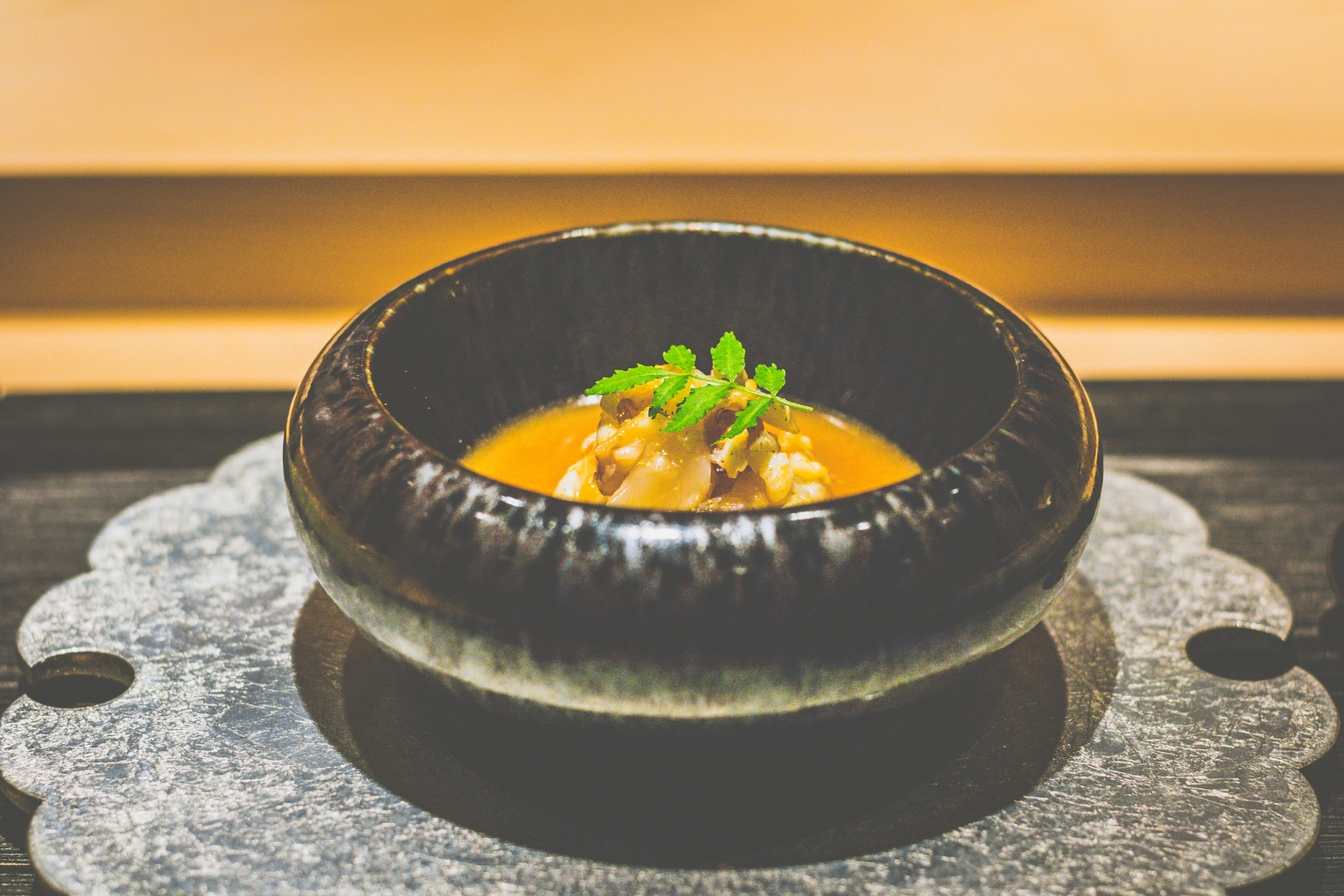
TUNA
Kaga Lotus Root / Yuzu Chile Peppers
This dish presents an exquisite balance of rich, succulent tuna paired with the vibrant, tangy flavors of yuzu and the gentle heat of chile peppers, creating a symphony of tastes that excite the palate. The tuna, expertly prepared, is fresh and tender, offering a clean, meaty texture that is perfectly complemented by the tangy, citrusy kick of the yuzu pepper sauce. The yuzu provides a refreshing burst of citrus, elevating the natural sweetness of the tuna and adding a layer of complexity with its sharp, aromatic profile.
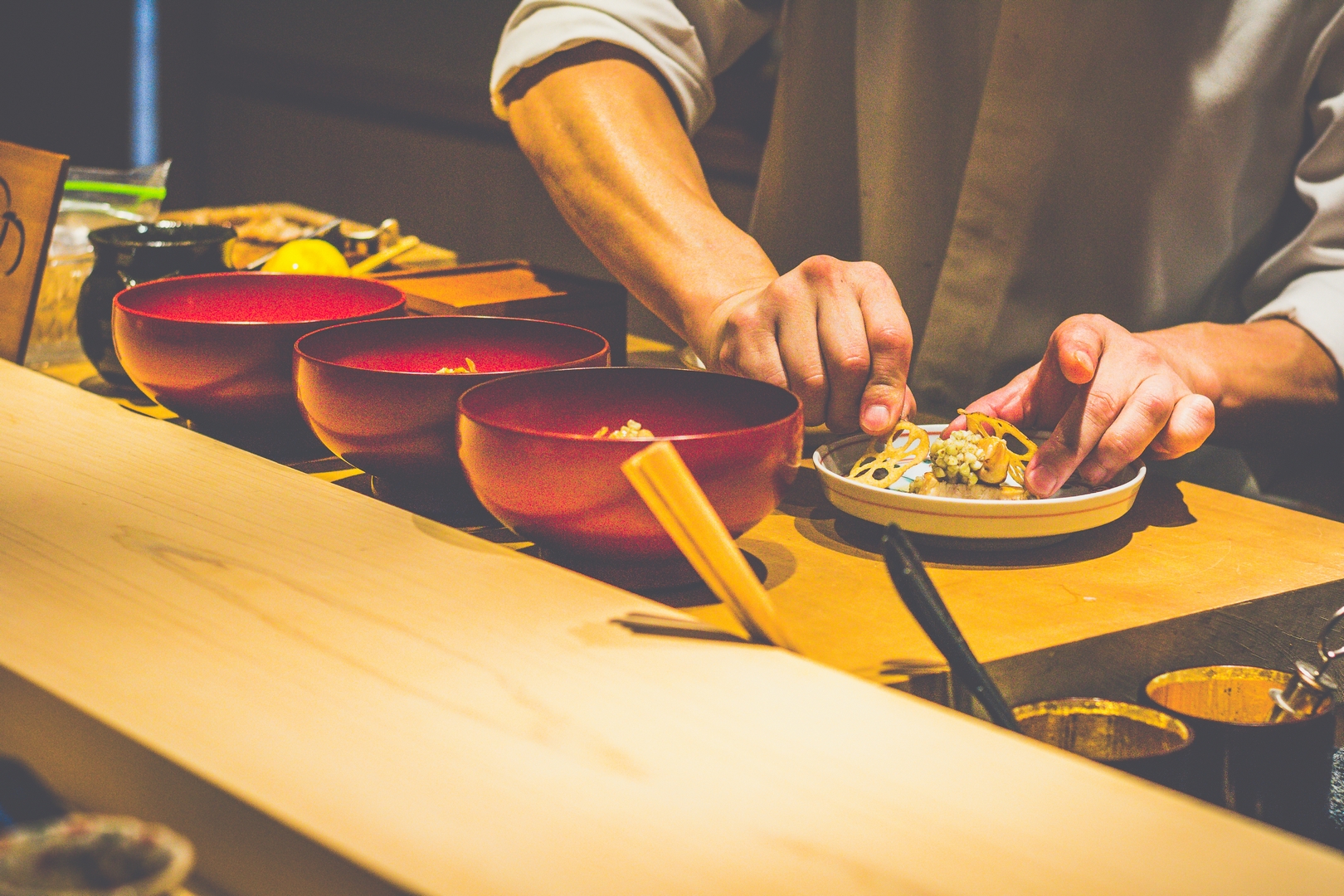
The fried Kaga lotus root cracker adds a delightful contrast in both texture and flavor. Its crispiness and subtle earthiness balance out the richness of the tuna and the zing of the yuzu pepper sauce, offering a satisfying crunch that provides both visual appeal and textural depth to the dish. The thin, crisp crackers are light yet impactful, adding an extra layer of nuance to every bite.
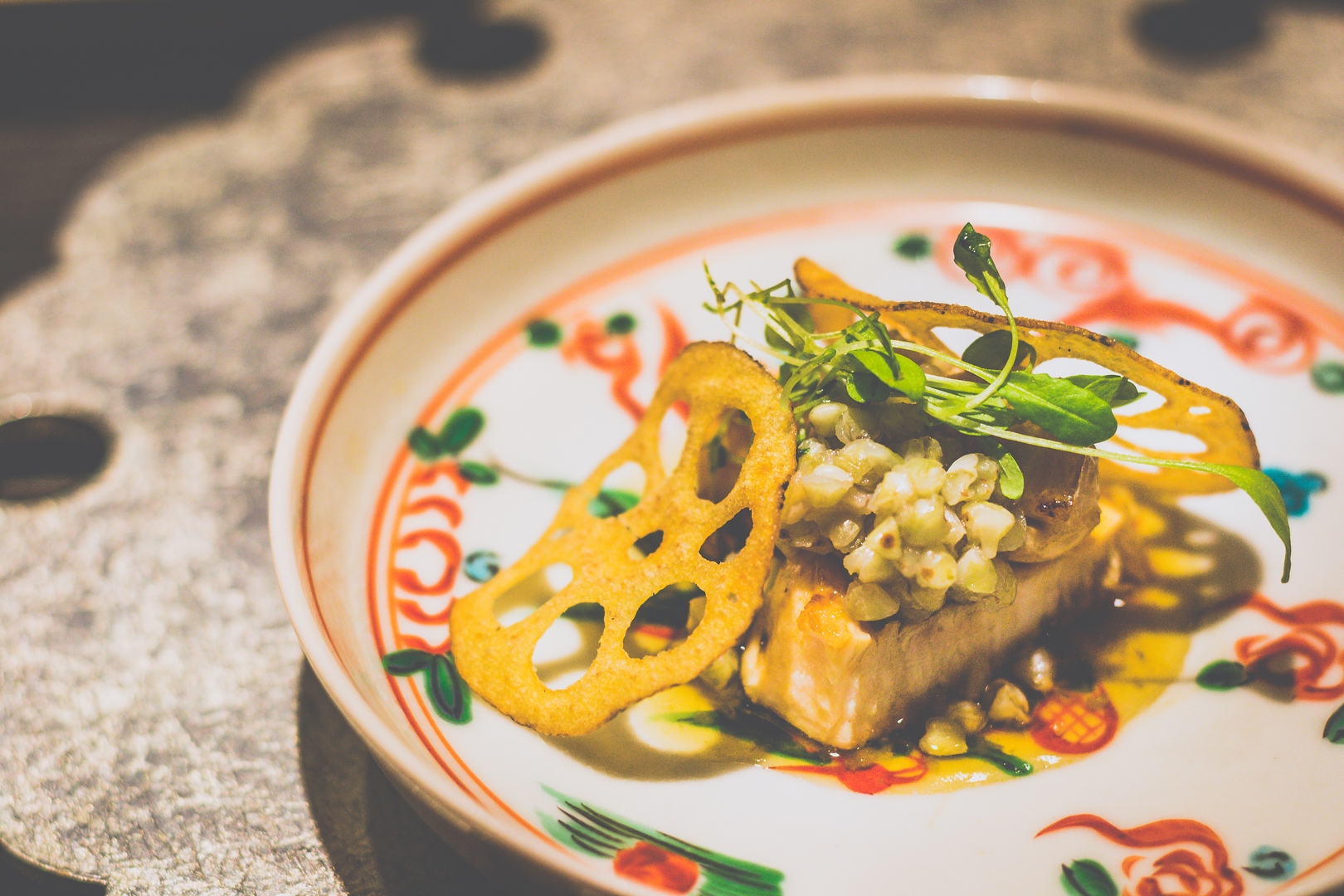
The infusion of chile peppers adds a delicate heat, which complements the refreshing citrus notes of yuzu without overwhelming the dish. The heat builds gradually, offering a gentle spice that tingles on the tongue, while the other flavors remain bright and balanced.
This dish embodies the essence of modern Japanese cuisine, where tradition meets innovation, delivering a bold and refreshing culinary experience.
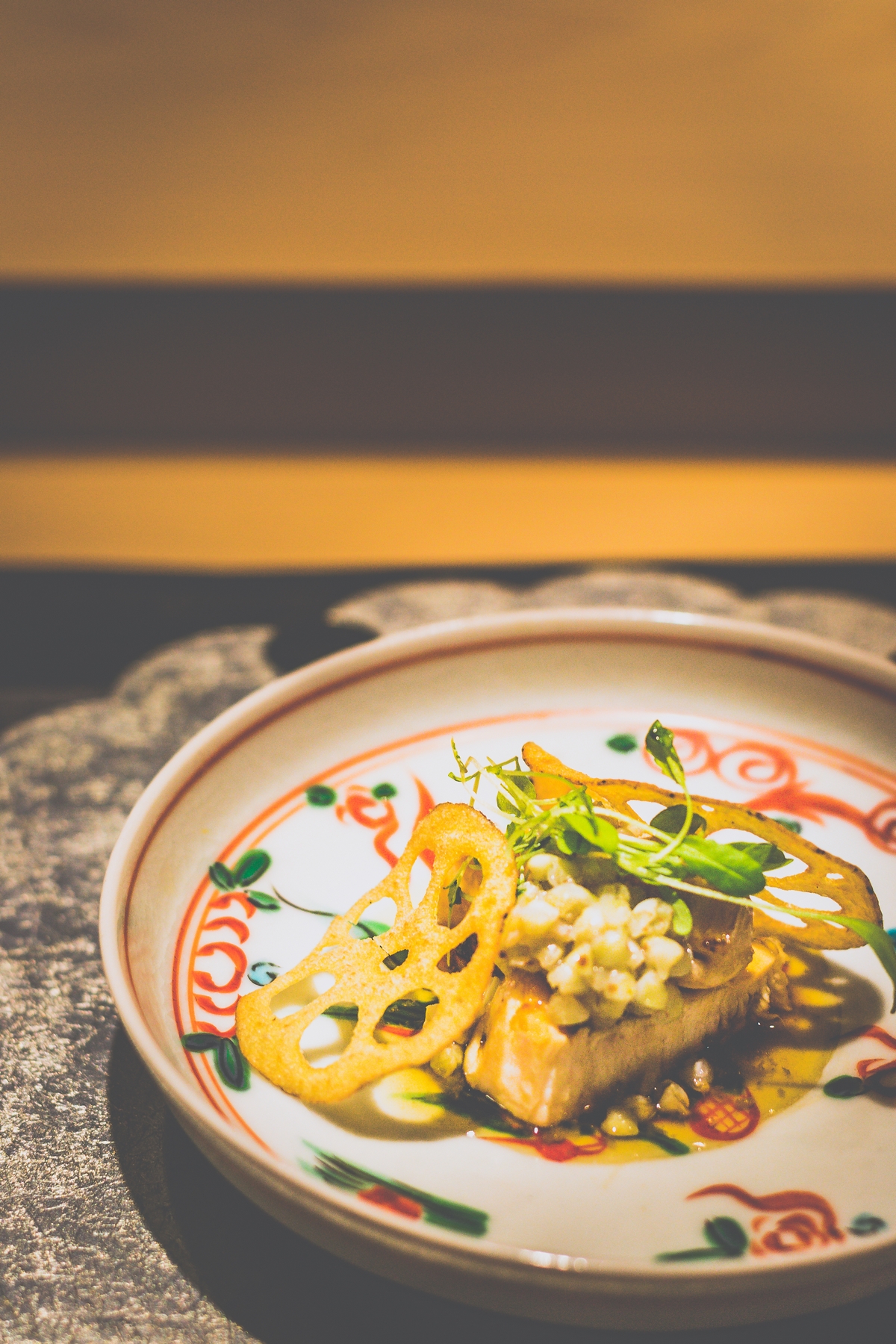
HYOGO MATSUBAGANI
Kani Miso / Sudachi
This dish is a true celebration of the delicate yet bold flavors of Hyogo Matsubagani, or snow crab, which takes center stage with its tender, sweet meat. The deep frying technique used for the crab enhances its natural flavors while giving it a wonderfully crispy, golden exterior. The crunch of the batter contrasts perfectly with the sweet, succulent crab meat inside, creating a delightful balance of textures in each bite.
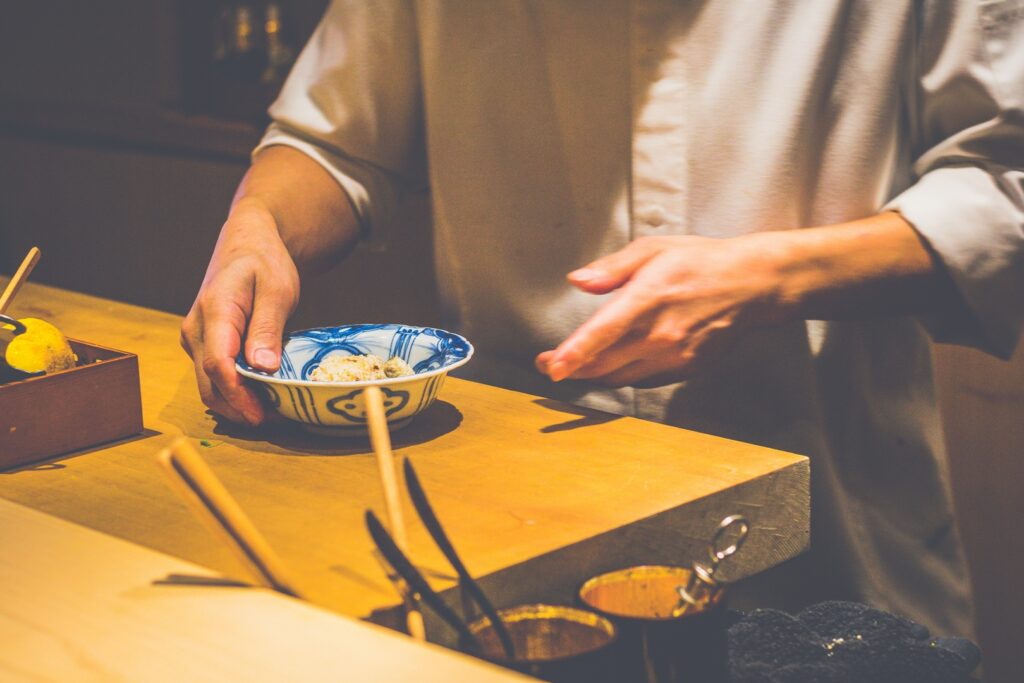
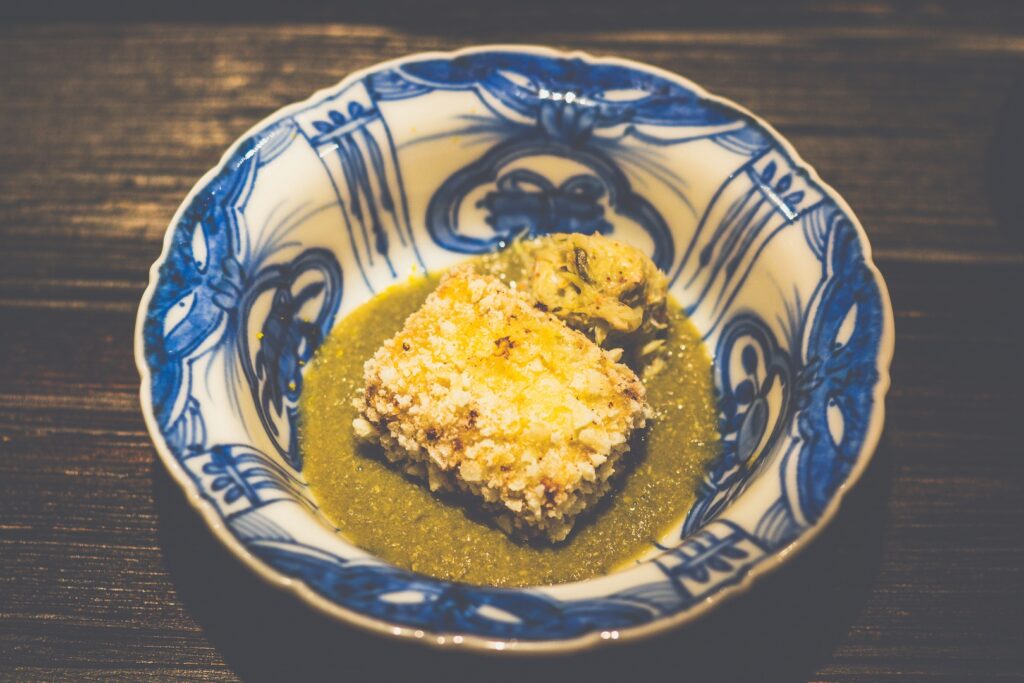
The accompanying kani miso, a rich and savory crab innards paste, brings an umami-packed punch to the dish. Its smooth, slightly creamy texture pairs beautifully with the crisp crab, offering an indulgent, earthy flavor that complements the sweetness of the crab meat. The richness of the miso sauce is balanced by the sudachi, a Japanese citrus that adds a refreshing, tangy note to the dish. Its bright acidity cuts through the richness of the kani miso and enhances the natural sweetness of the crab, providing a perfect contrast.
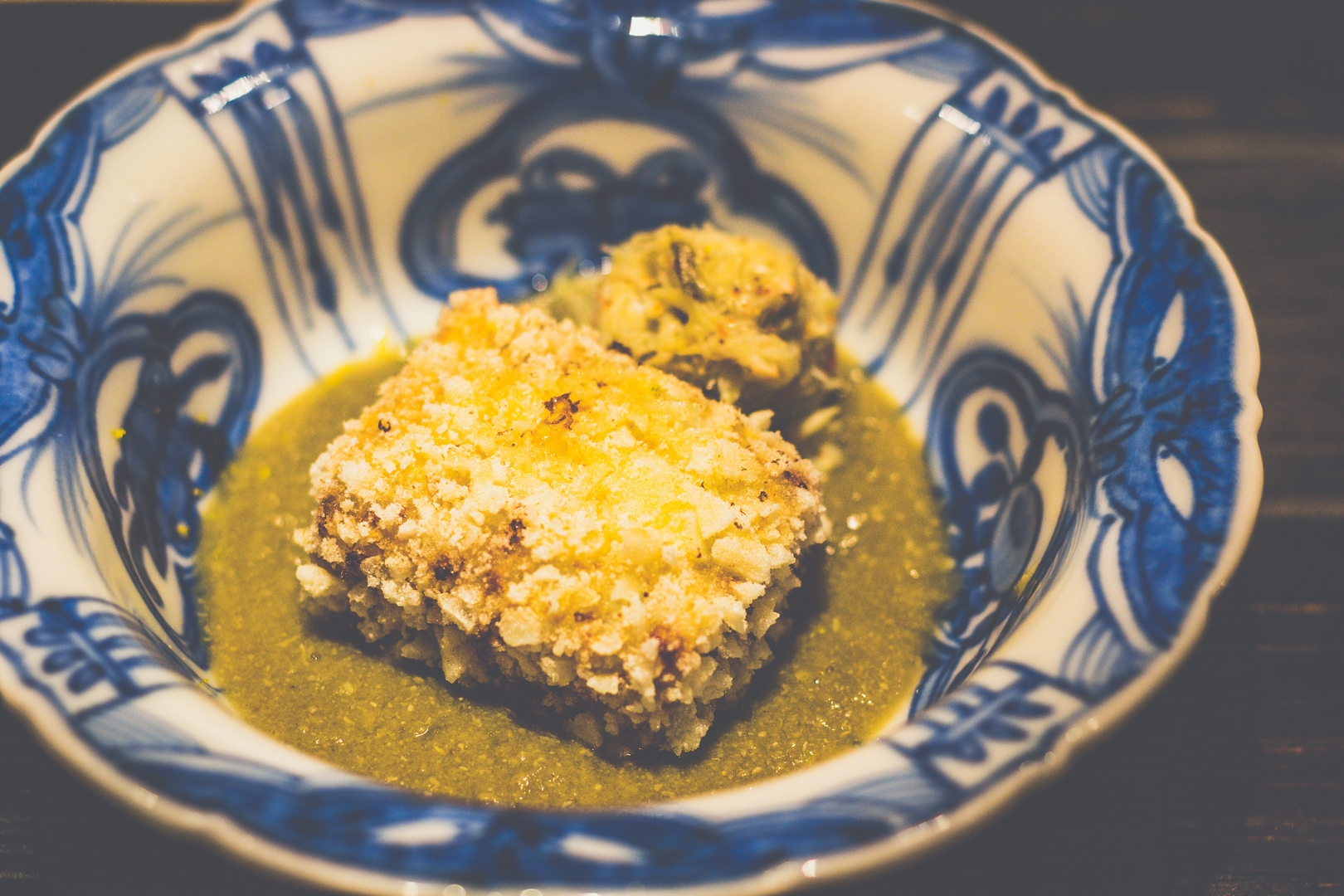
Together, the deep-fried snow crab, kani miso, and sudachi create a complex yet harmonious tasting experience. The crispiness of the crab, the umami of the miso, and the zesty freshness of the sudachi work in perfect unison, making this dish an unforgettable indulgence.
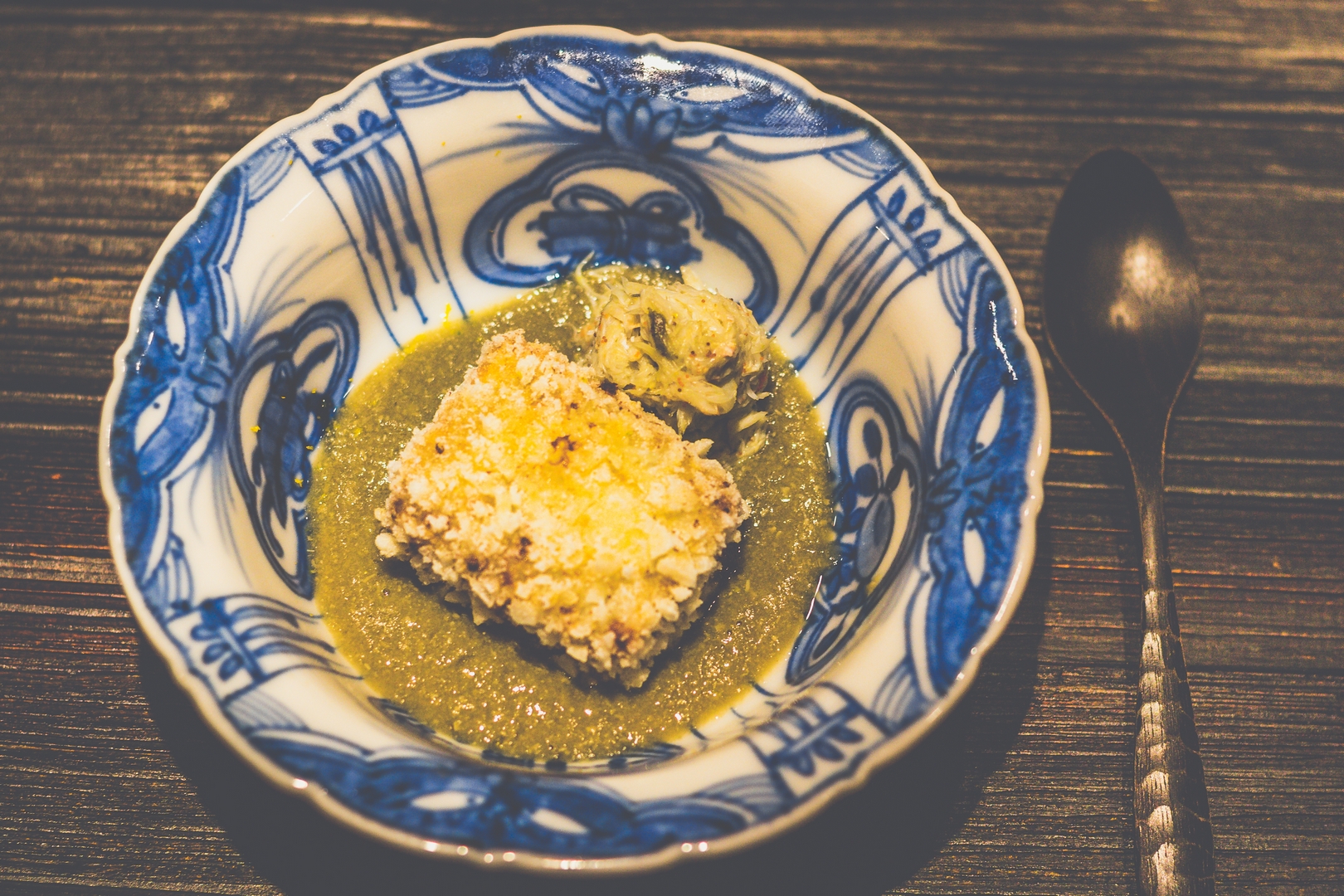
Suggested Sake Pairing: NOTO JUNMAI DAIGINJO MUROKA NAMA GENSHU
This unfiltered raw sake offers a unique, juicy dryness that evokes the essence of the sea breeze. Made from local rice cultivated without pesticides or chemical fertilizers, it boasts rich, exquisite umami flavors. On the nose, a lush melon aroma introduces the sake, setting the stage for a sweet, smooth mouthfeel that immediately reveals its deep, rich flavor. As you sip, a refreshing acidity rises to balance the richness, creating a harmonious combination of umami and sourness that leaves a juicy impression on the palate.
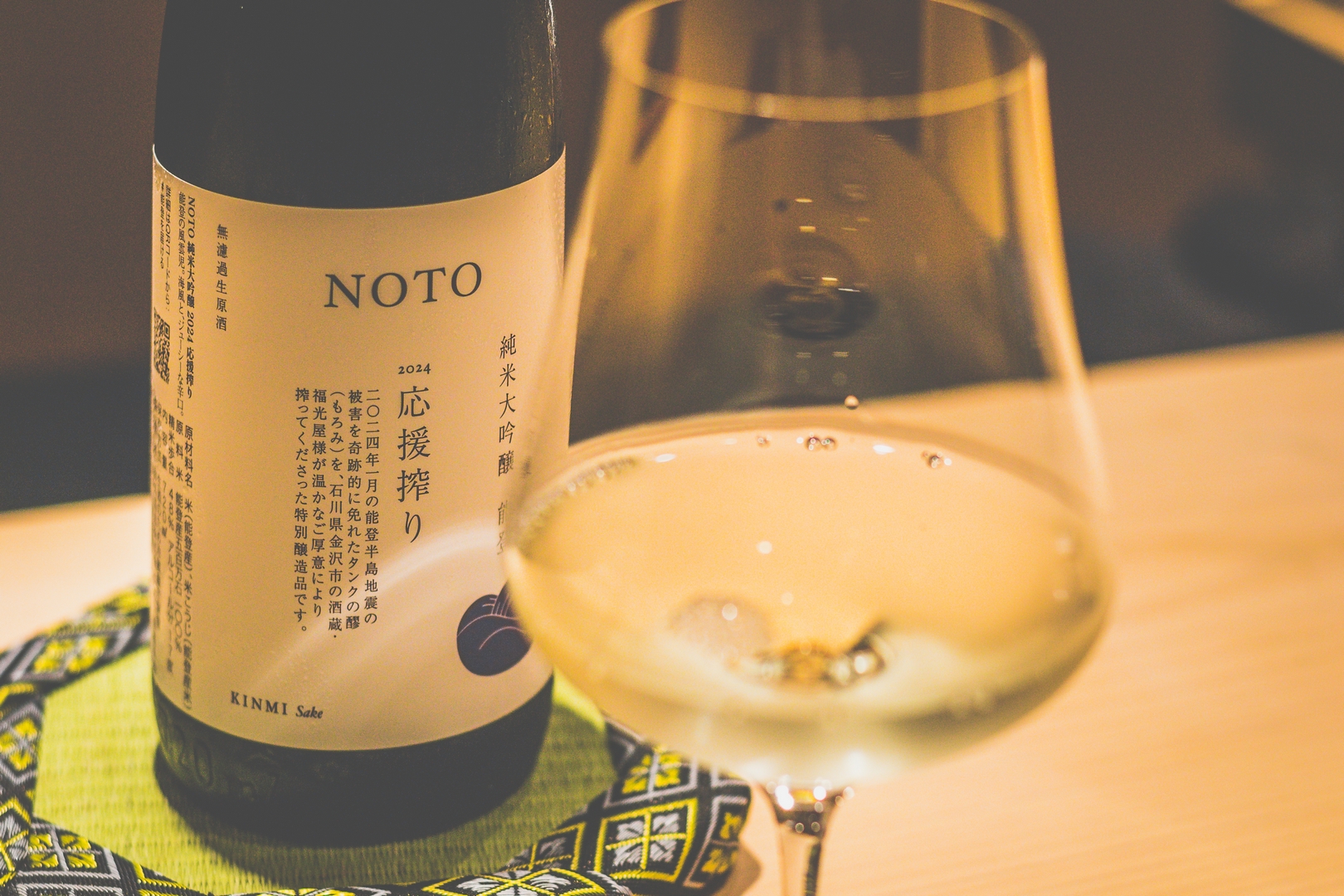
This sake pairs beautifully with the deep-fried snow crab dish. The rich umami of the crab and its indulgent miso sauce is perfectly complemented by the sake’s smooth sweetness and refreshing acidity. The melon-like aroma and its clean finish elevate the sweetness of the crab meat, while the sake’s acidity cuts through the richness of the kani miso and fried crust, offering a refreshing contrast and enhancing the overall experience. Together, they create a balanced, multi-layered tasting experience that highlights both the delicate and bold elements of the dish.
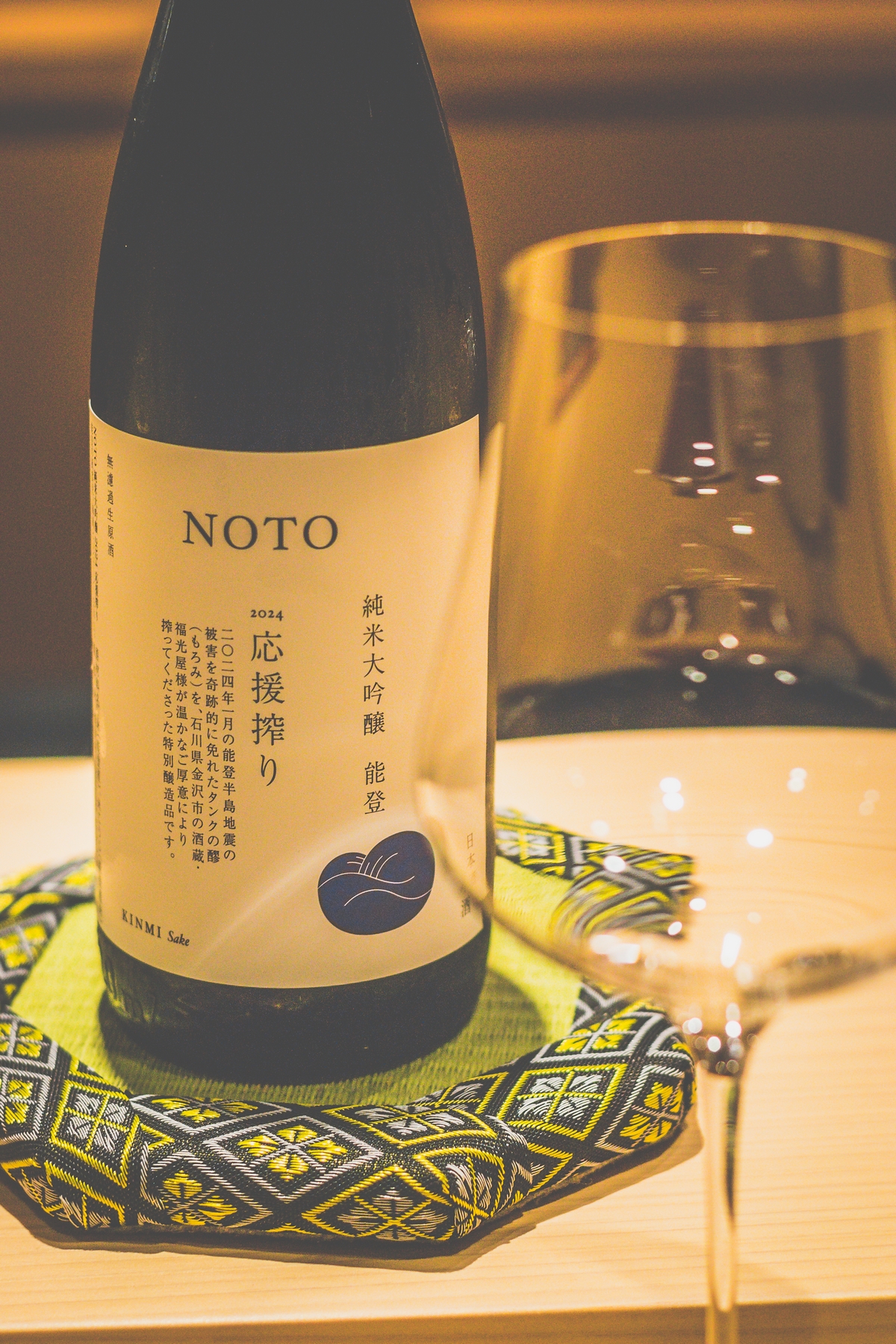
KYOTO MIYABI BEEF
Kyoto Leek / Kyoto Burdock
Kyoto Miyabi beef represents the pinnacle of refinement and meticulous craftsmanship, much like the city itself, renowned for its deep cultural heritage. This extraordinary beef is sourced from the Japanese Black breed, raised in Kyoto Prefecture under stringent care. The cattle are carefully fattened for over a year at farms registered under Kyoto’s “Kyo-no-kodawari,” a standard of excellence that ensures sustainable and high-quality farming practices. After reaching its peak, the beef is processed in a certified facility, earning the prestigious top classification of A-5 or B-5 from the Japan Meat Grading Association. The result is a rare and exceptional product, prized for its perfect marbling and tender texture.
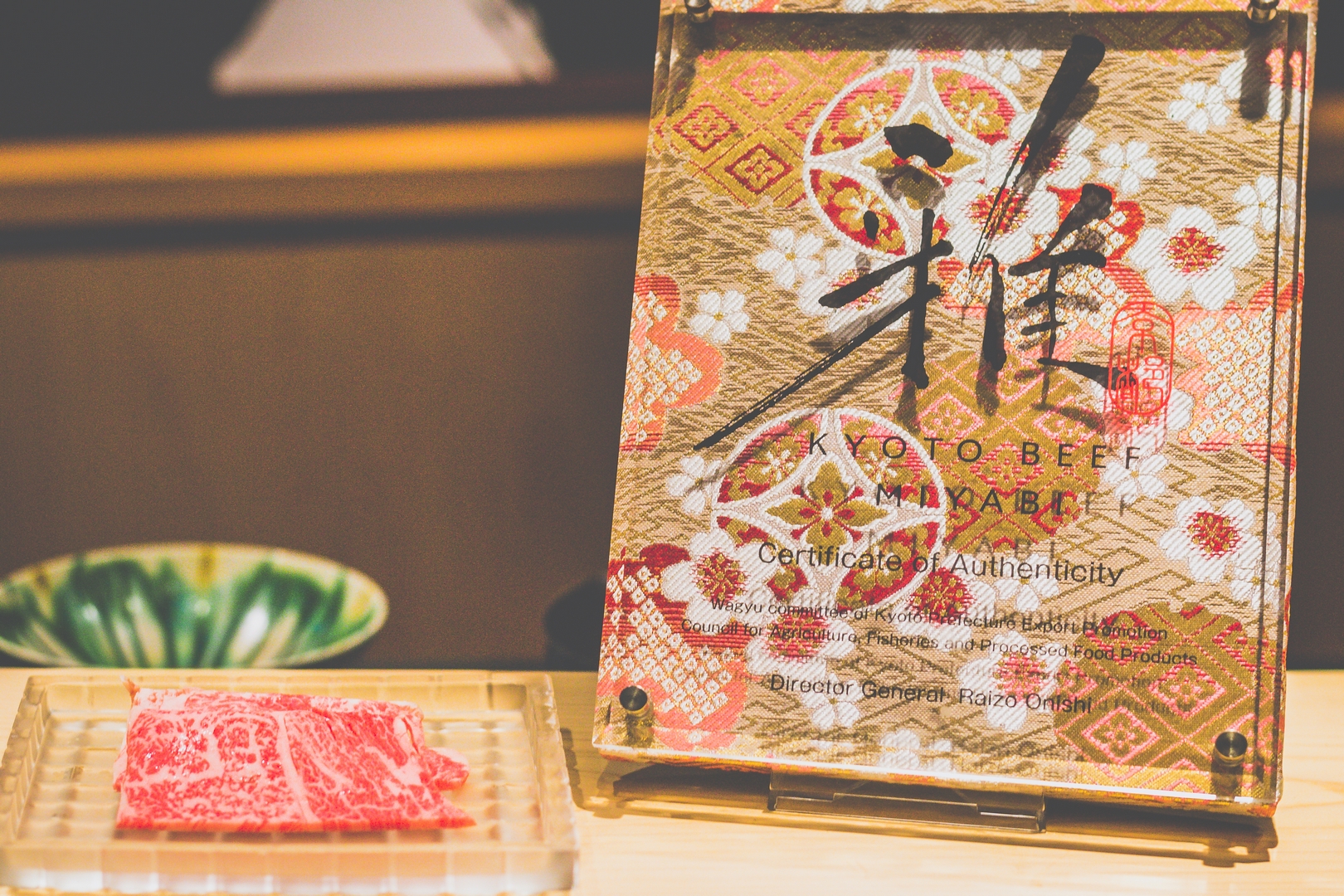
The beef takes center stage in this dish, prepared in the traditional shabu-shabu style. The thin slices of Kyoto Miyabi beef are briefly swished in hot broth, allowing the rich marbling to melt and infuse the meat with flavor. Each piece is a study in tenderness, with a depth of flavor that is both savory and subtly sweet.
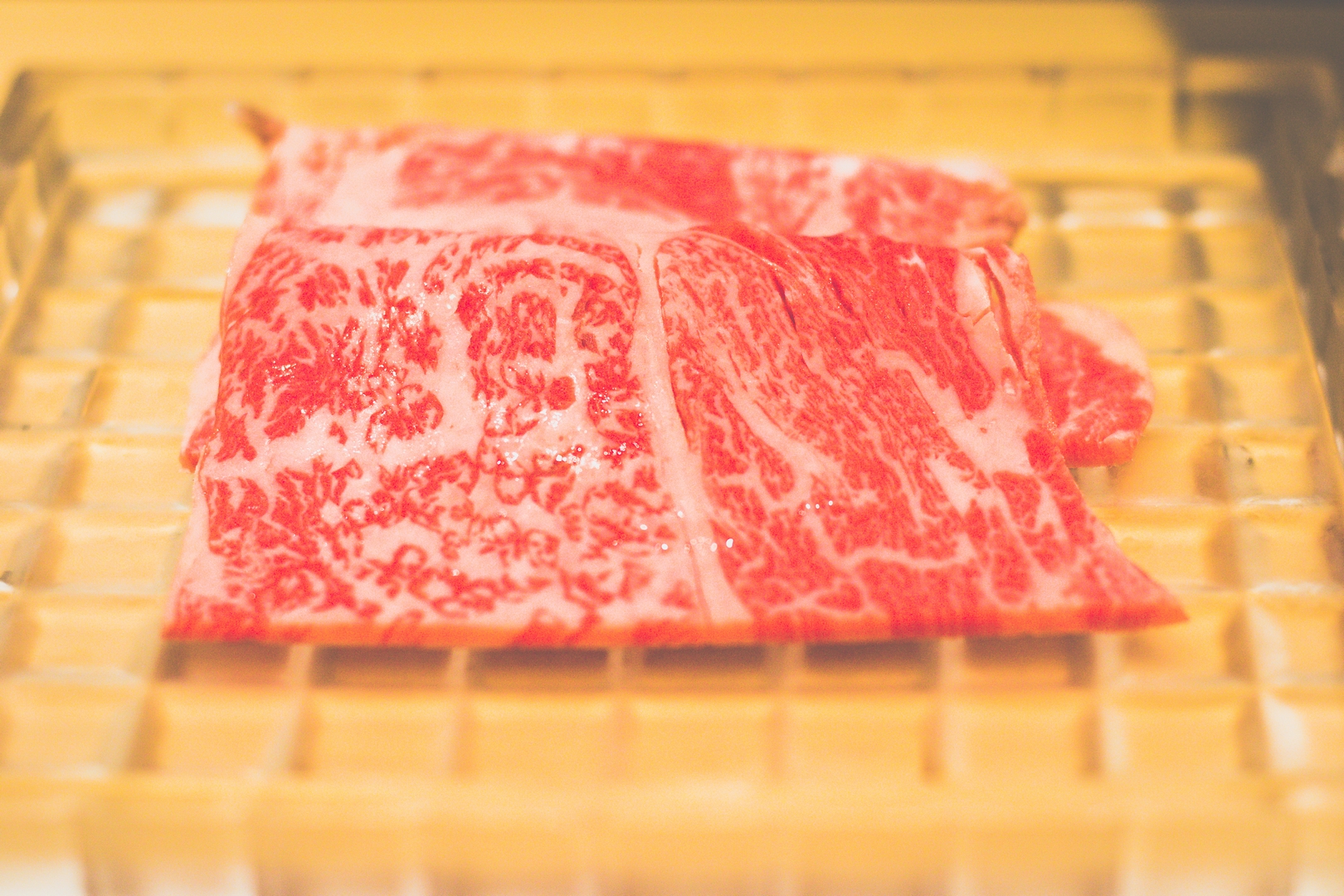
The dish is complemented by Kyoto leek, offering a light, delicate sweetness that balances the richness of the beef, and Kyoto burdock, whose earthy, slightly bitter crunch provides a refreshing contrast. These vegetables, native to the region, add brightness and texture, perfectly enhancing the luxurious beef.
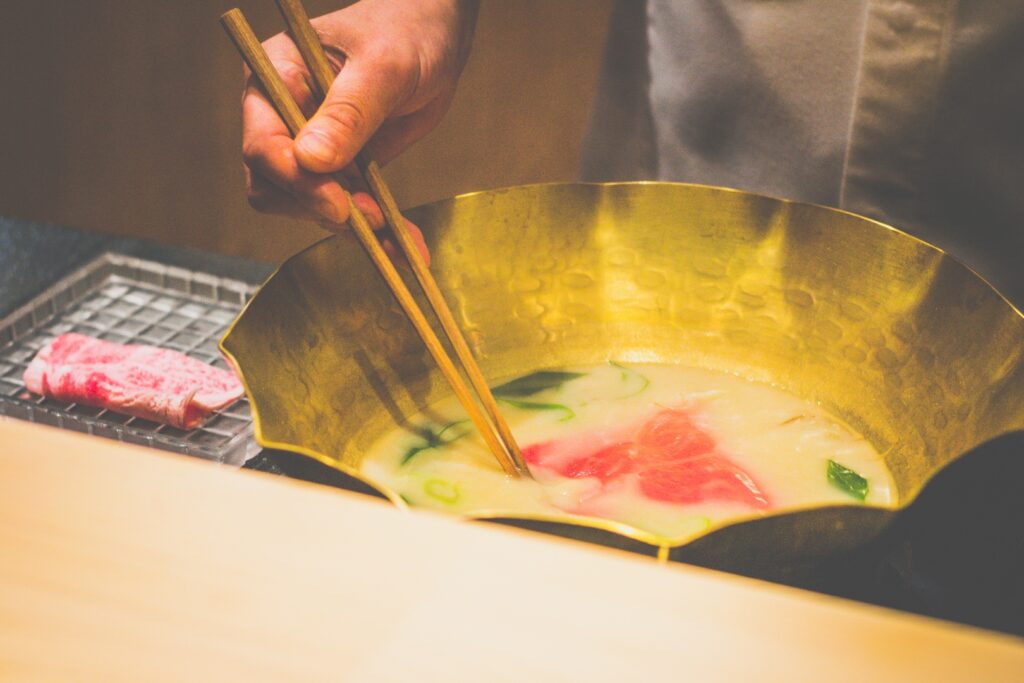
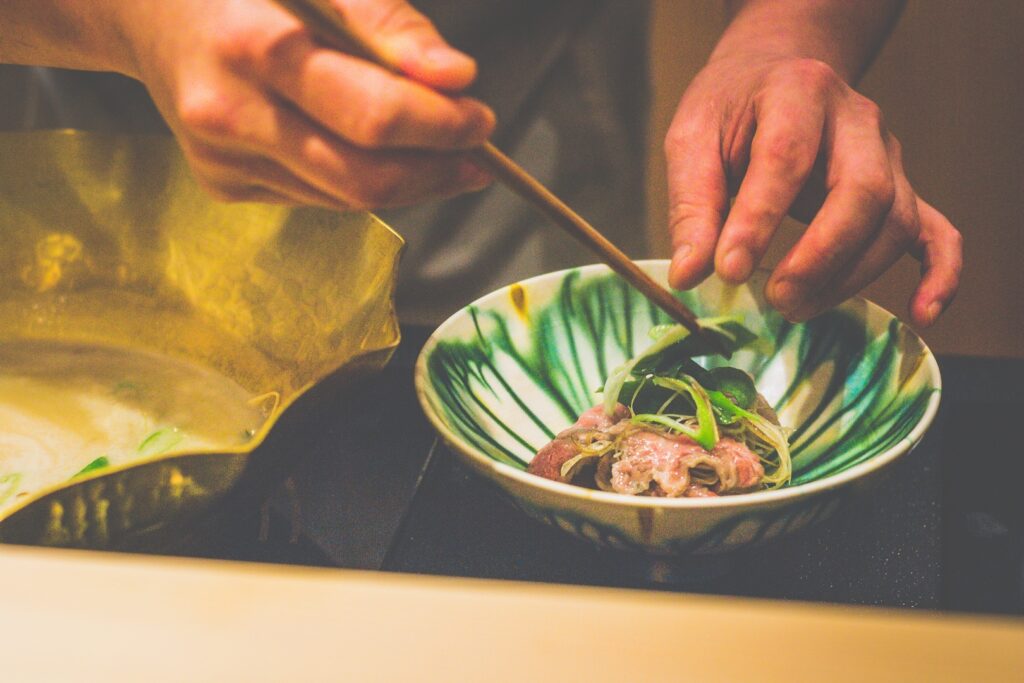
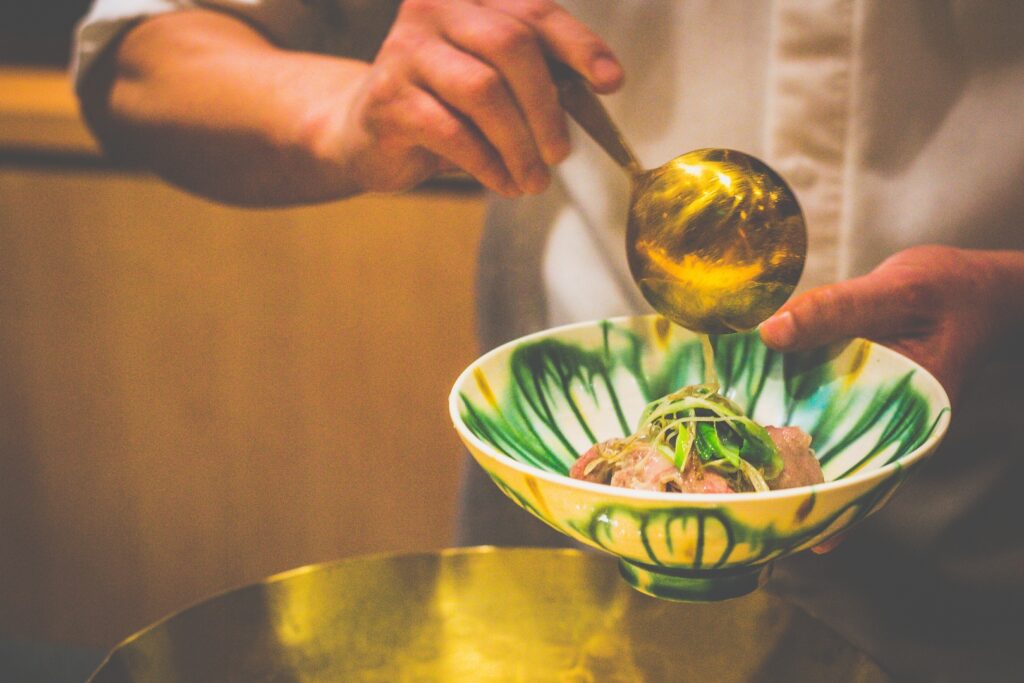
A creamy Kyoto white miso forms the broth, adding a gentle, umami-packed sweetness, while the addition of Kyoto black seven spice provides a warm, aromatic complexity. The spice adds a layer of depth and subtle heat, further enriching the overall tasting experience.
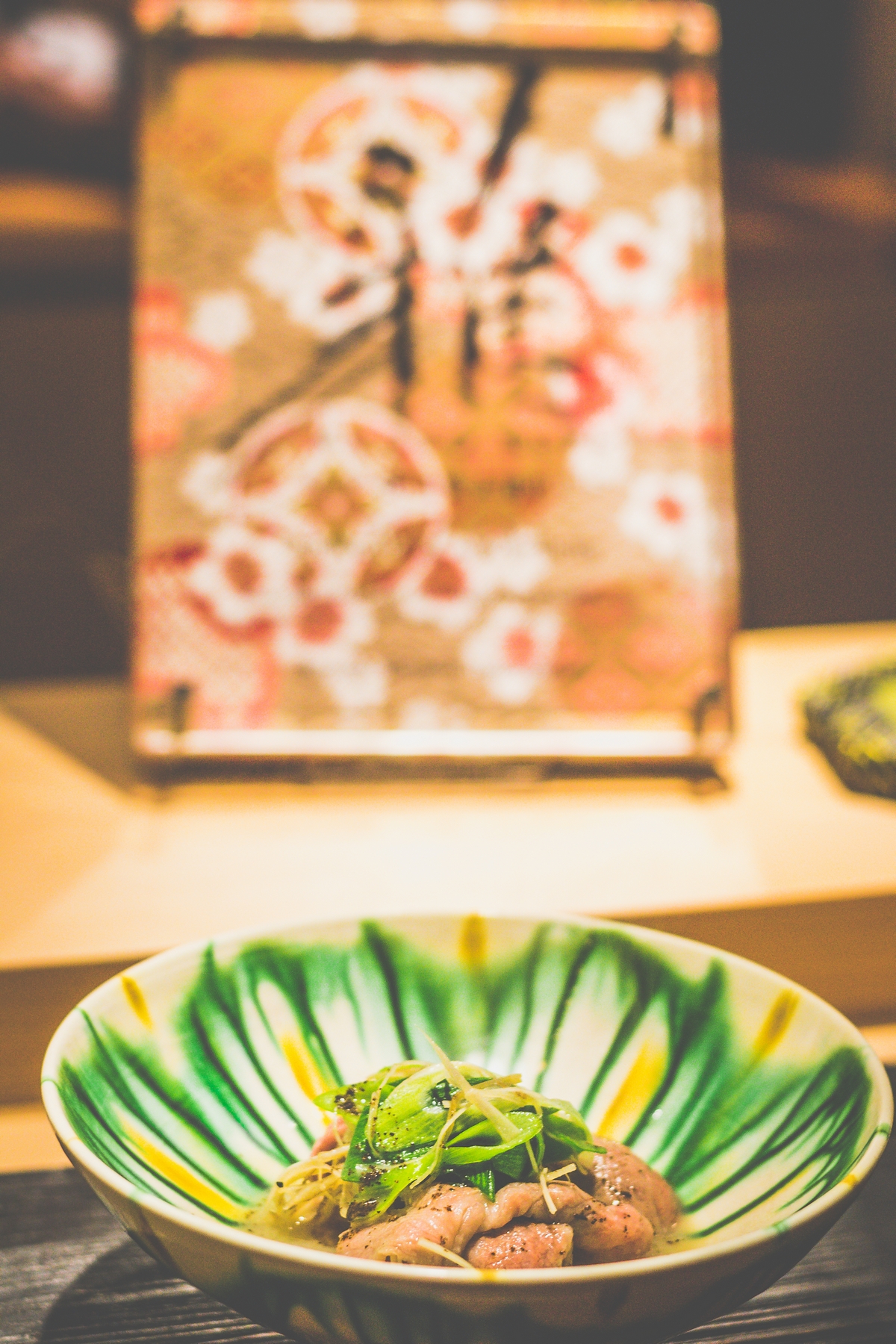
Kyoto Miyabi beef is more than a meal—it’s a reflection of the culture and precision that defines Kyoto itself. This dish highlights the dedication to quality, tradition, and craftsmanship that has been passed down through generations, offering a memorable and indulgent culinary experience.
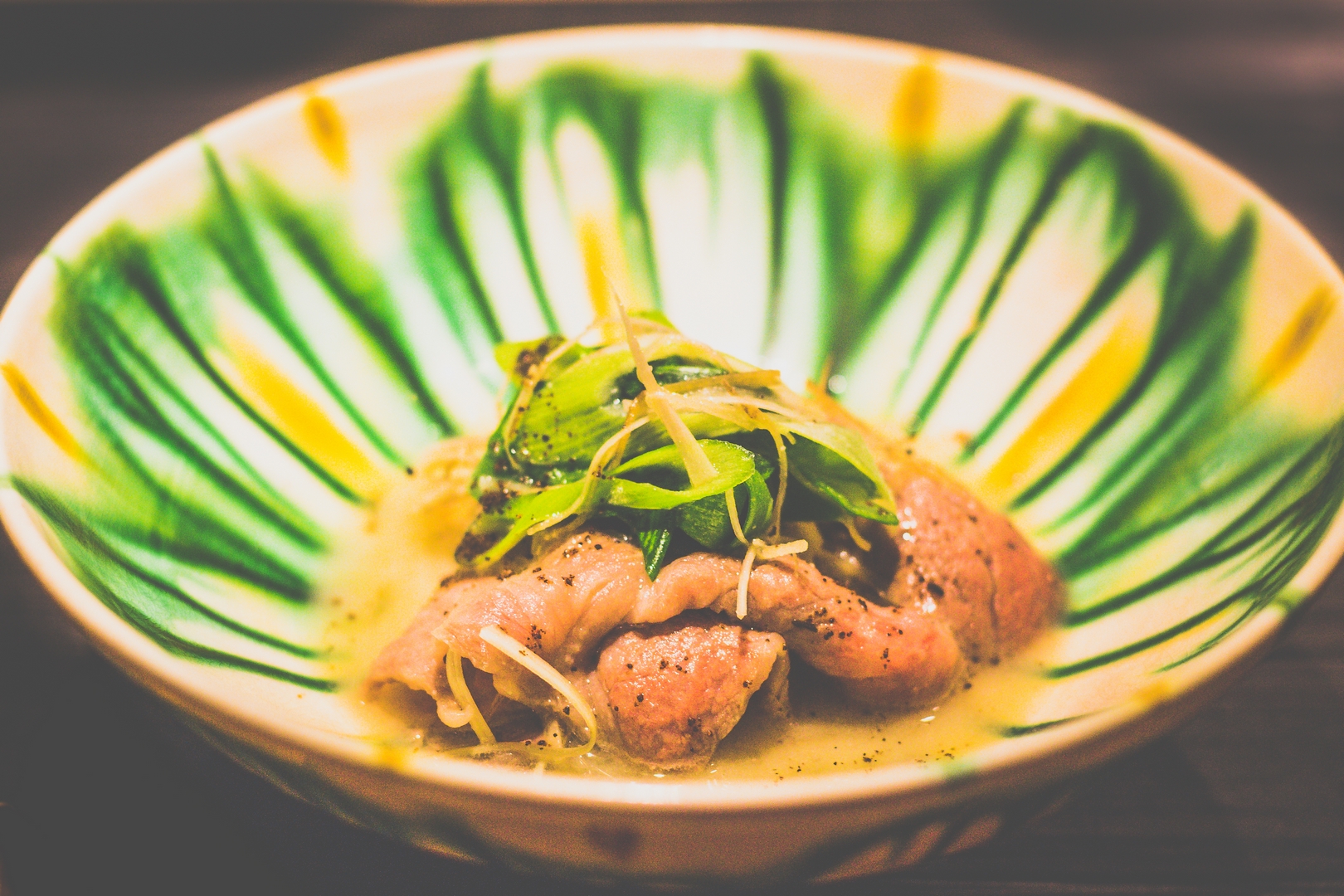
BISQUE SOUP
Cod Milt / DonabeRice
This dish offers a rich and comforting twist on traditional bisque, with a base of Japanese curry bisque that is both aromatic and velvety. The curry sauce brings a savory depth, combining spices and umami to create a warm, satisfying flavor profile. The smoothness of the curry bisque is balanced perfectly by its subtle heat and complexity, giving it a luxurious, creamy texture that coats the palate.
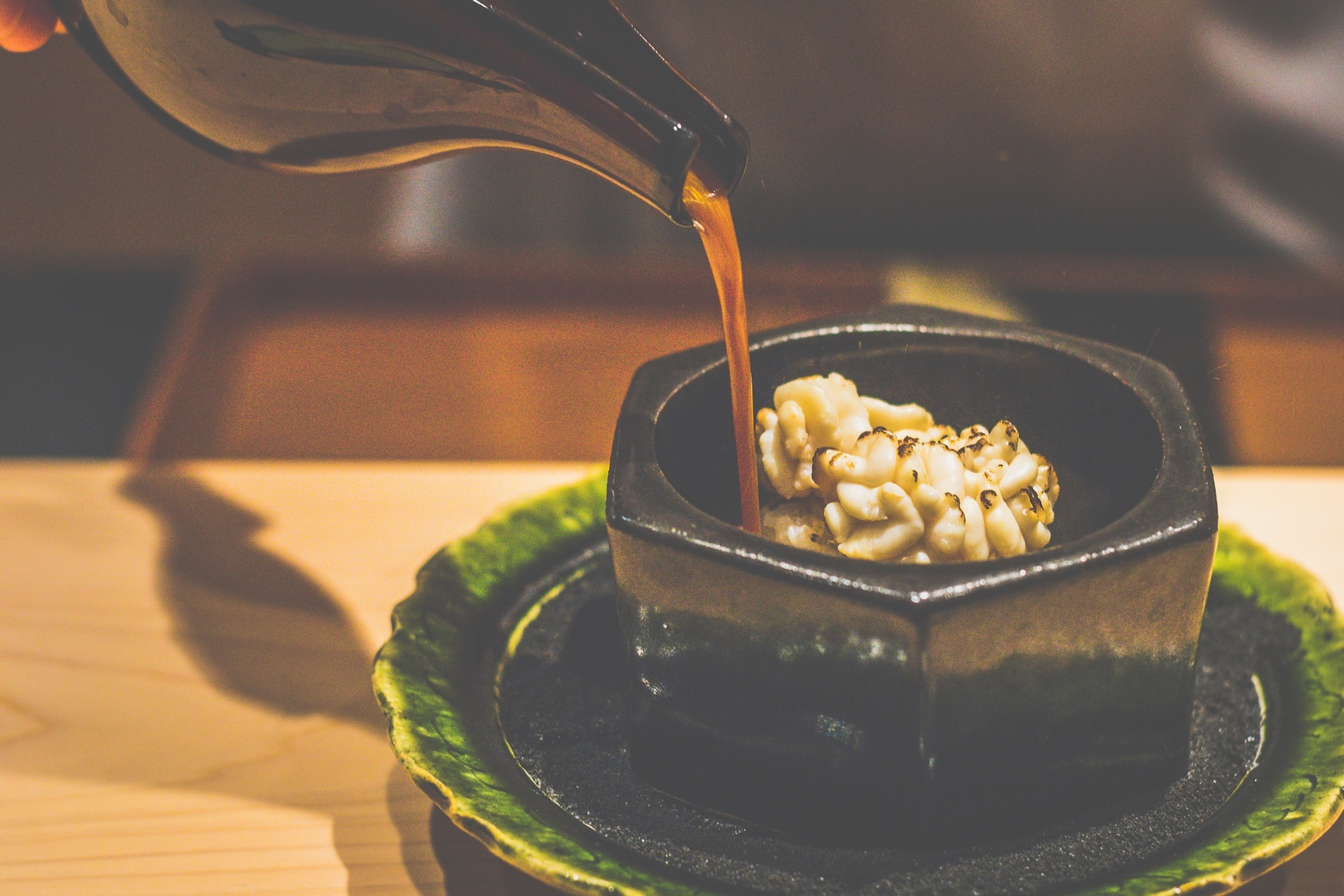
The cod milt, with its delicate, slightly sweet and creamy texture, enriches the bisque, adding a touch of indulgence. Its soft, velvety consistency blends seamlessly with the bold curry flavors, enhancing the soup’s luxurious feel while maintaining a balance of delicate flavors.
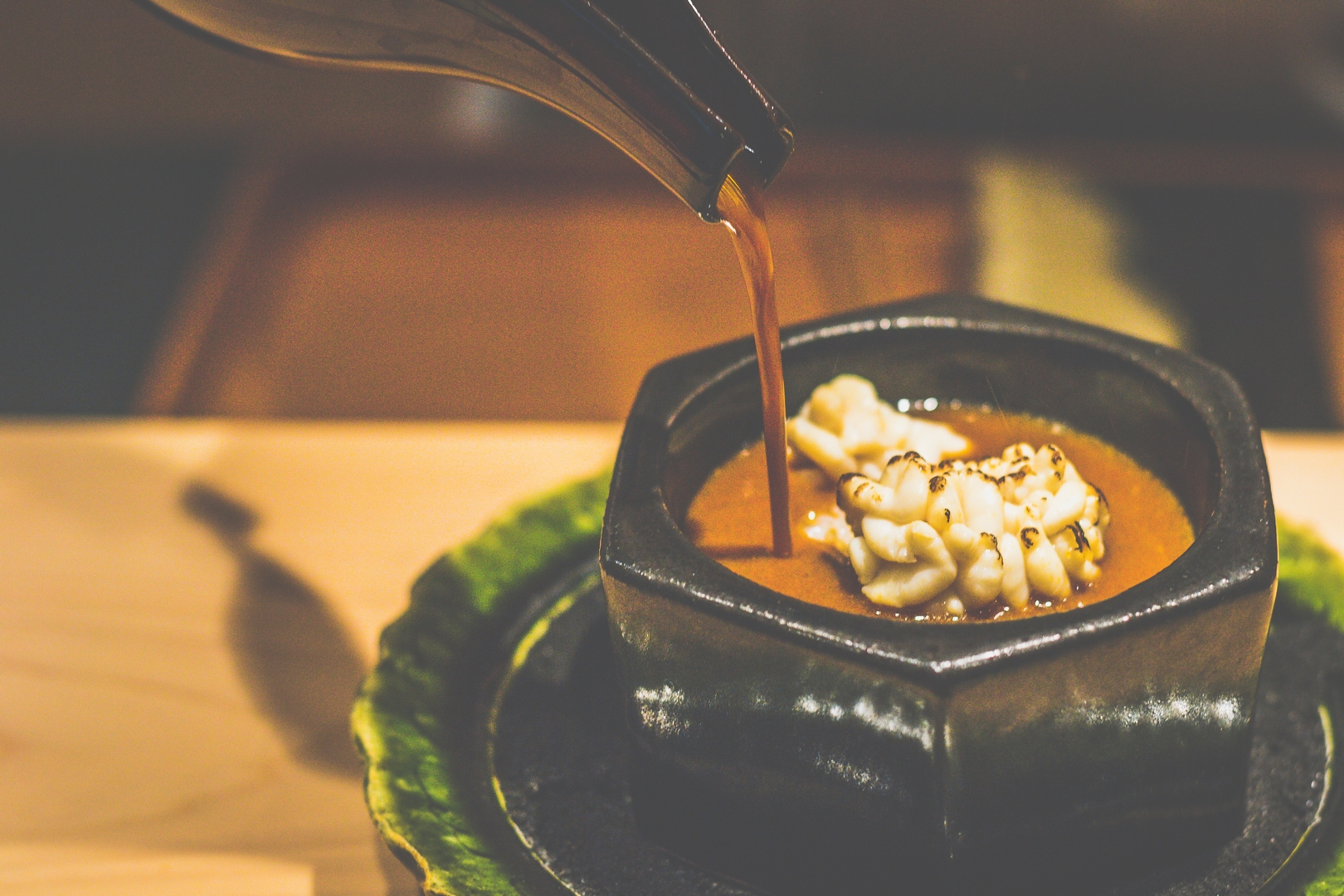
Accompanying the bisque is donabe rice, cooked in a traditional clay pot, which absorbs the essence of the curry sauce. The rice’s slight smokiness and tender texture offer a grounding contrast to the rich and creamy soup, while its slight chewiness provides the perfect vehicle to soak up the flavorful bisque.
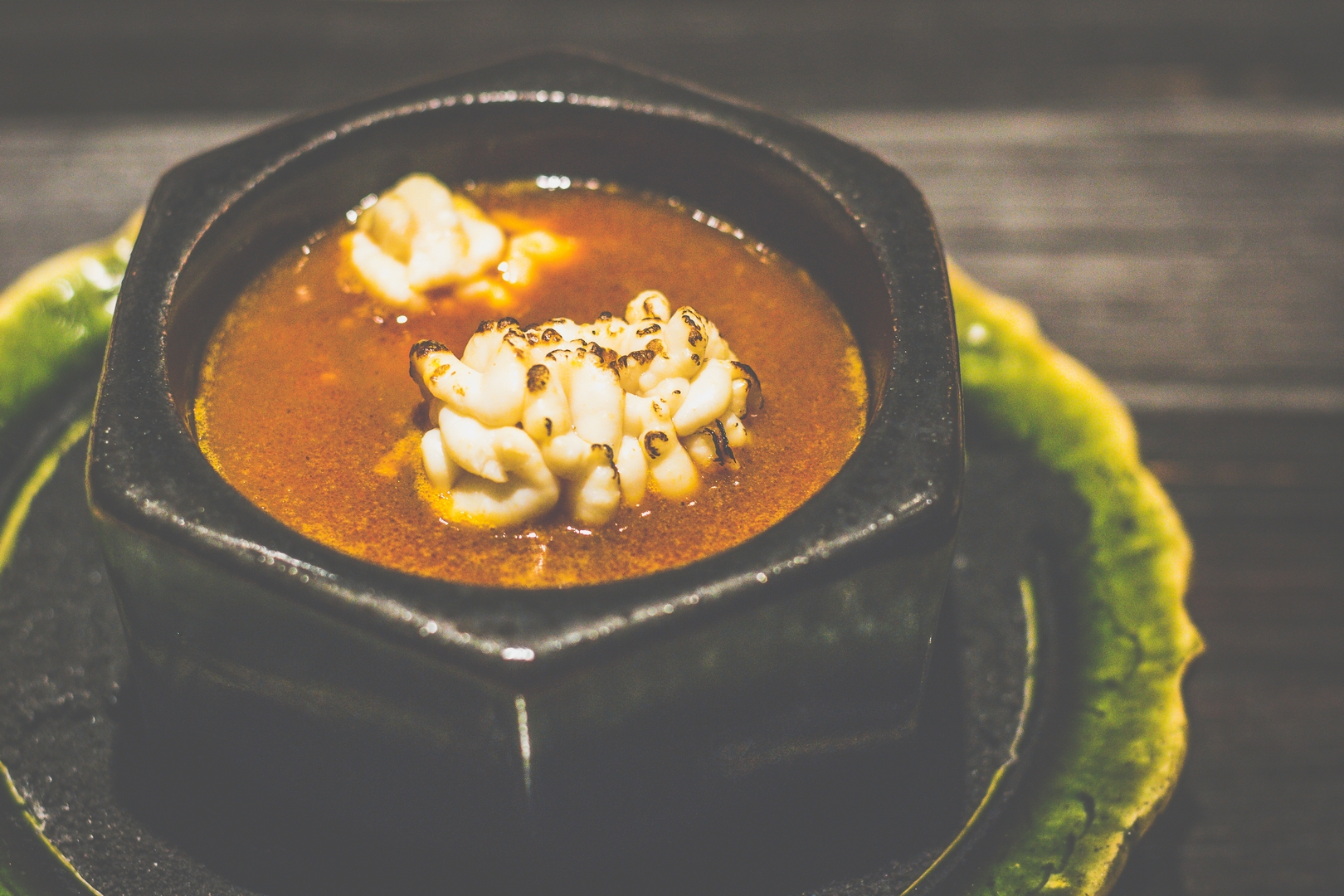
The richness of the curry, the smoothness of the cod milt, and the comforting bite of the donabe rice come together to offer a warm, indulgent dish that feels both traditional and innovative.
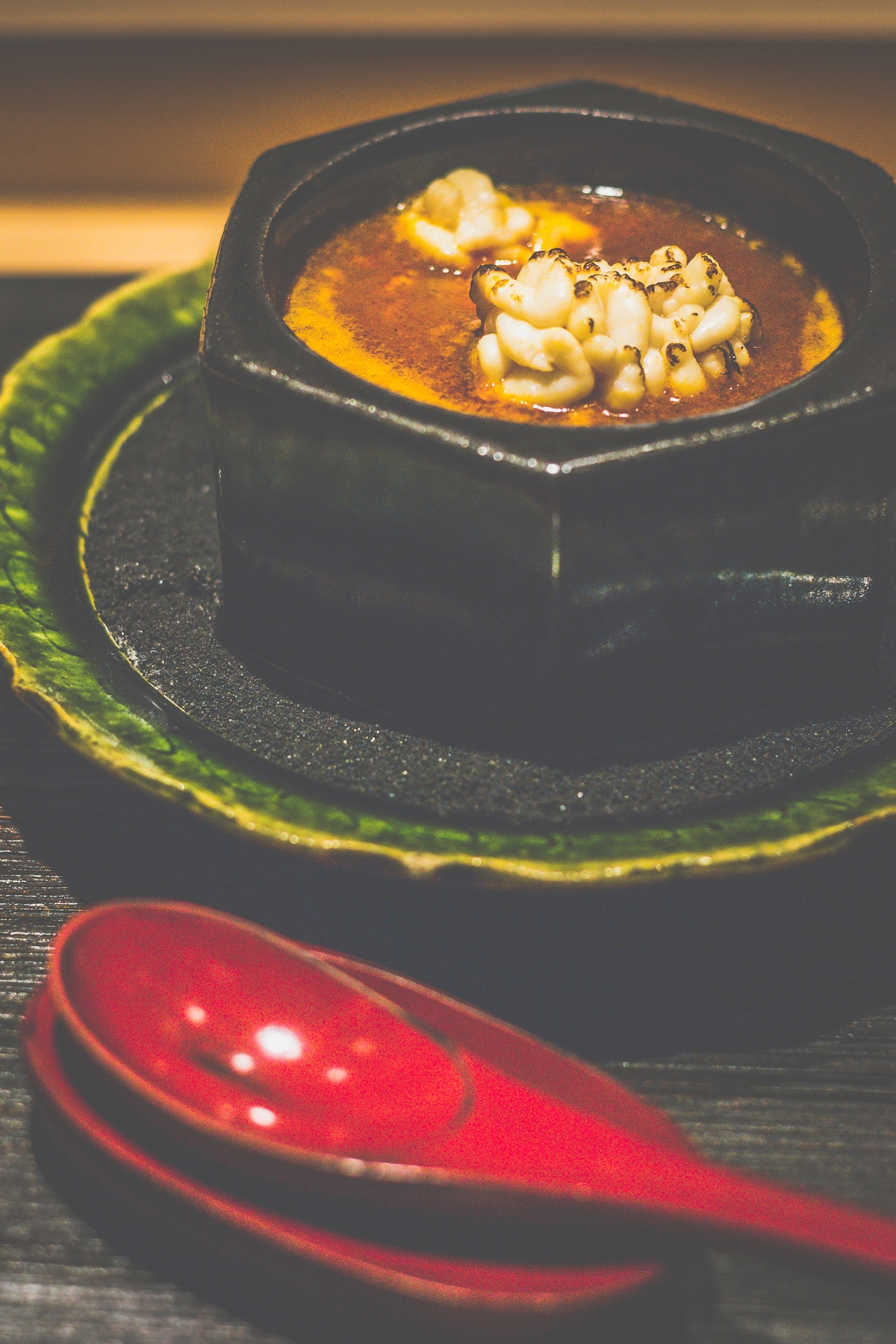
DESSERT
Strawberry / Kaga Bocha
This dessert features a refreshing combination of ripe, sweet strawberries paired with Kaga Bocha ice cream, a delicate treat made from Kaga Bocha tea. The strawberries burst with natural sweetness and vibrant flavor, offering a fresh and fruity contrast to the smooth, creamy texture of the ice cream. The Kaga Bocha ice cream itself carries a subtle, roasted flavor profile, with earthy, slightly nutty notes from the tea, creating a wonderfully balanced contrast to the fruit’s bright flavor.
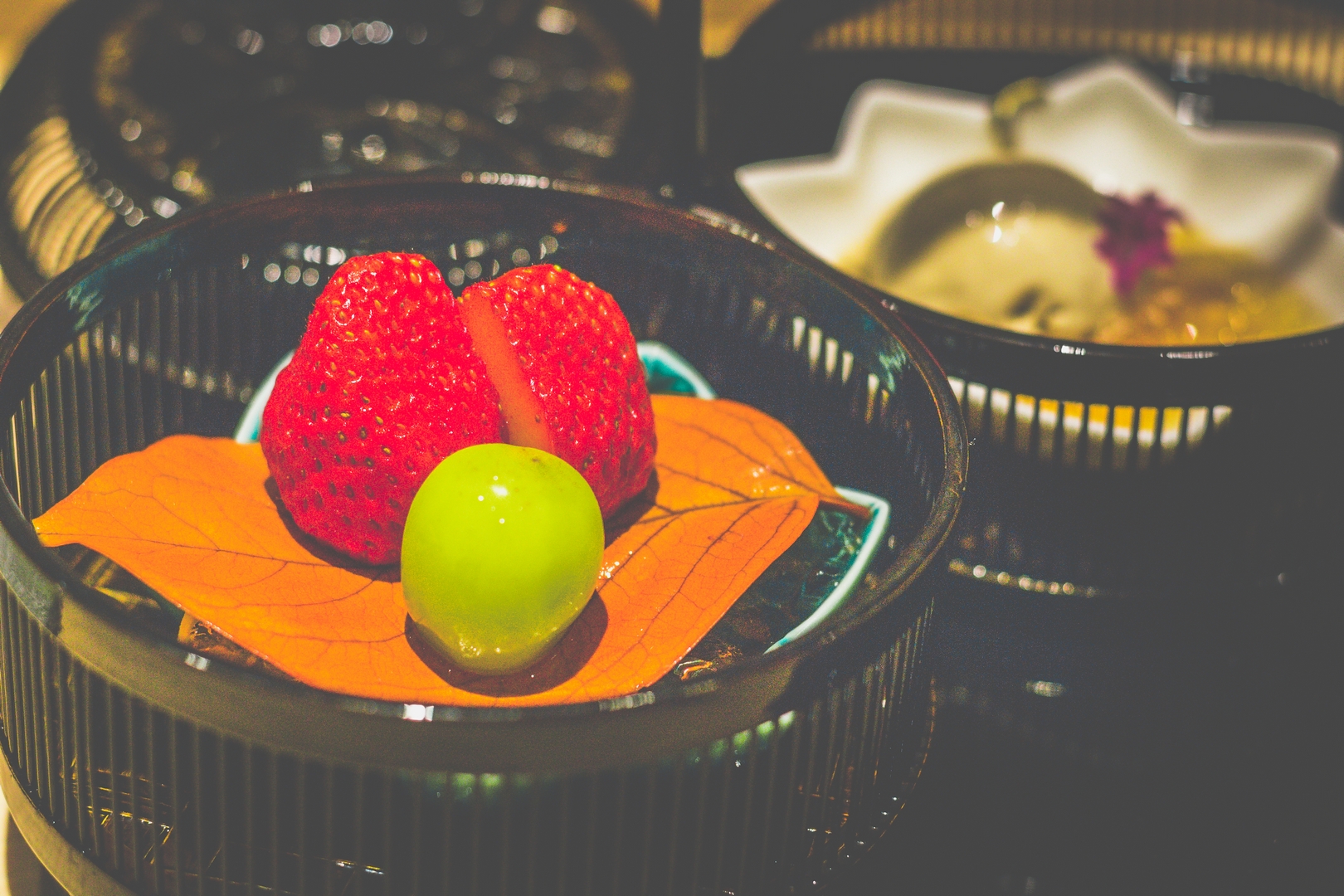
The richness of the ice cream complements the freshness of the strawberries, while the tea’s refined taste adds a layer of depth, creating an indulgent yet light finish to the meal. This dessert beautifully marries the natural sweetness of strawberries with the unique, sophisticated flavors of Kaga Bocha, offering a satisfying and memorable conclusion to the dining experience.
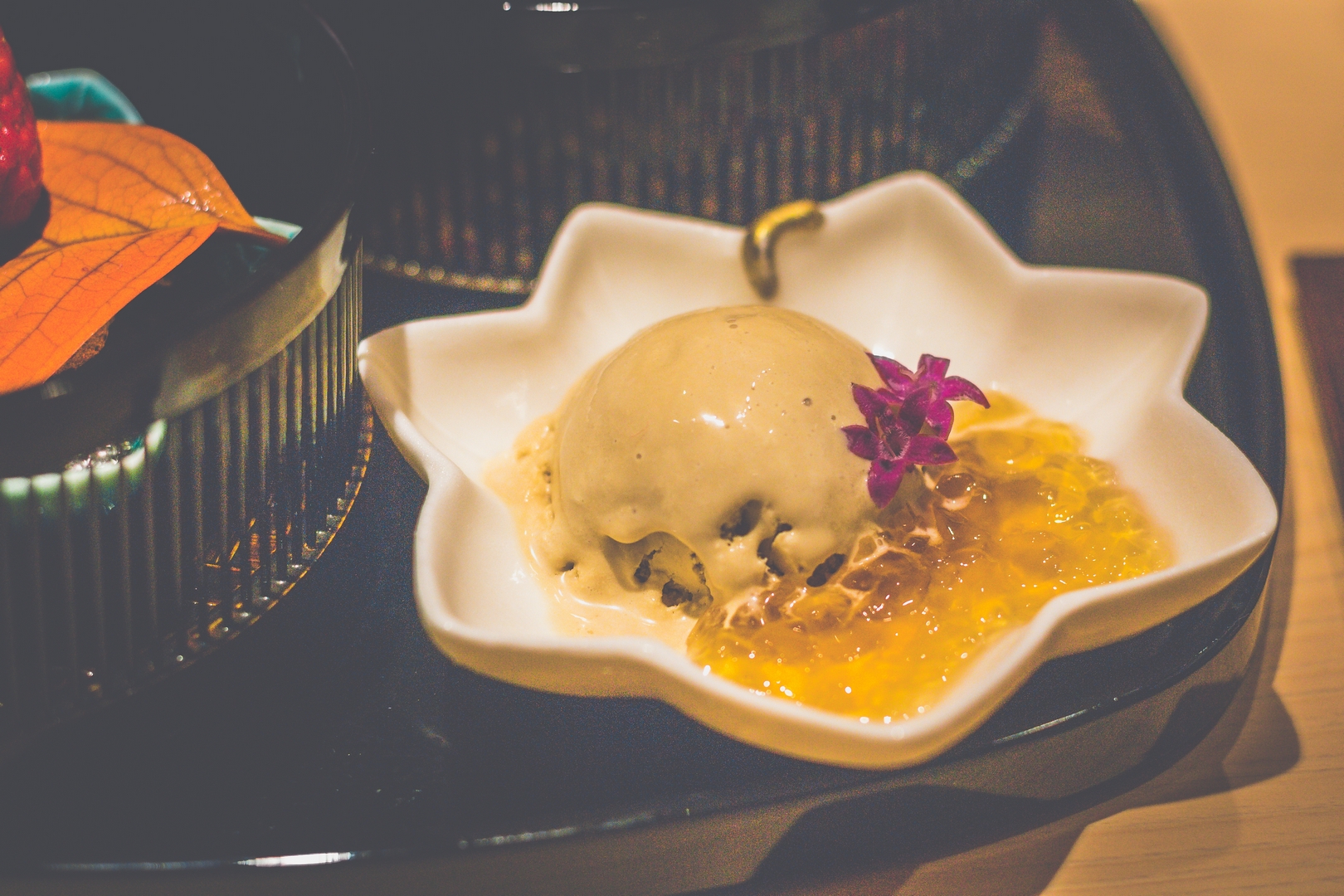
If Araya, with its compelling storytelling, can earn a Michelin star, then surely Ikkagoyo, with its even more immersive storytelling and respect for the artisanal process, why not?
iKKAGOYO 一花五葉
115 Amoy St, #01-04, Singapore 069935
Tel: 8457 8732
You May Also Like

العربية
December 18, 2018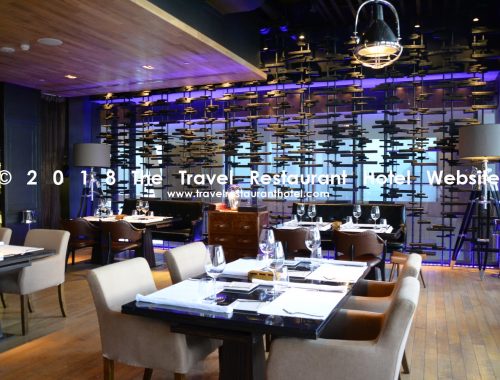
Elements, The Okura Prestige, Bangkok
April 2, 2019